International Marketing Shlykov O. V. – Ph. D

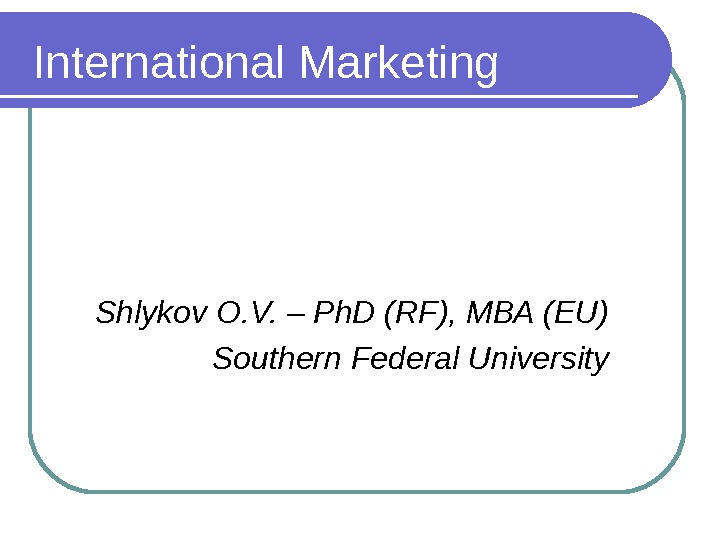
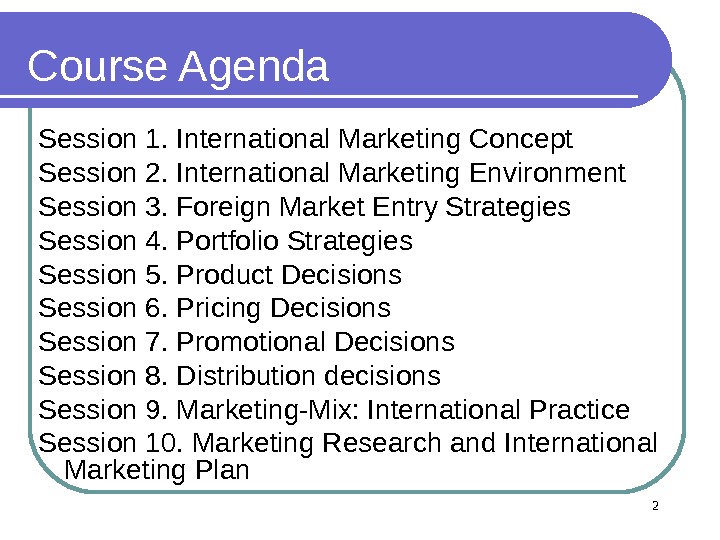
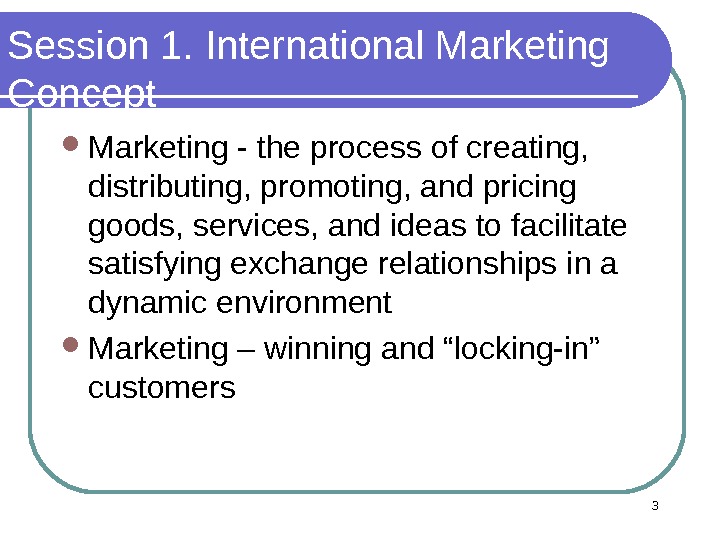
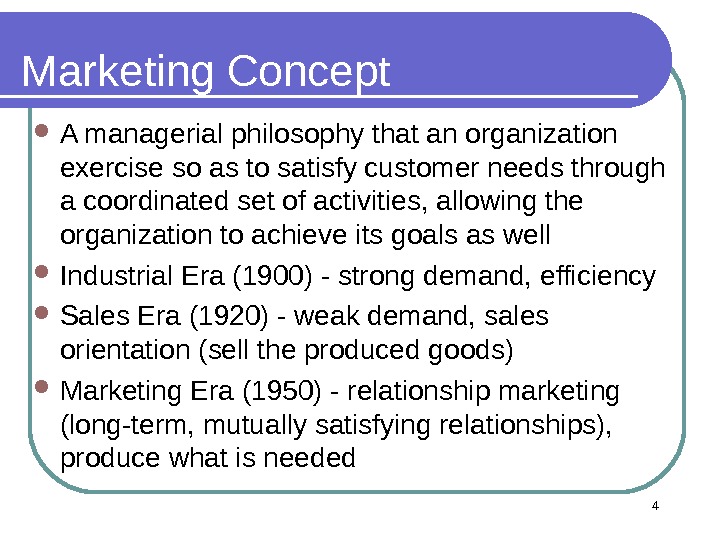
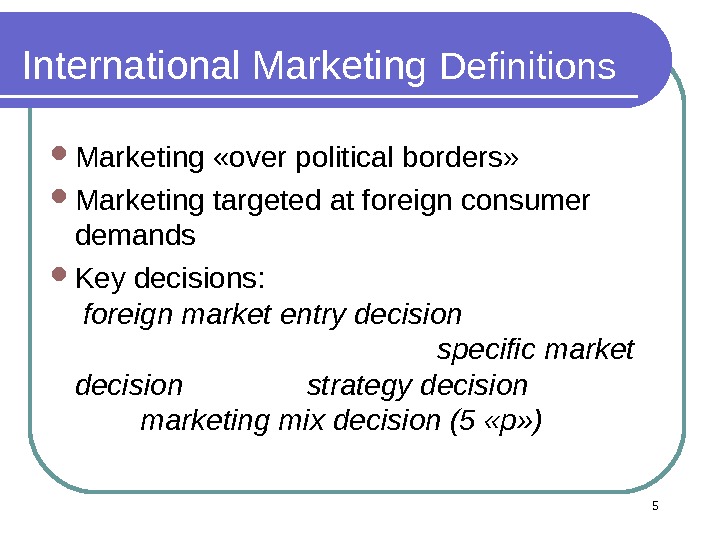
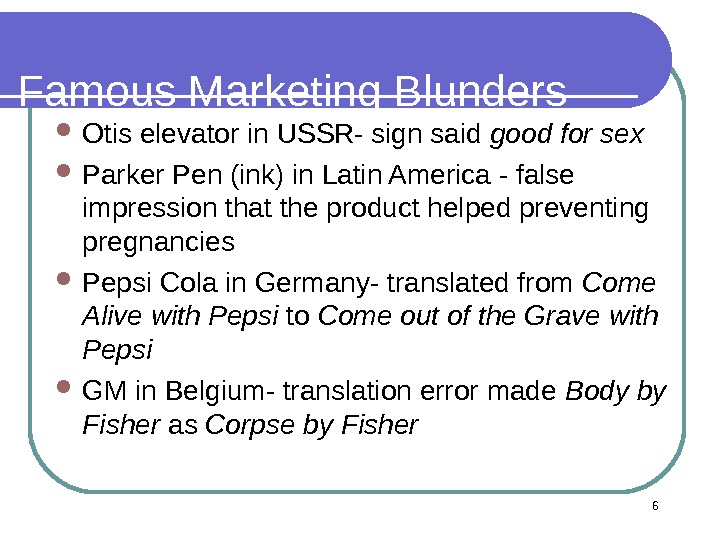
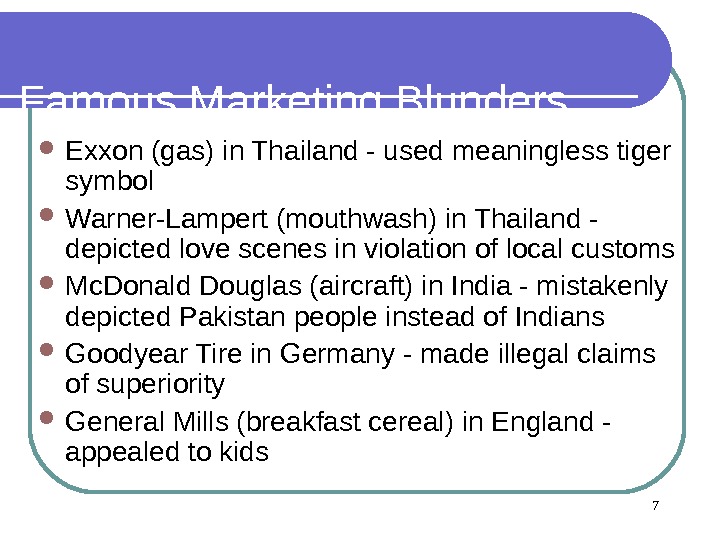
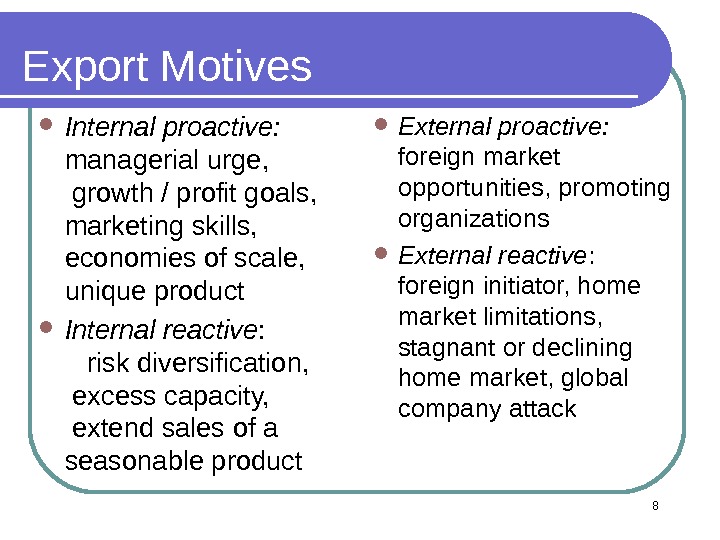

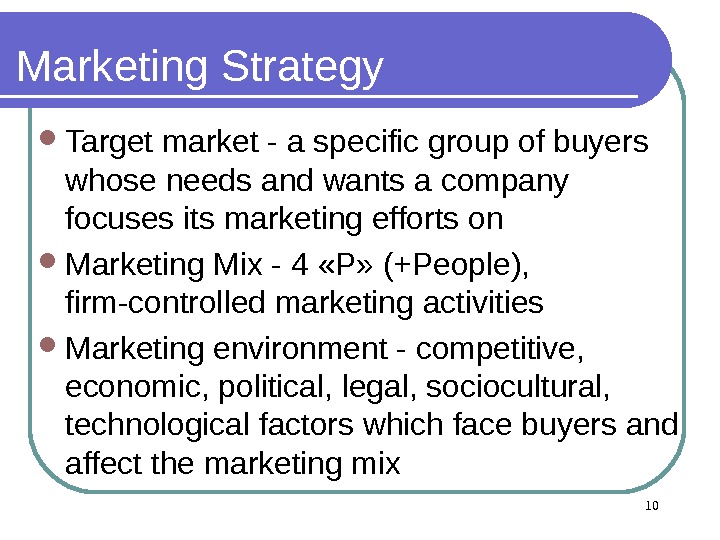
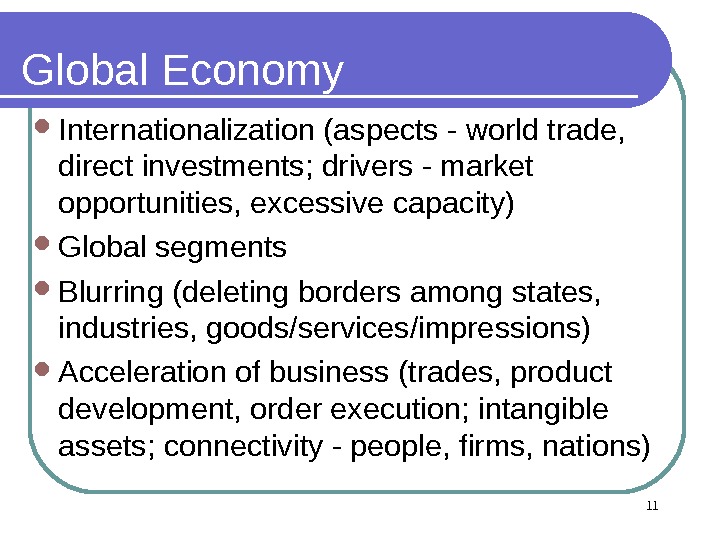
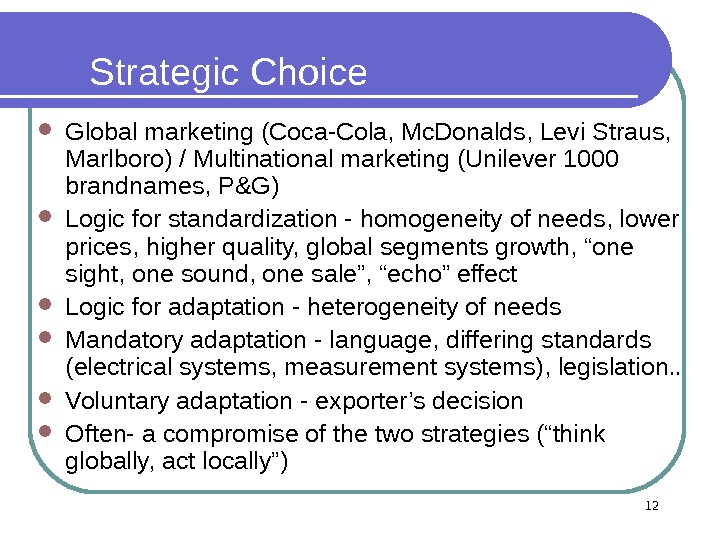
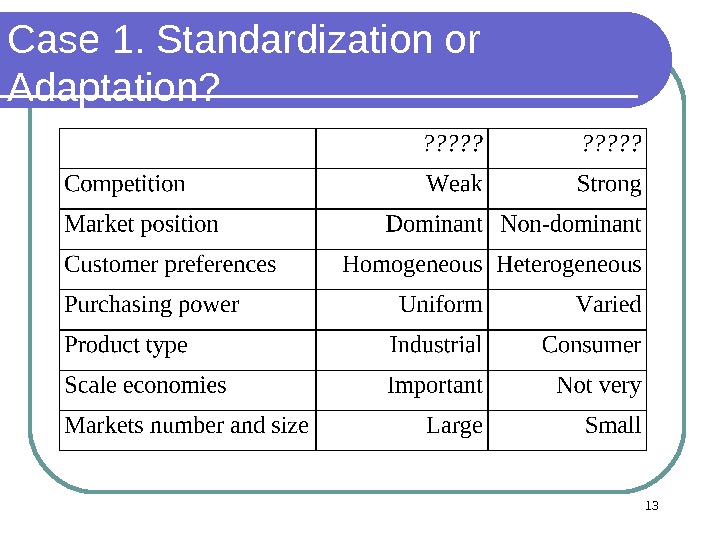
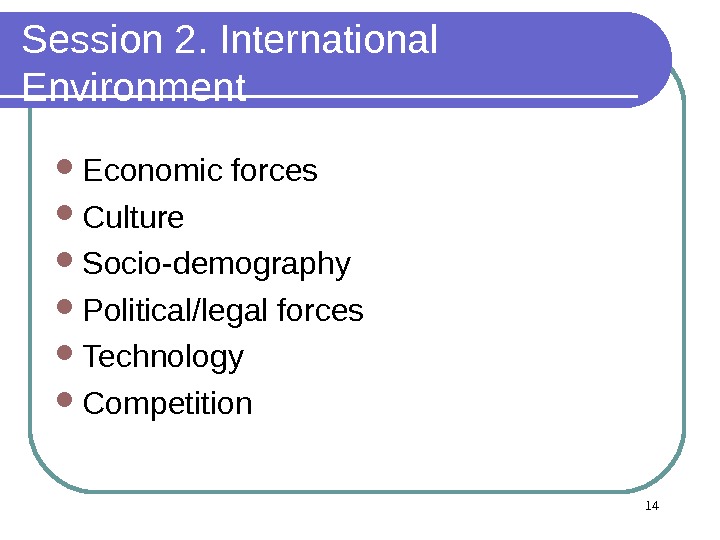
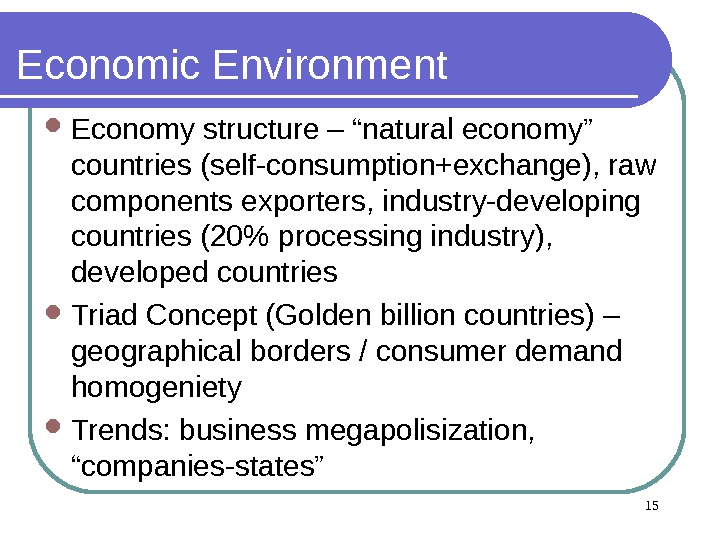
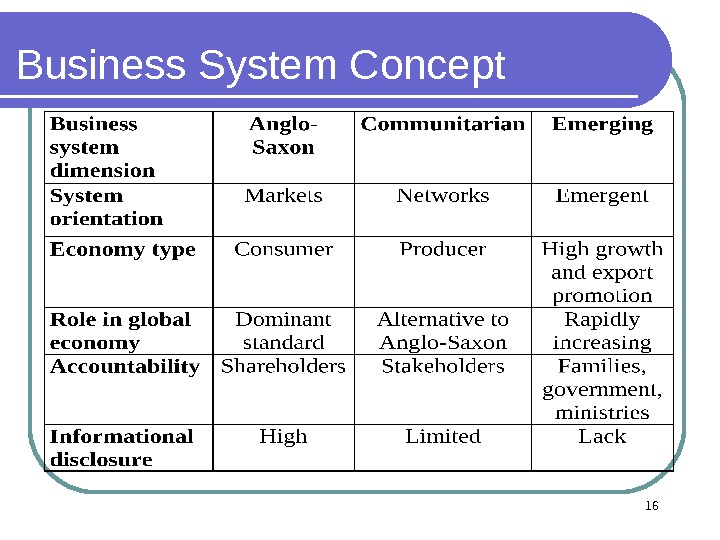
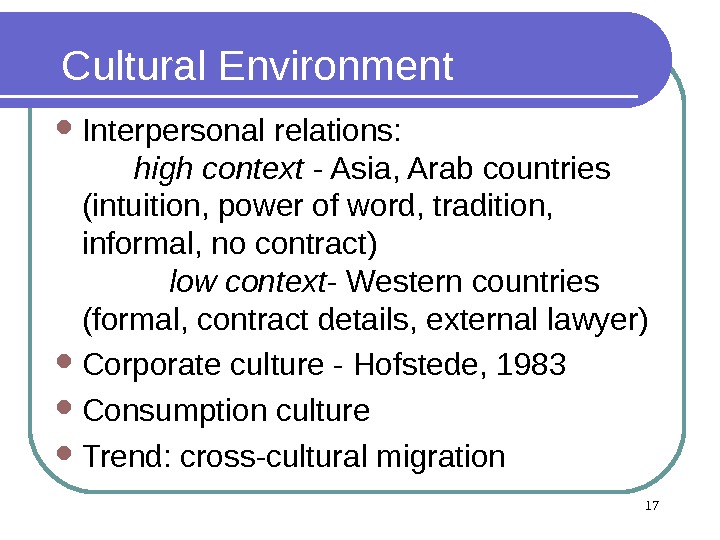
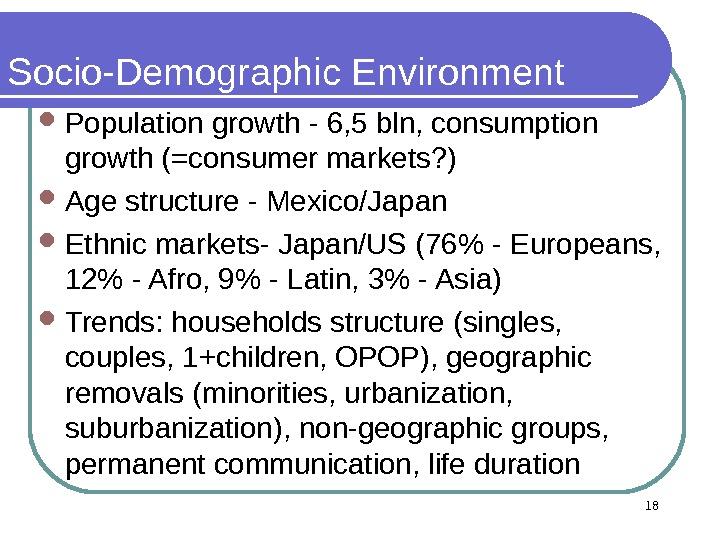
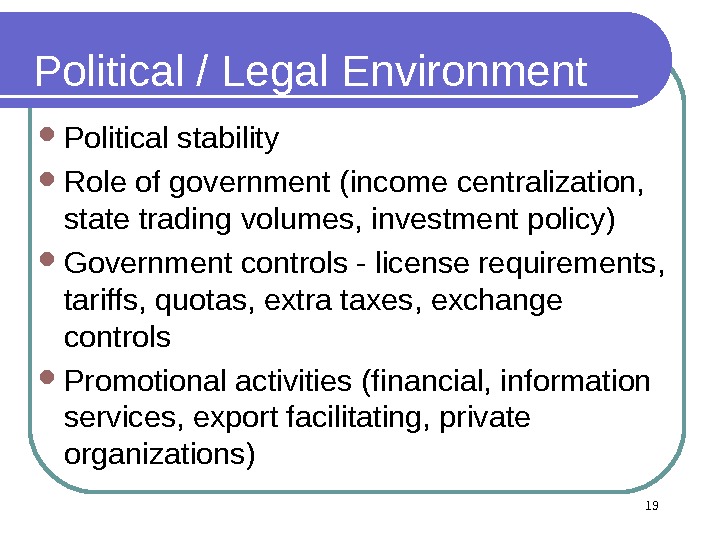
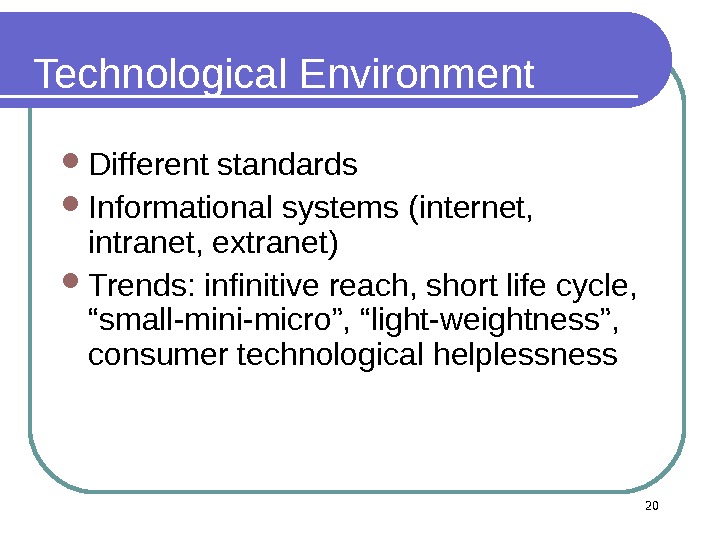
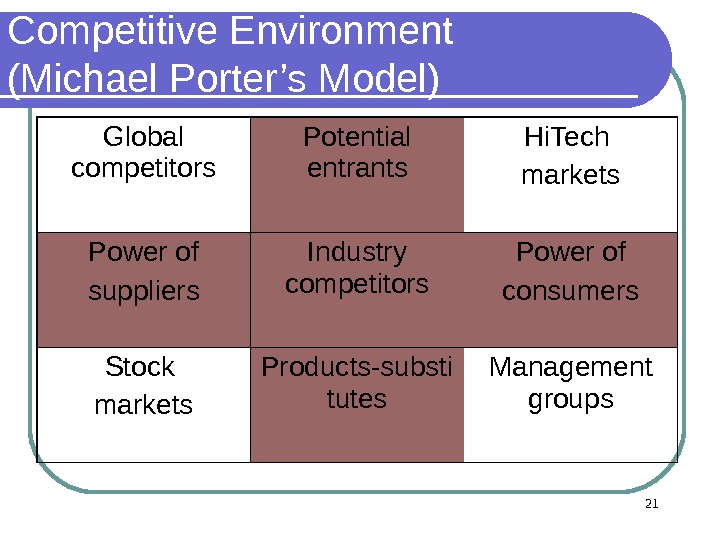
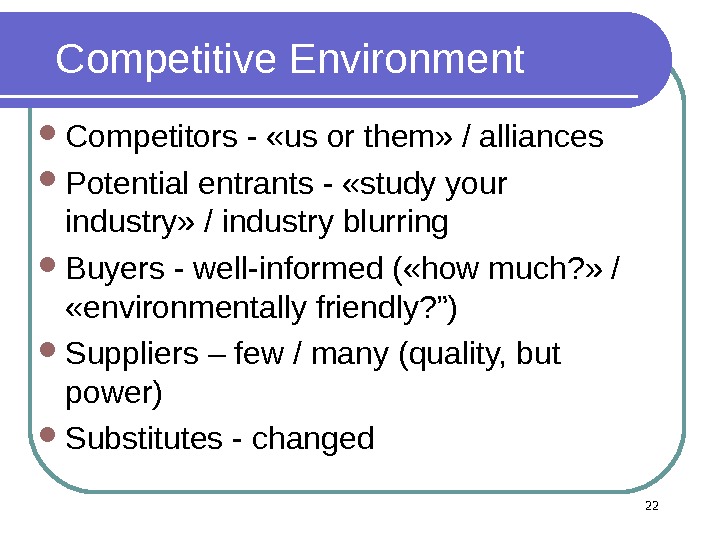
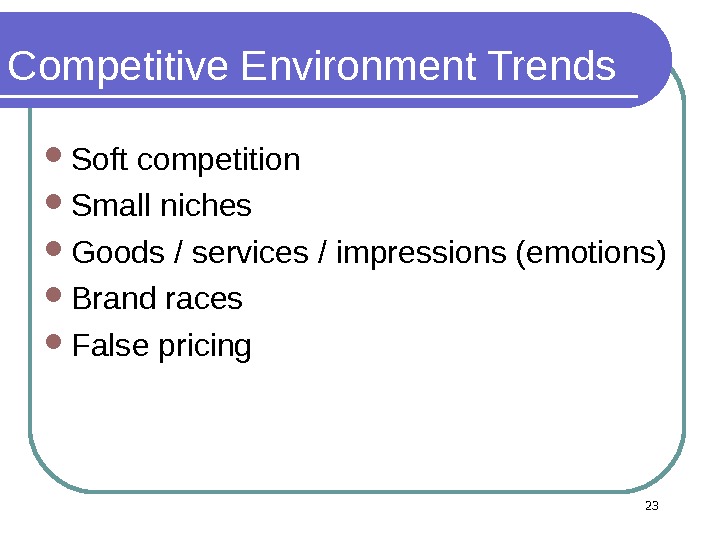
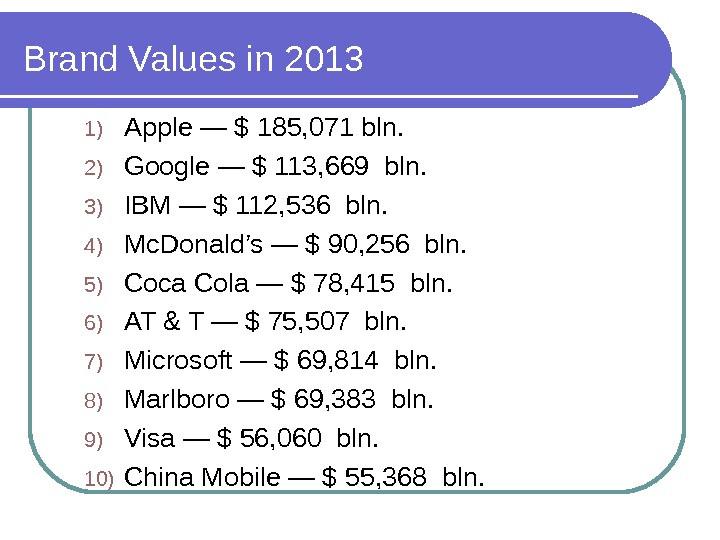
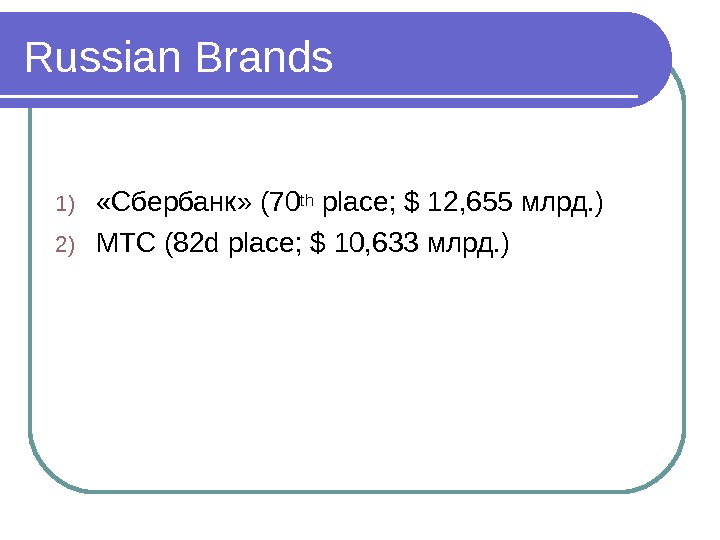
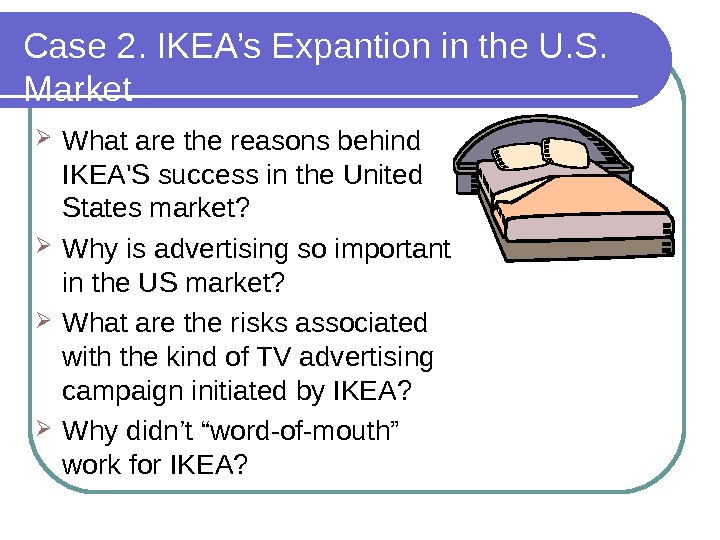
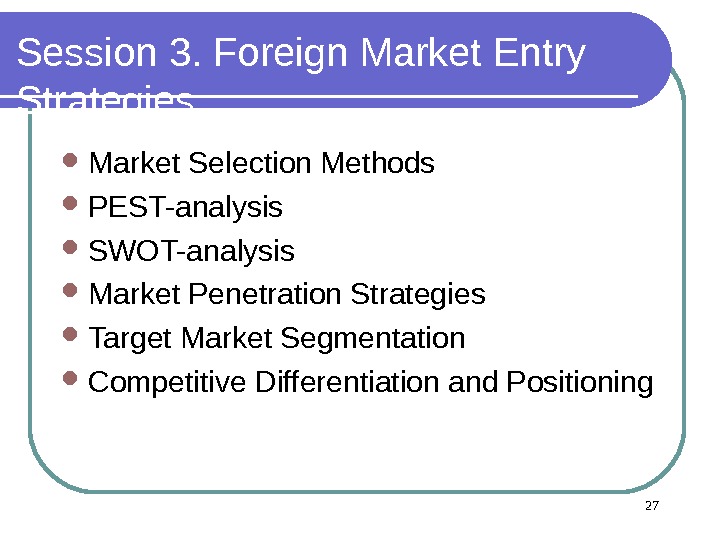
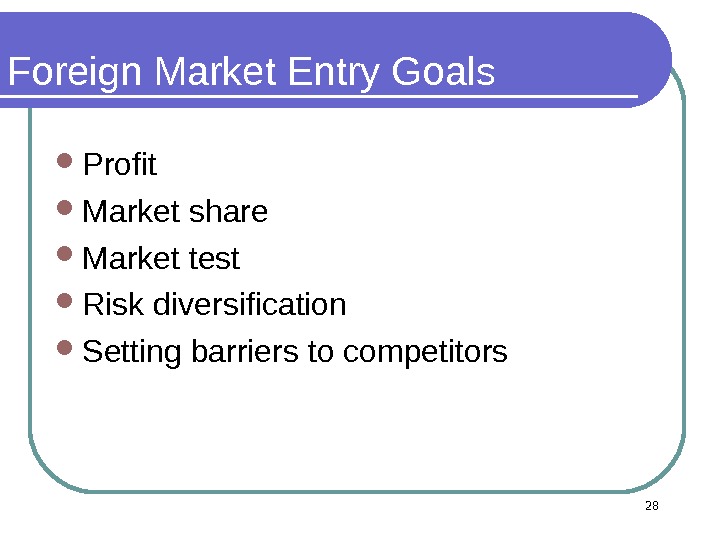
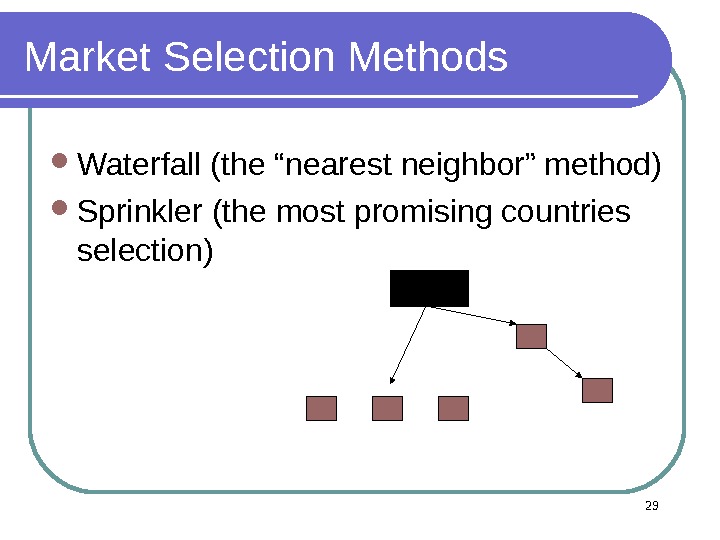
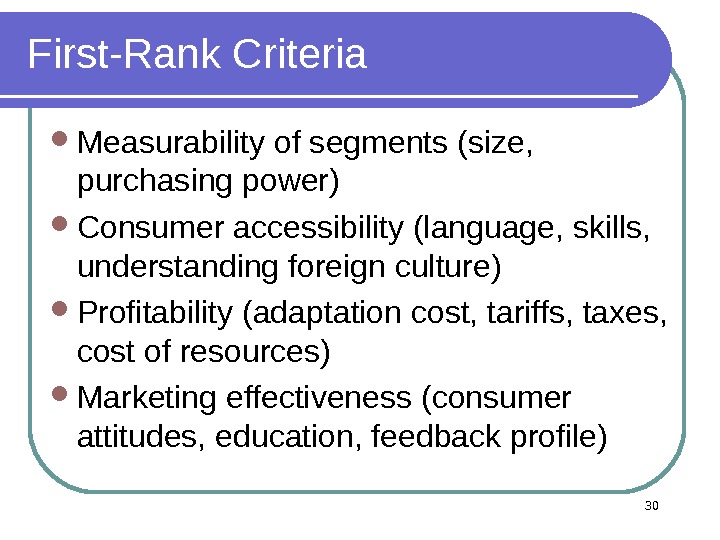
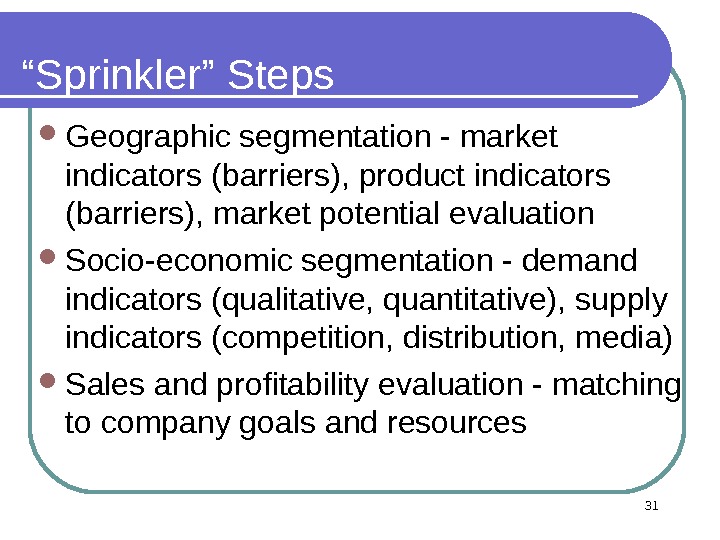
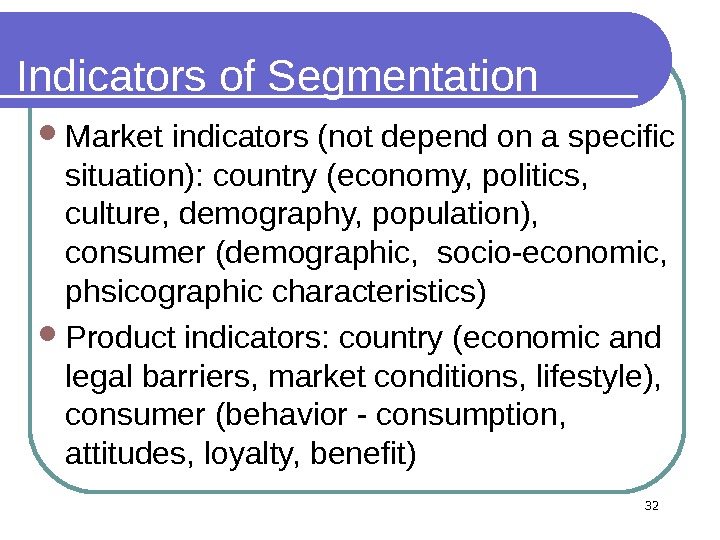
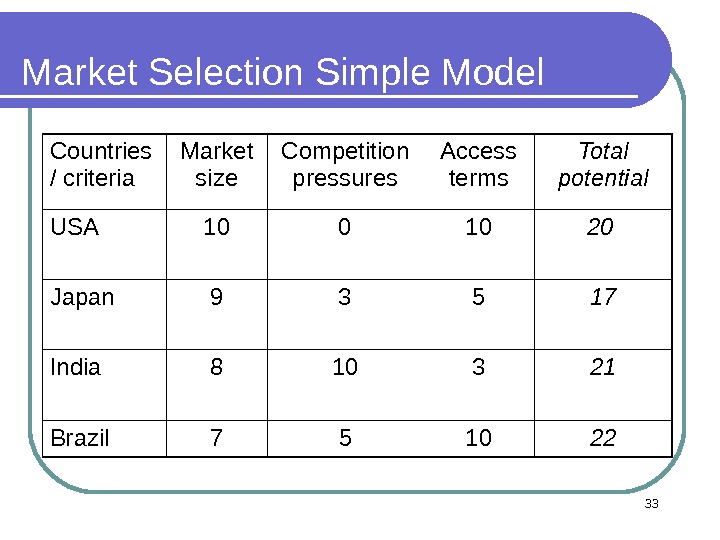
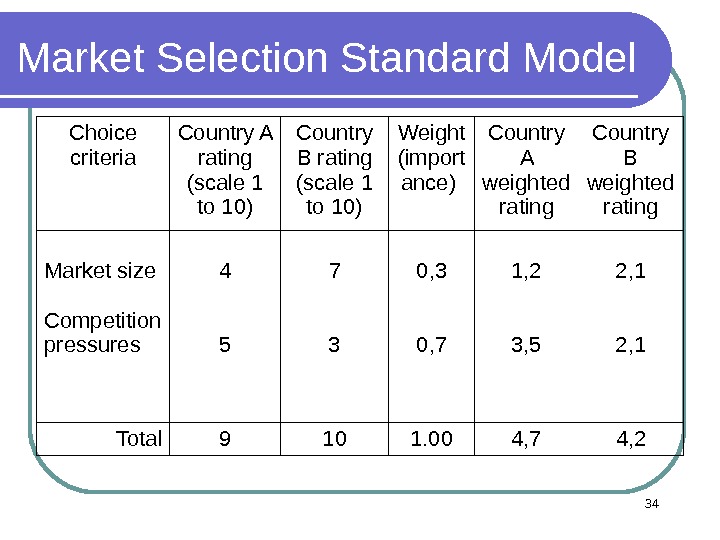
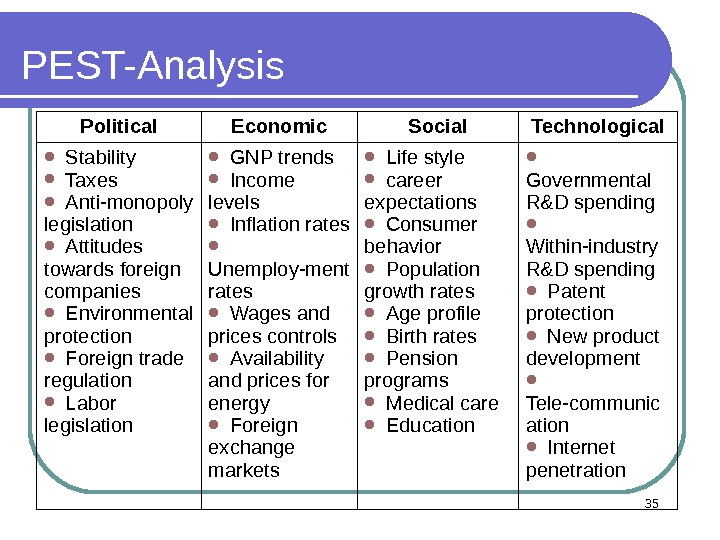
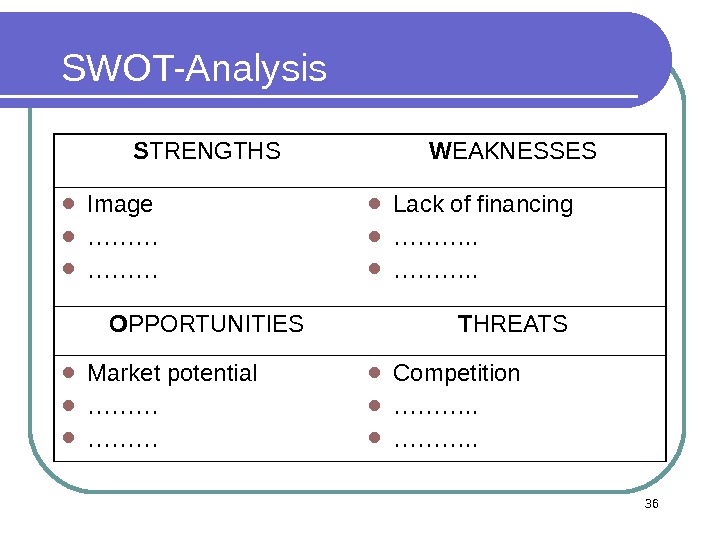
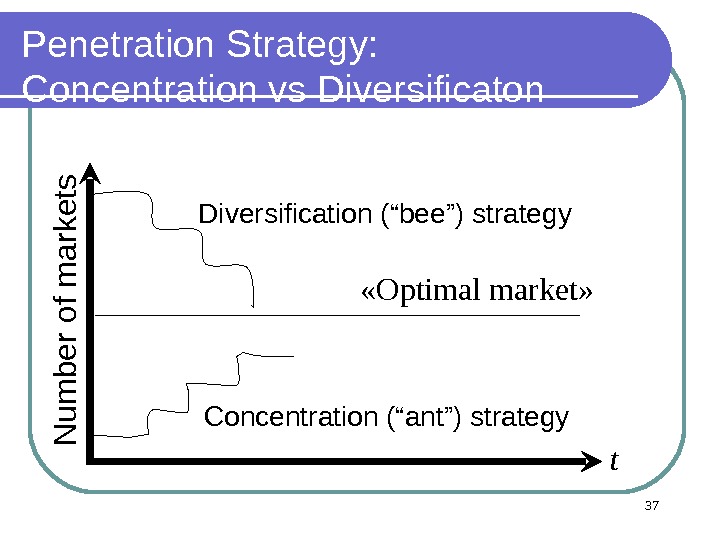
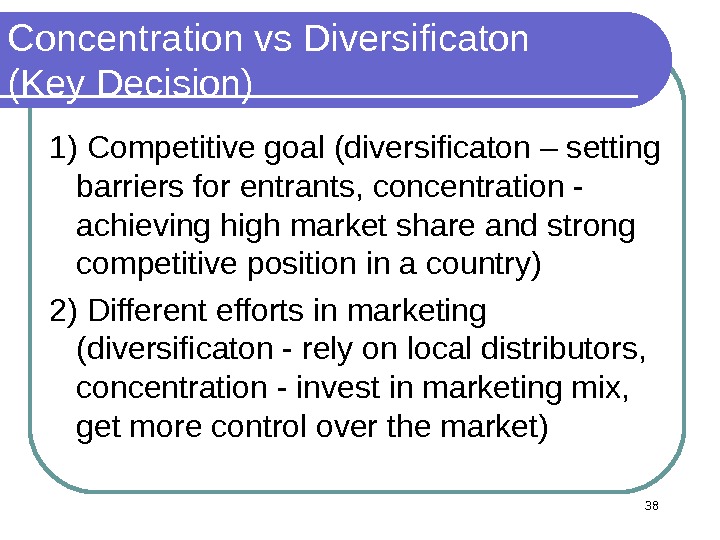
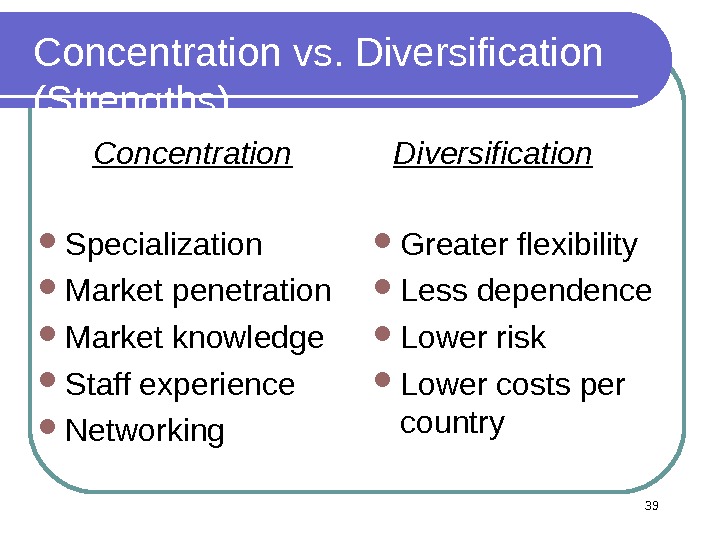
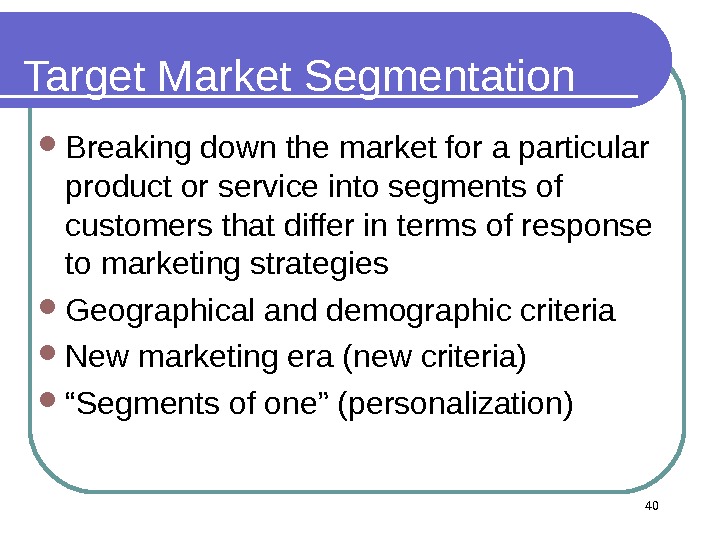
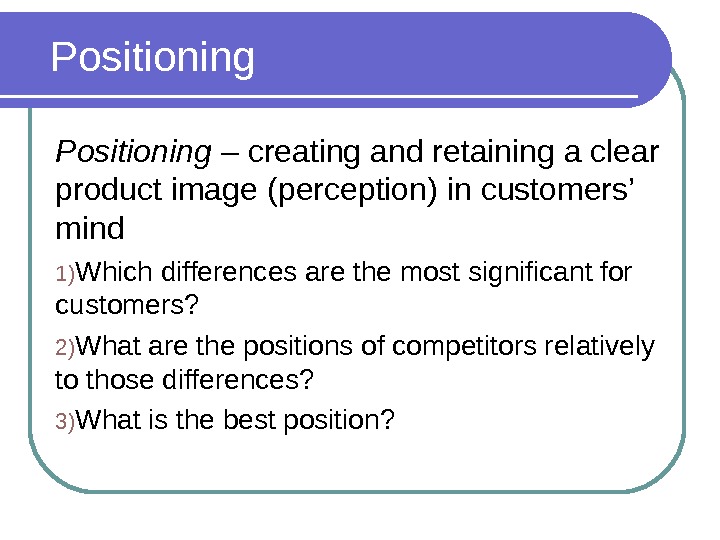
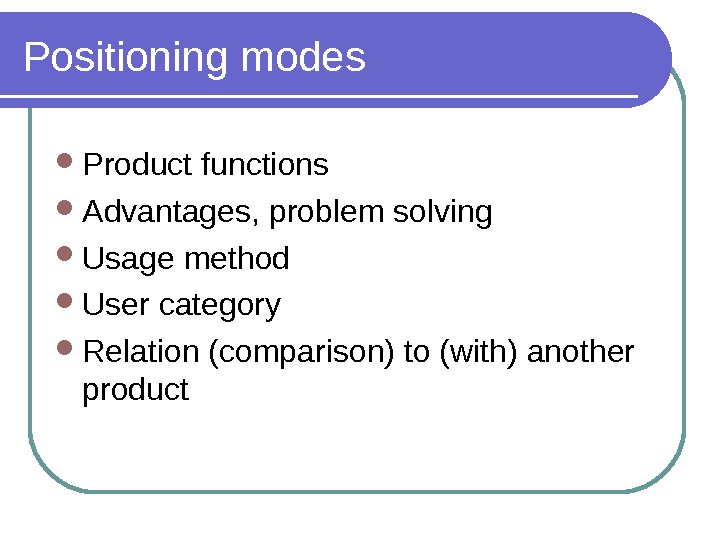
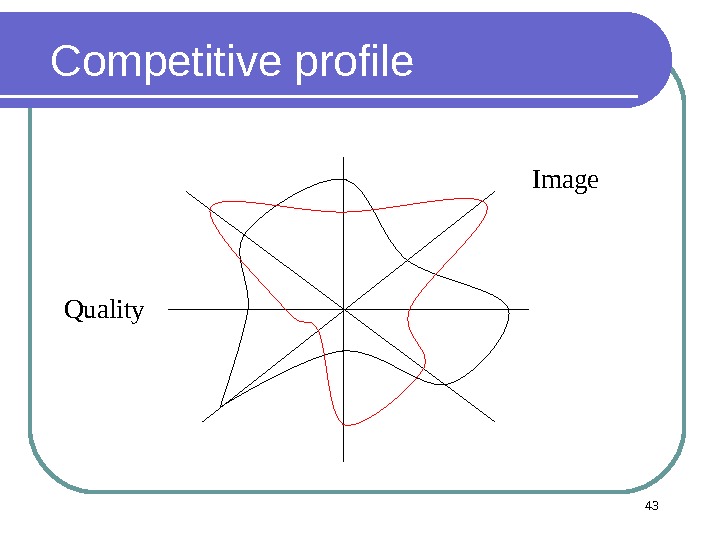
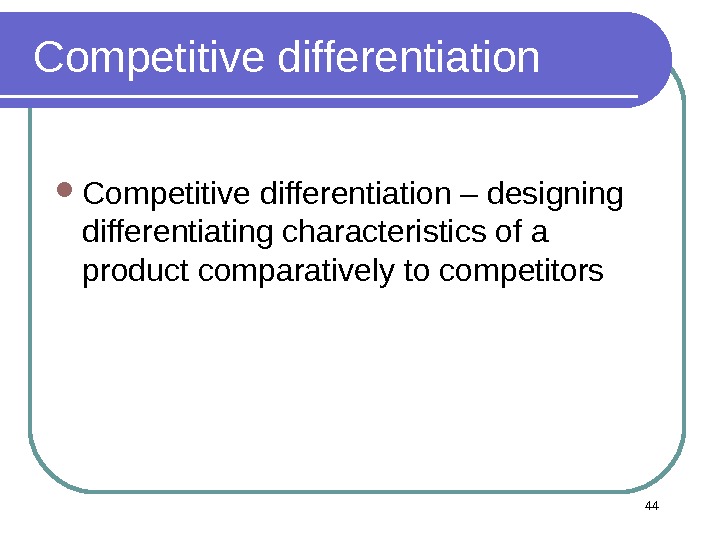
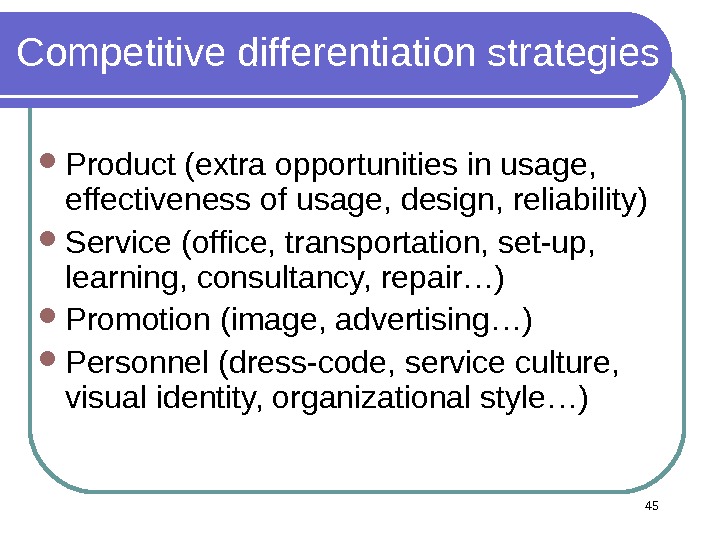
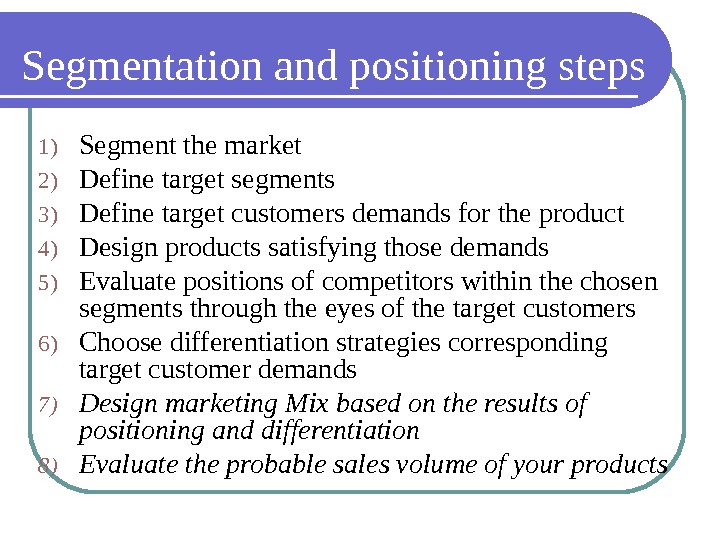
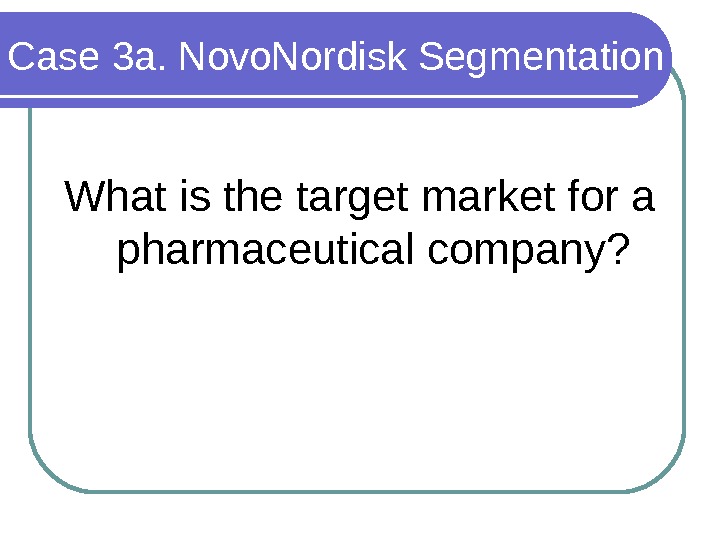
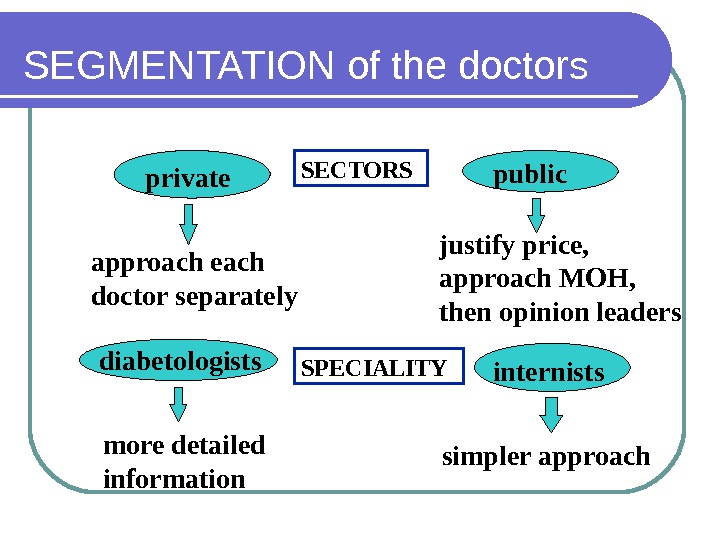
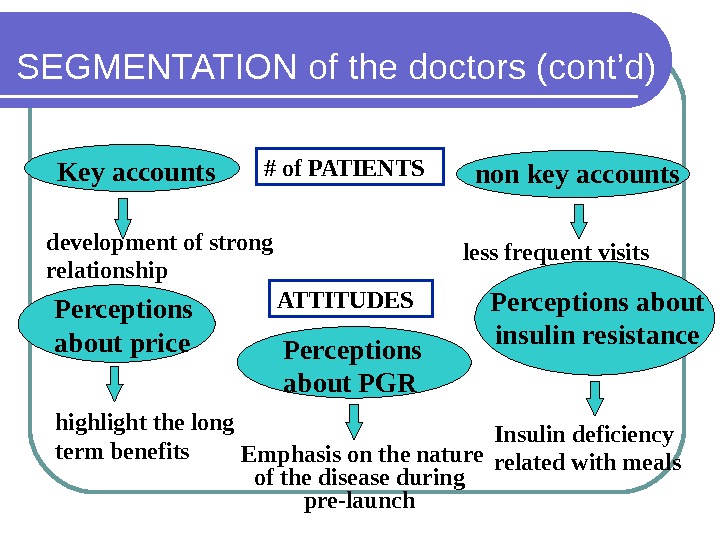
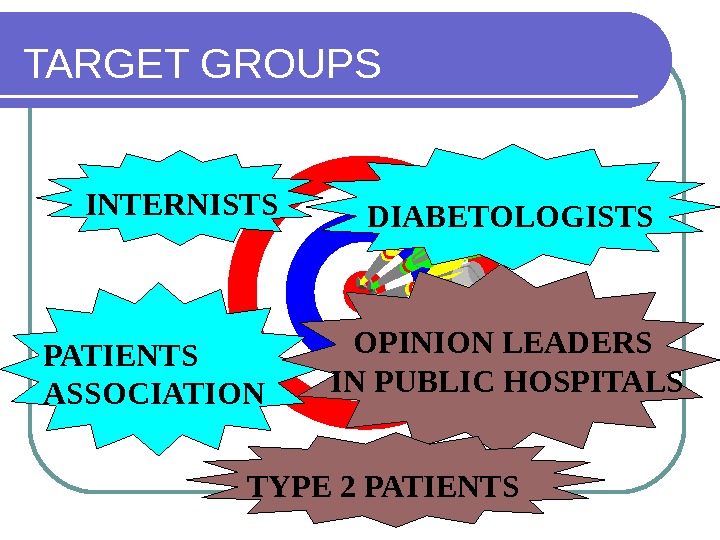
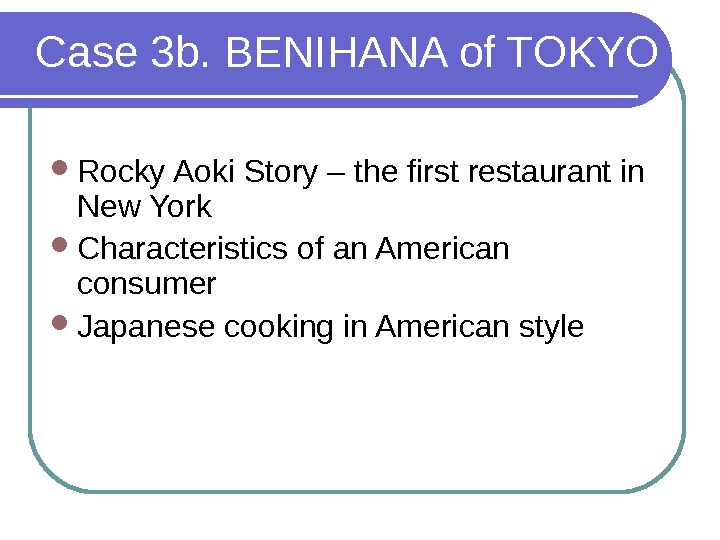
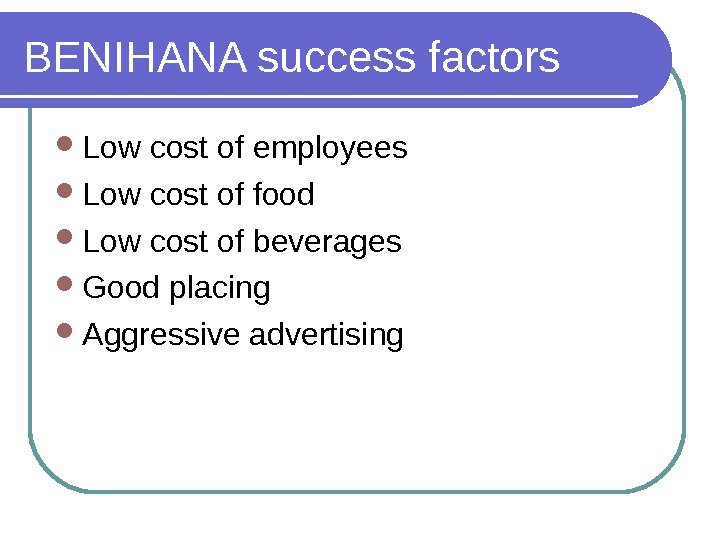
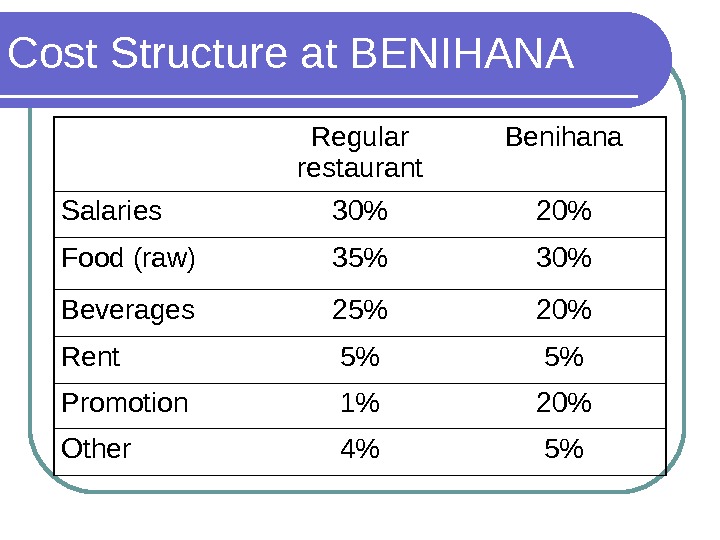
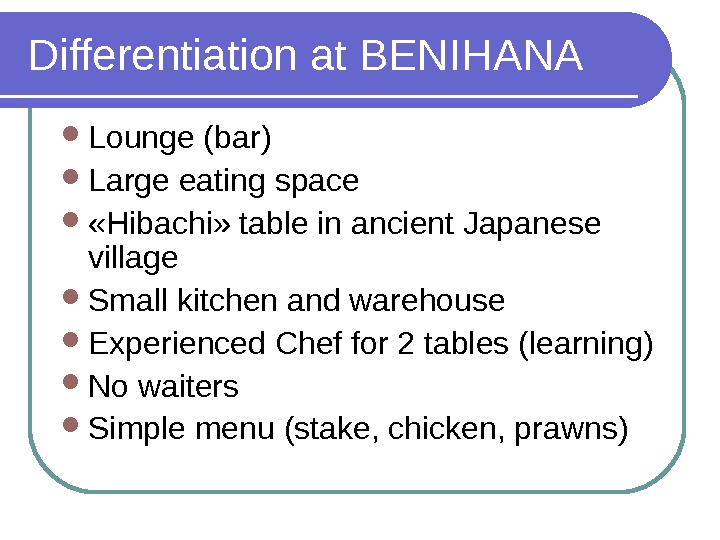
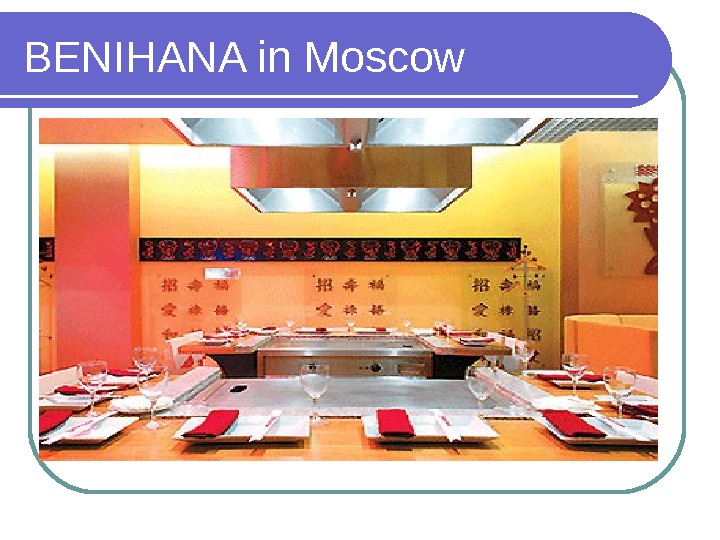

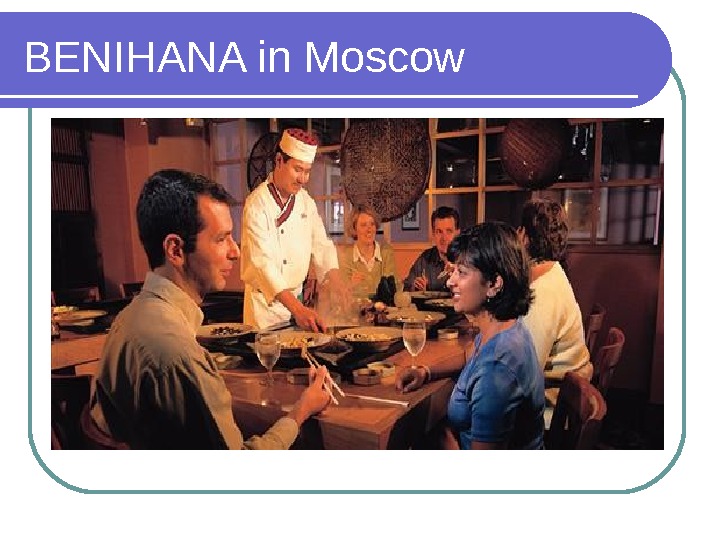

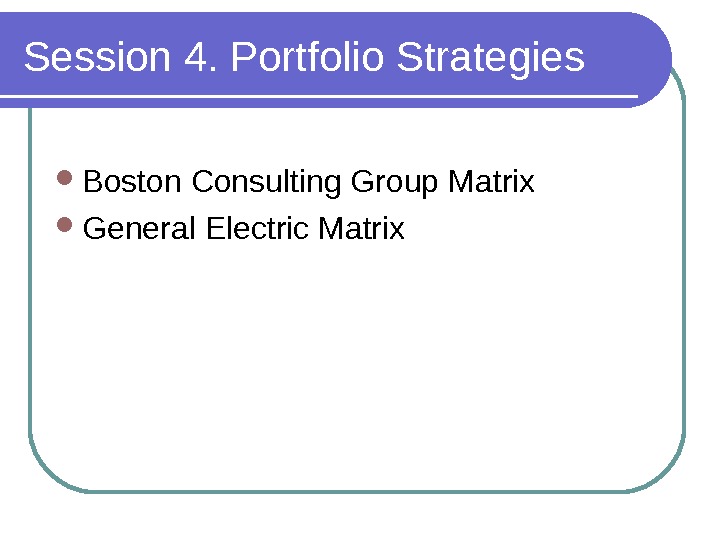
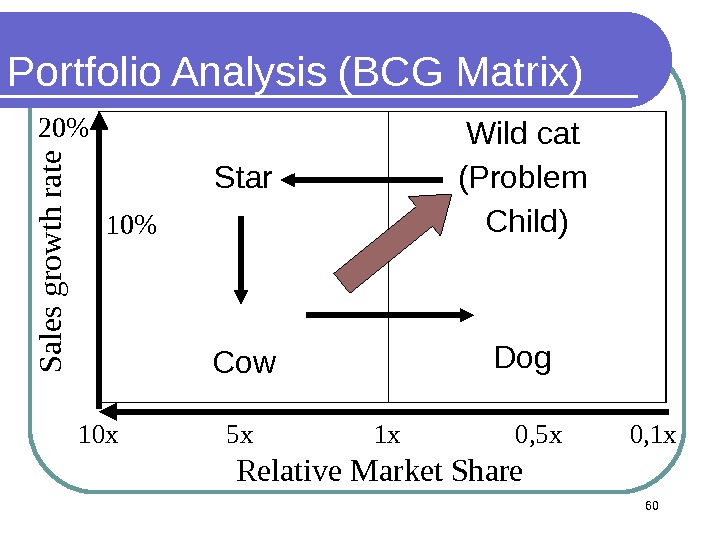
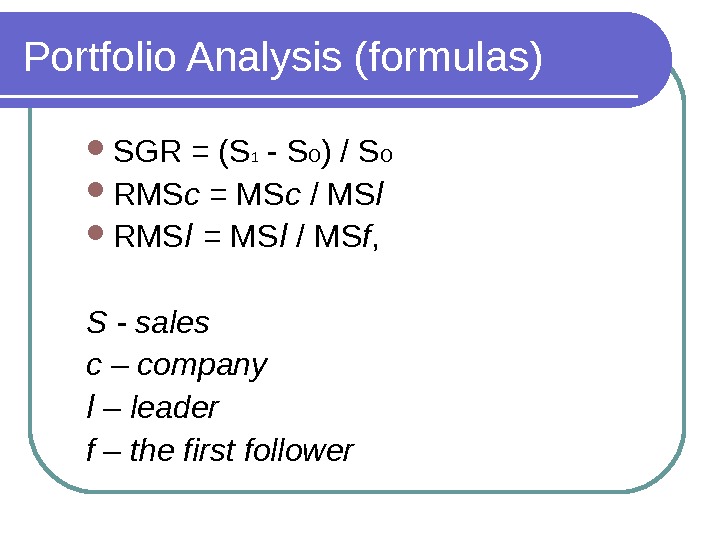
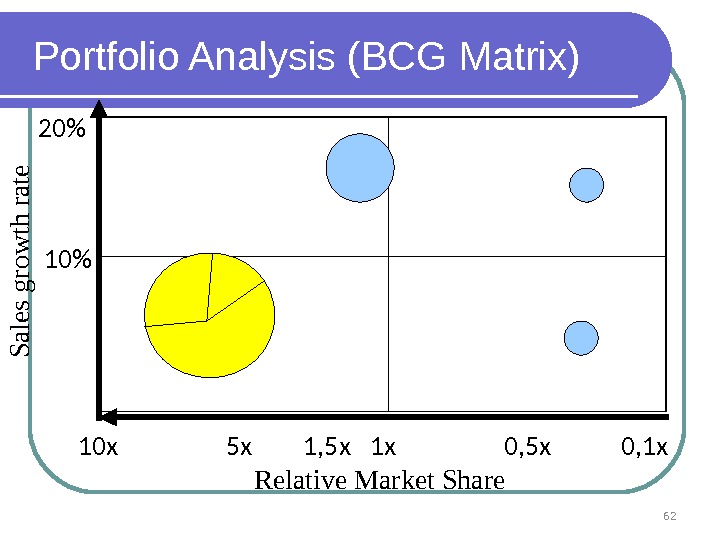
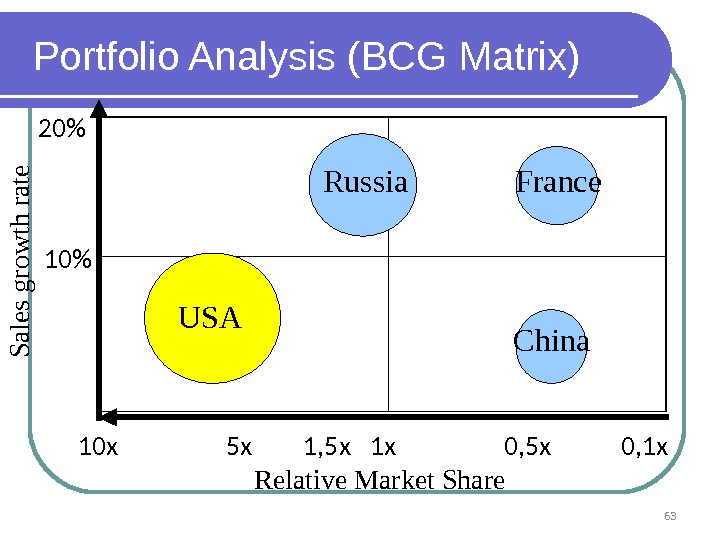
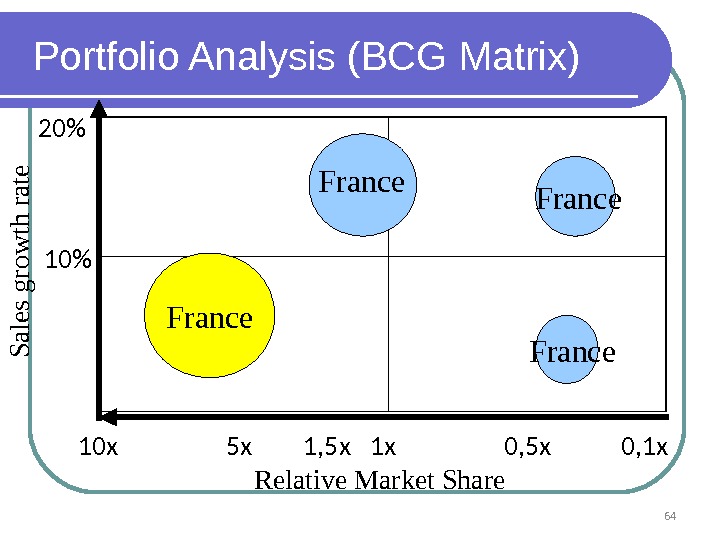
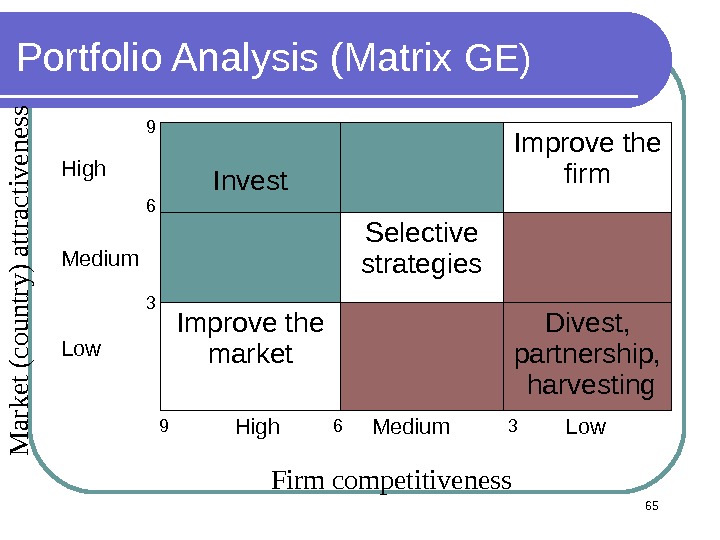
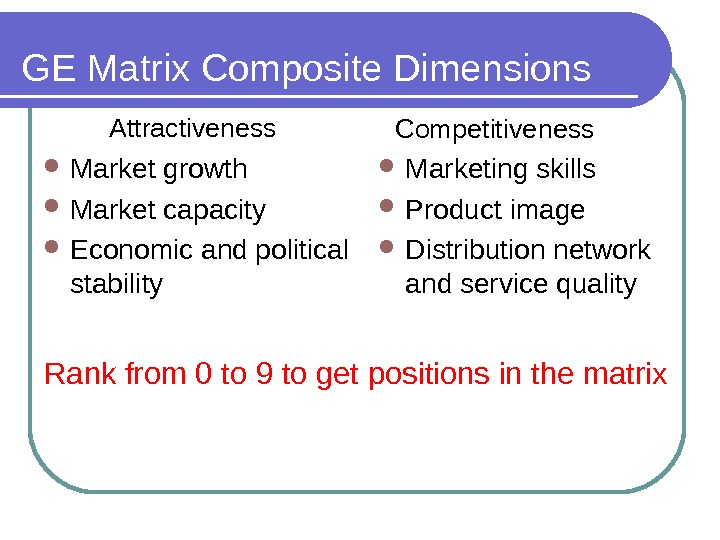
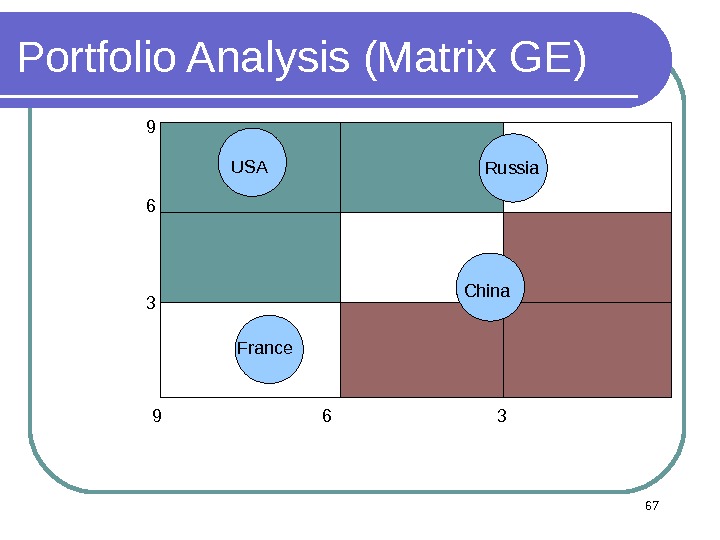
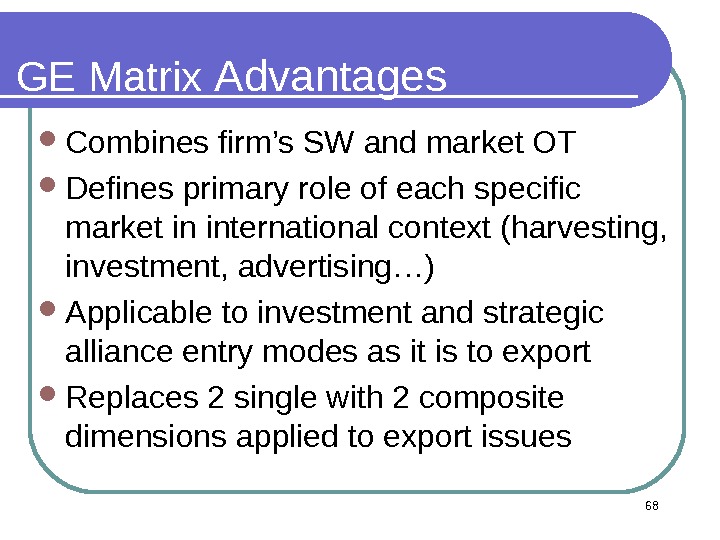
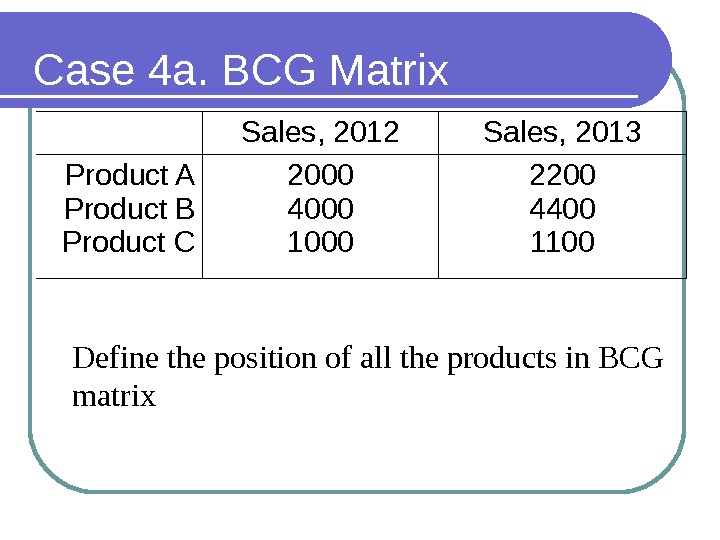
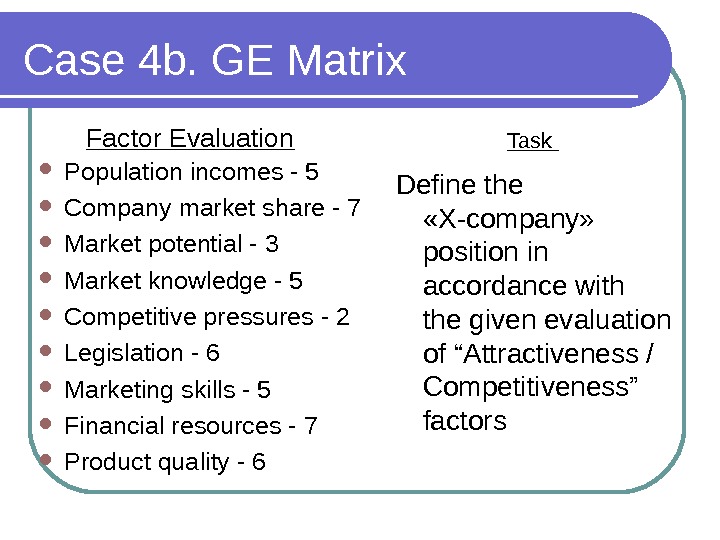
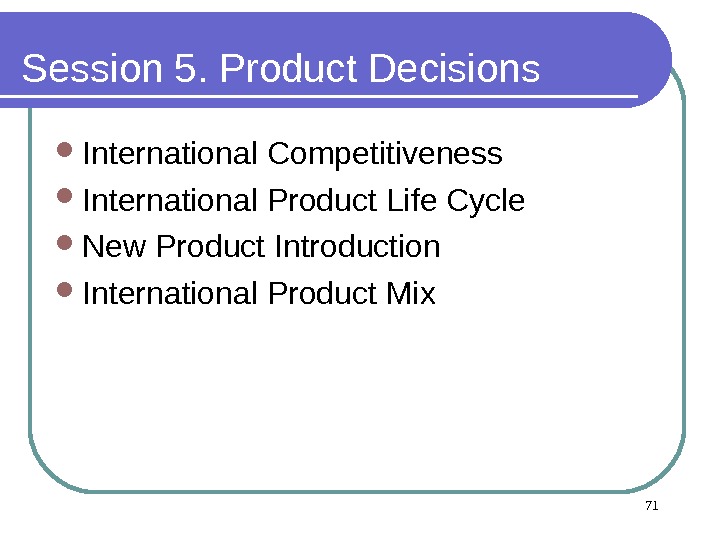
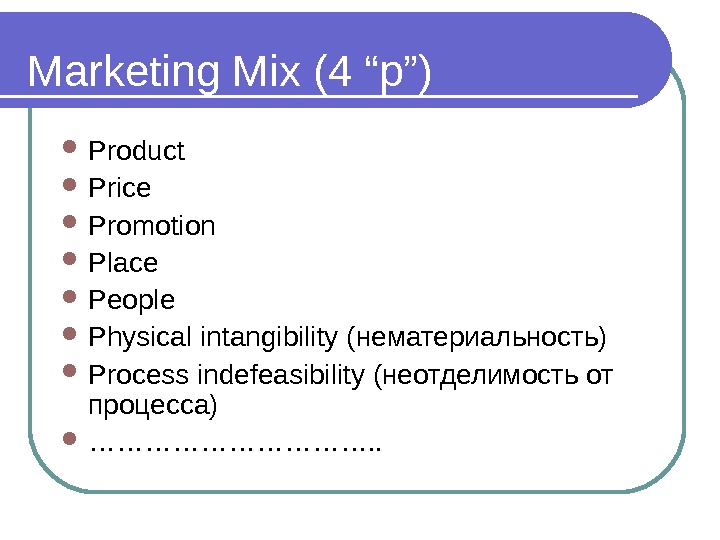
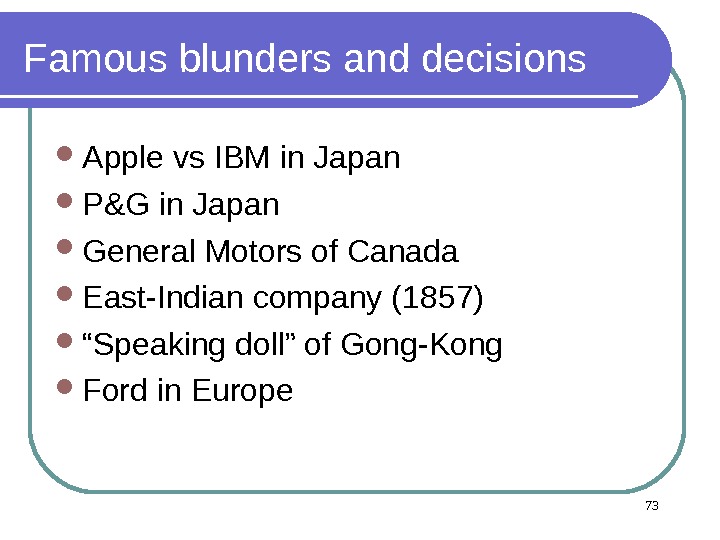
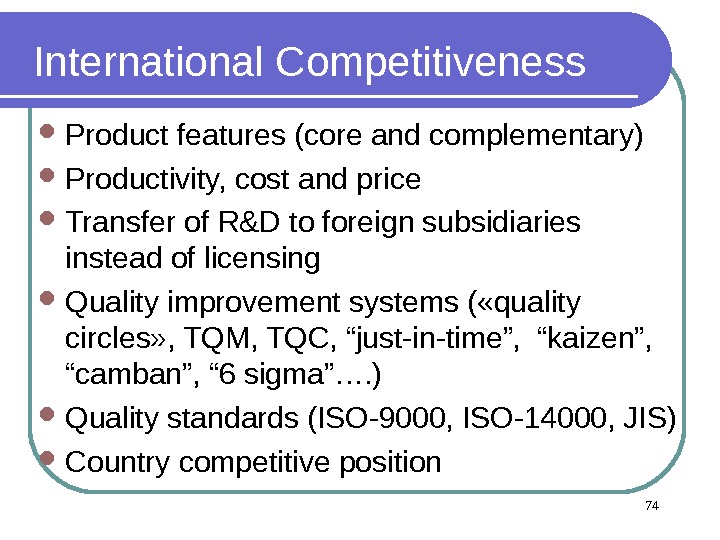
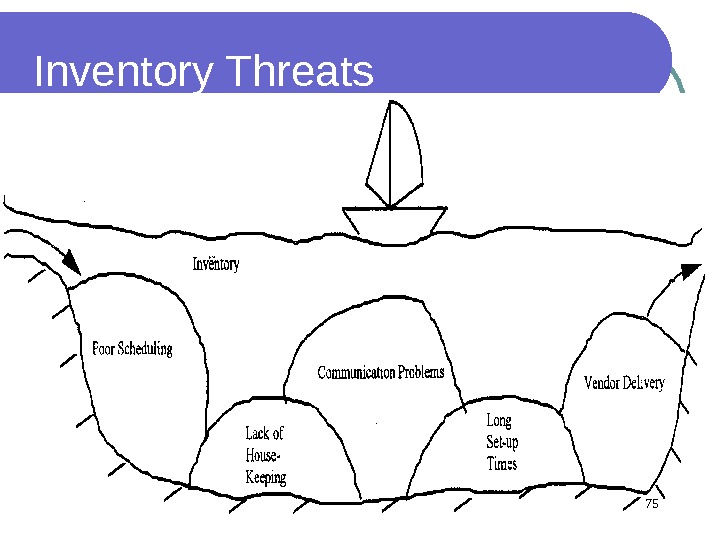
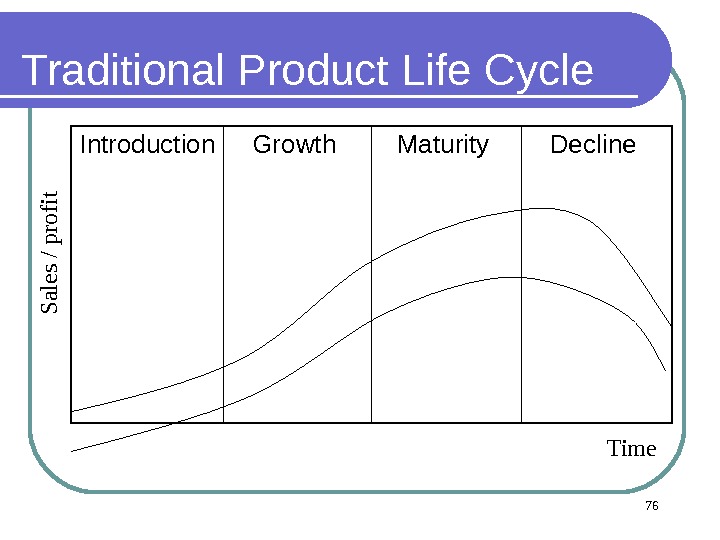

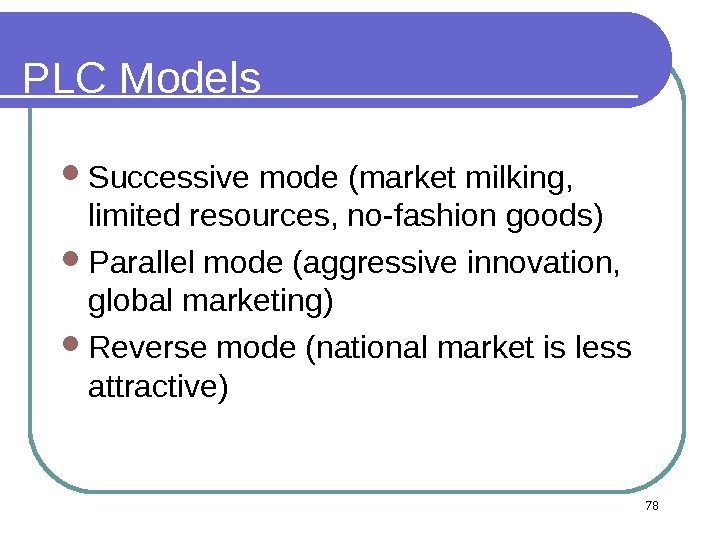
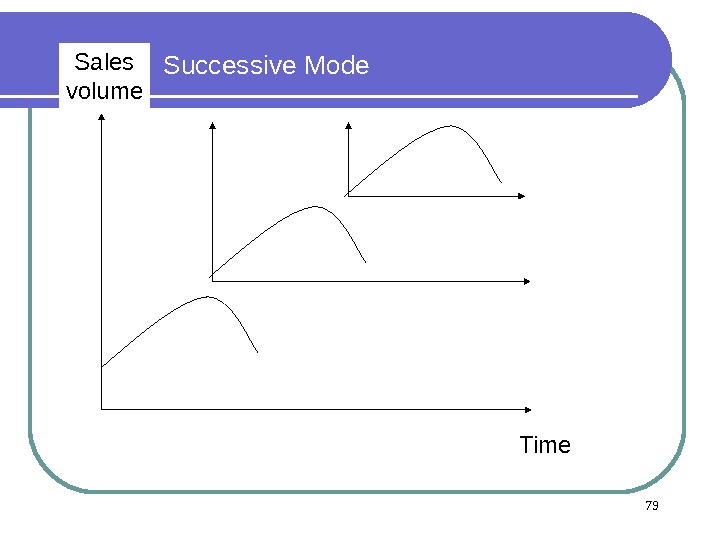
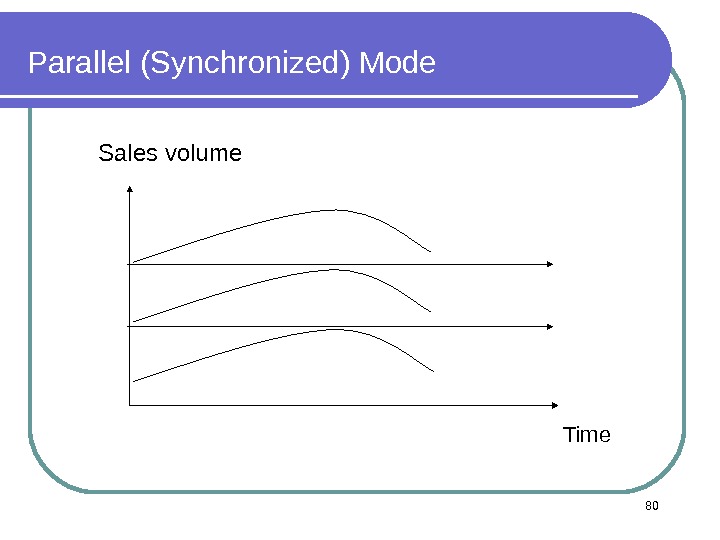

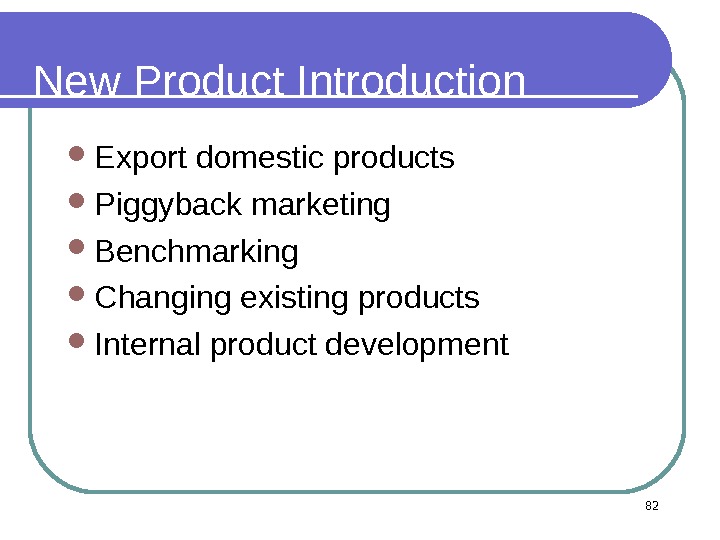
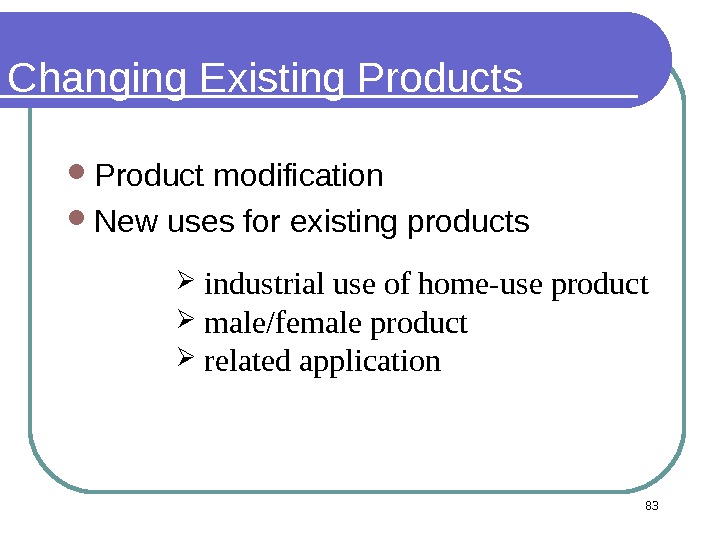
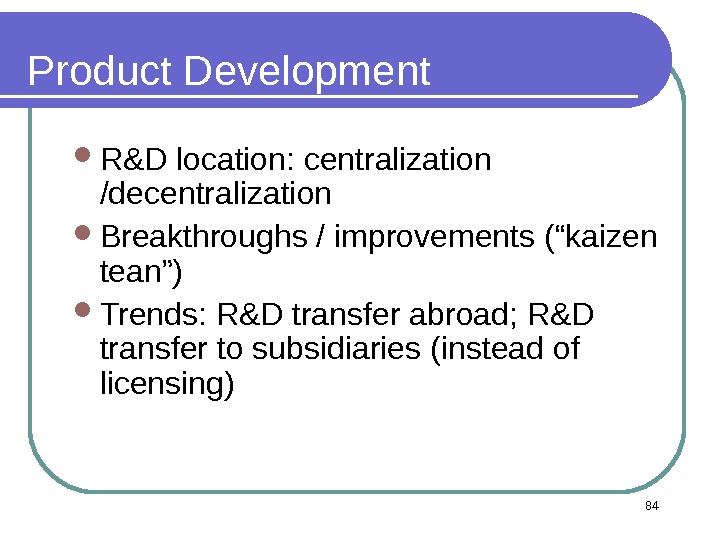
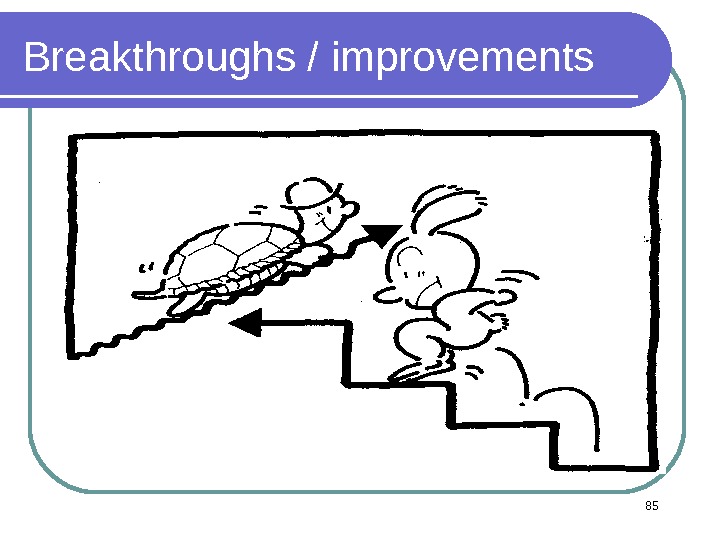
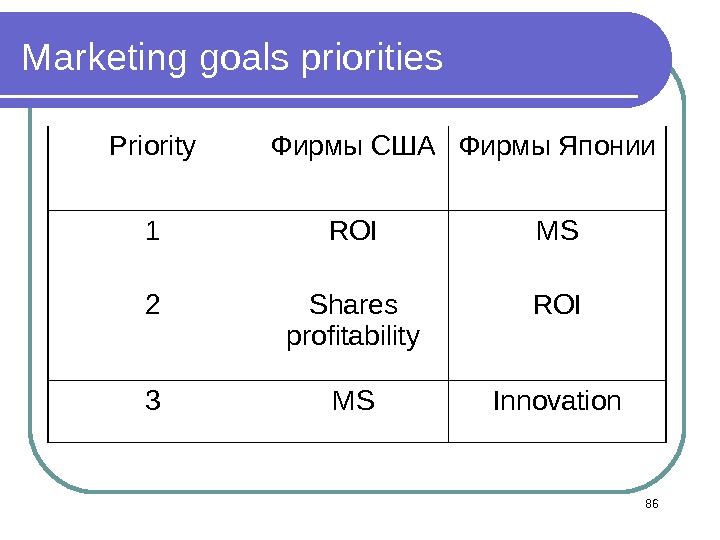
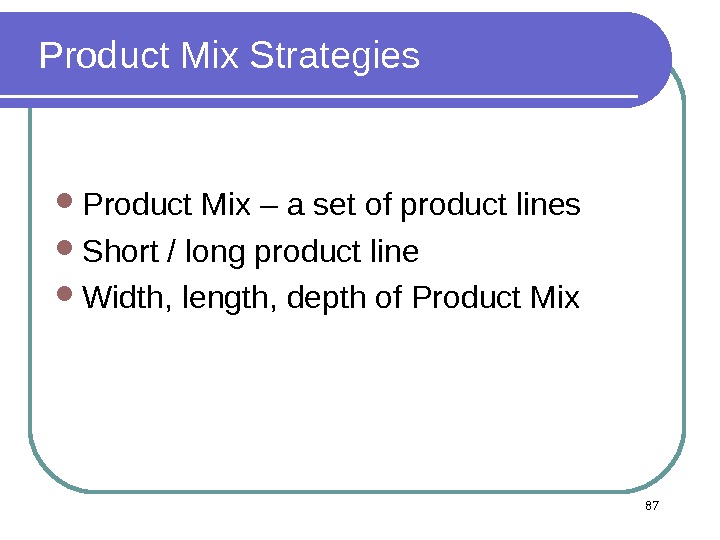
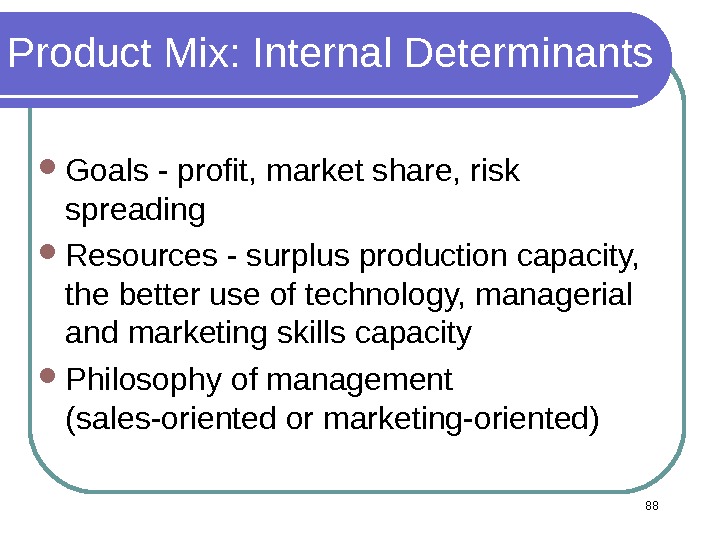
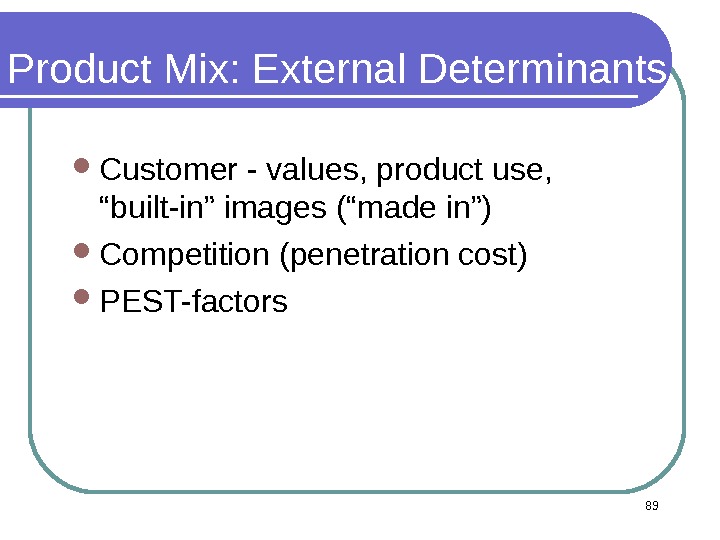
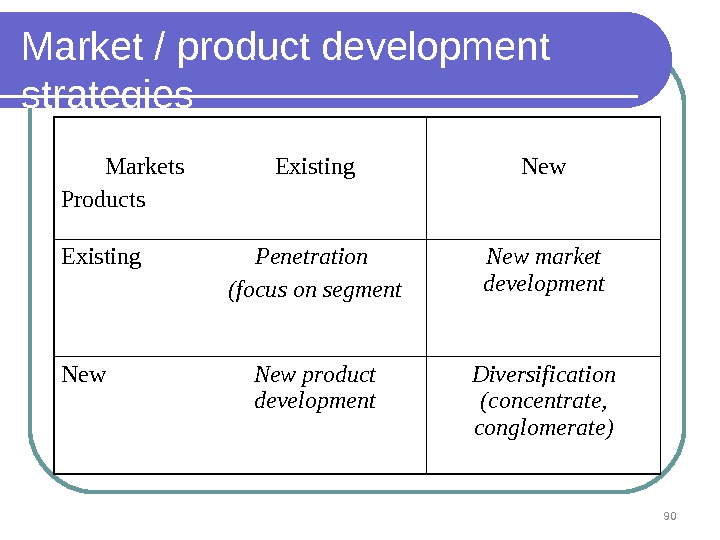

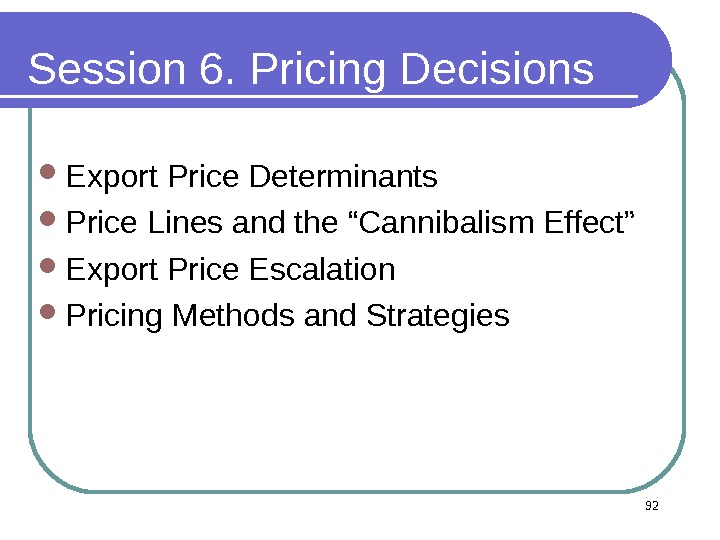
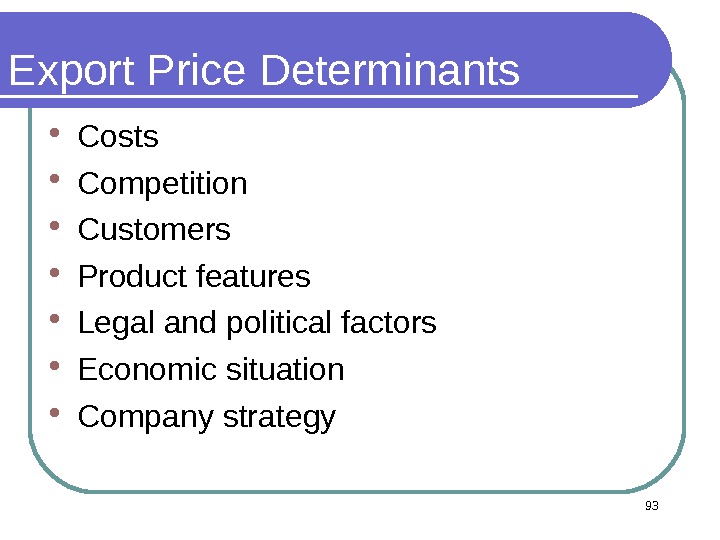
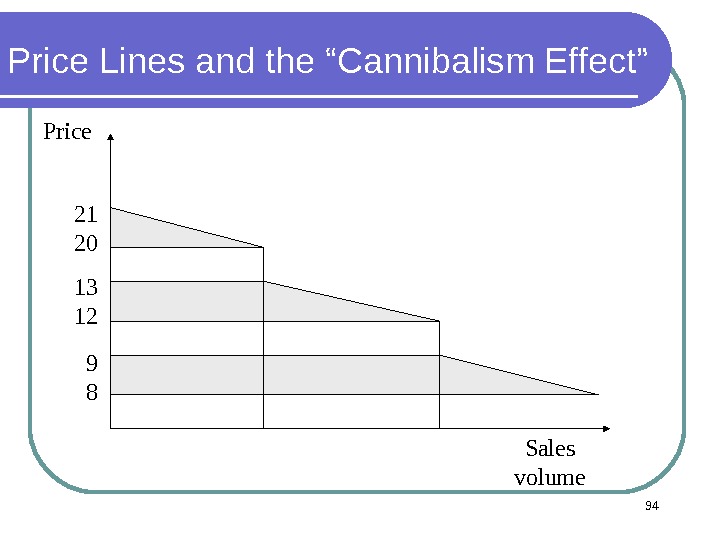
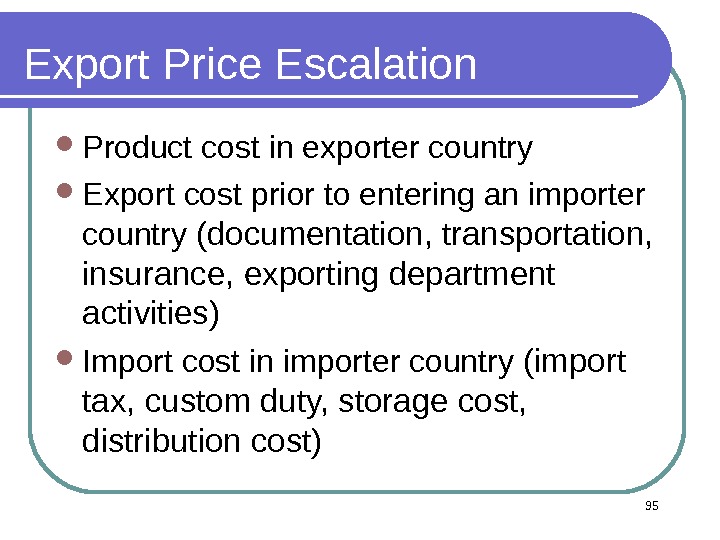
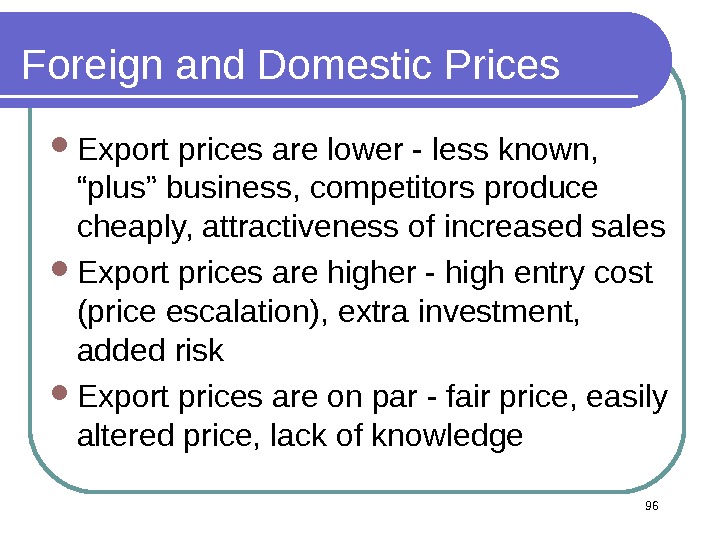

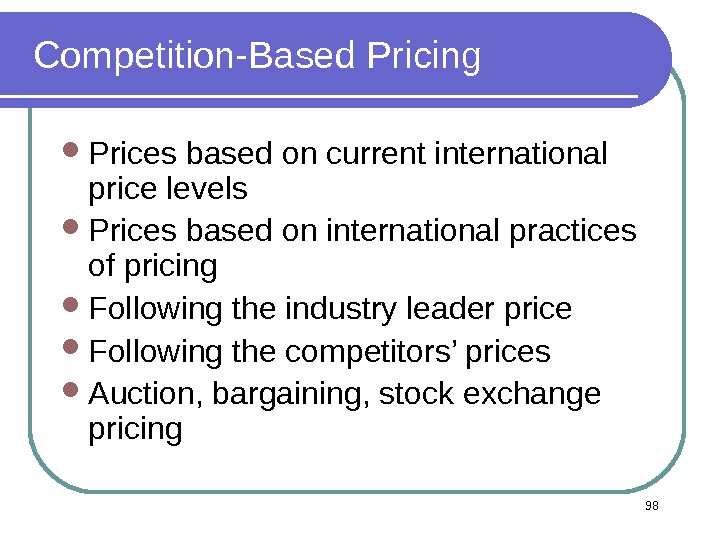
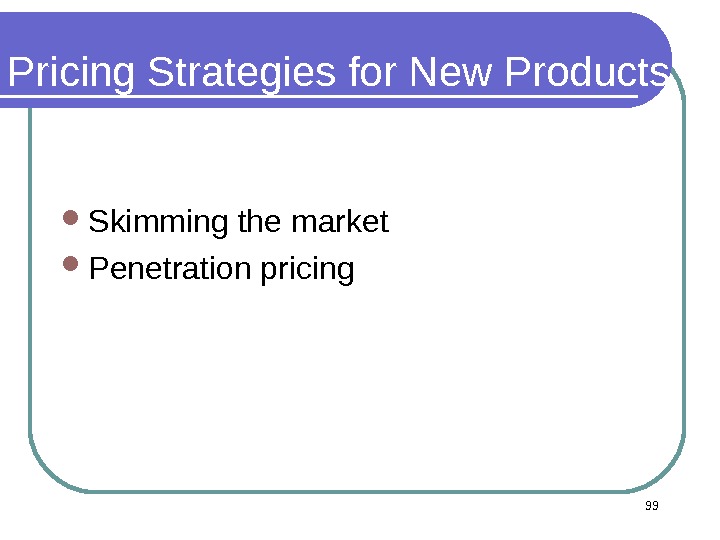
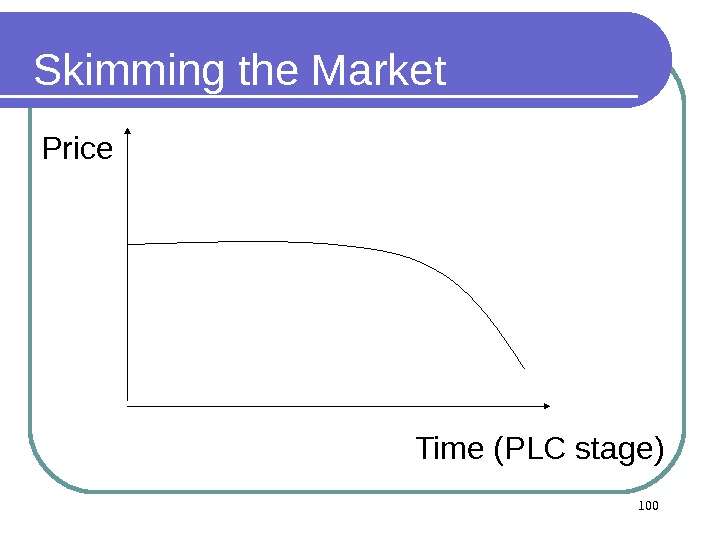
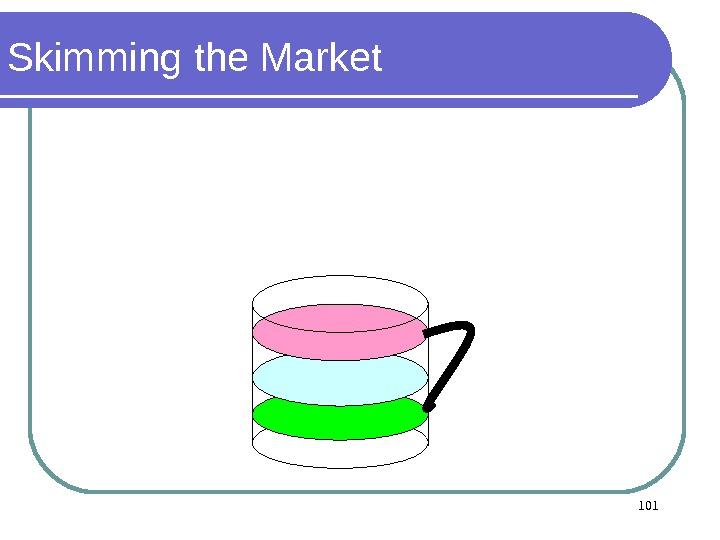

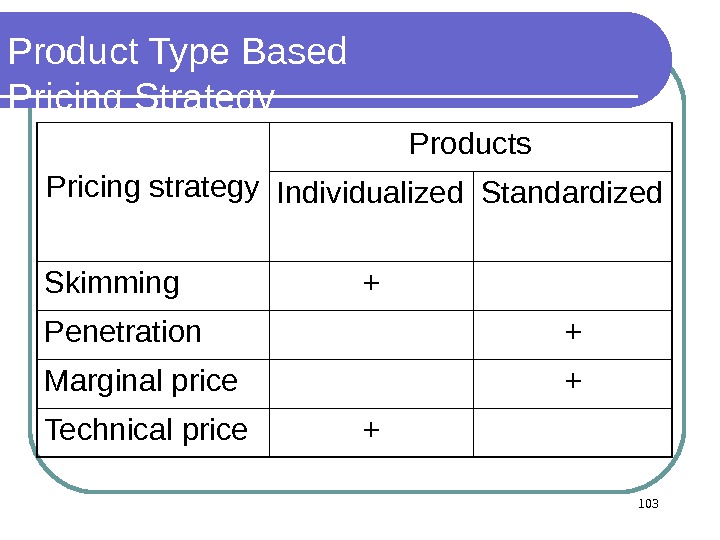
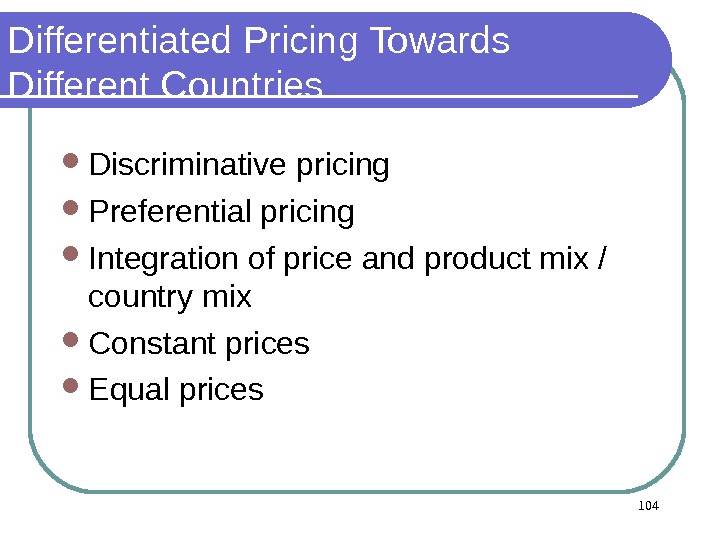
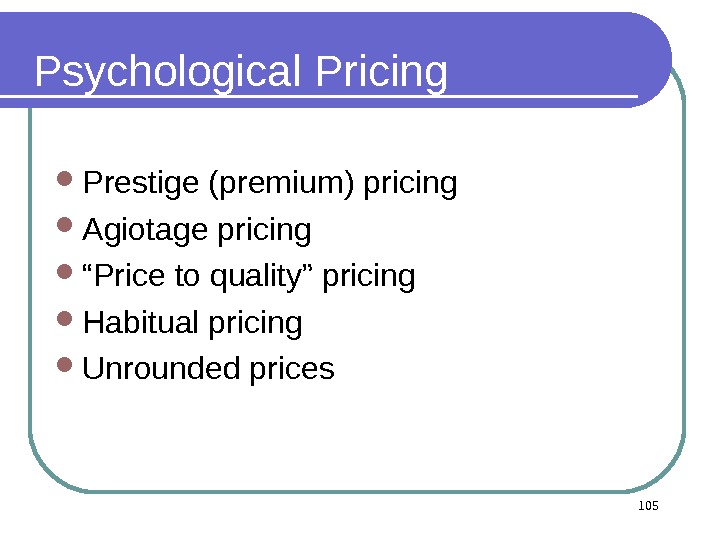
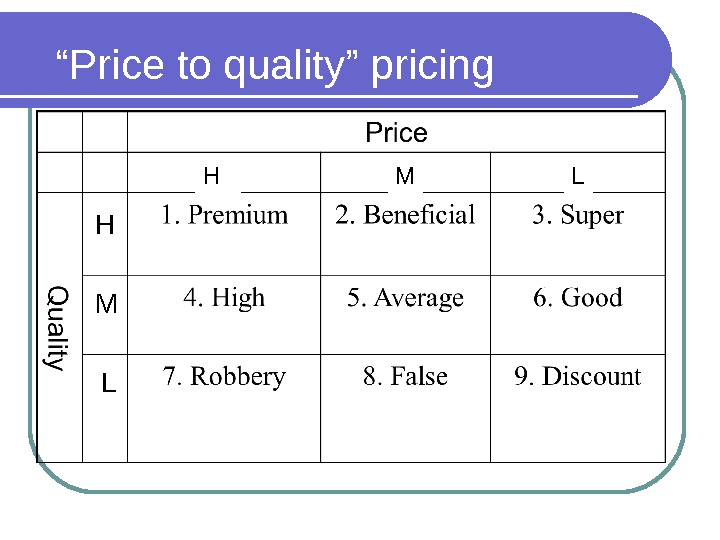
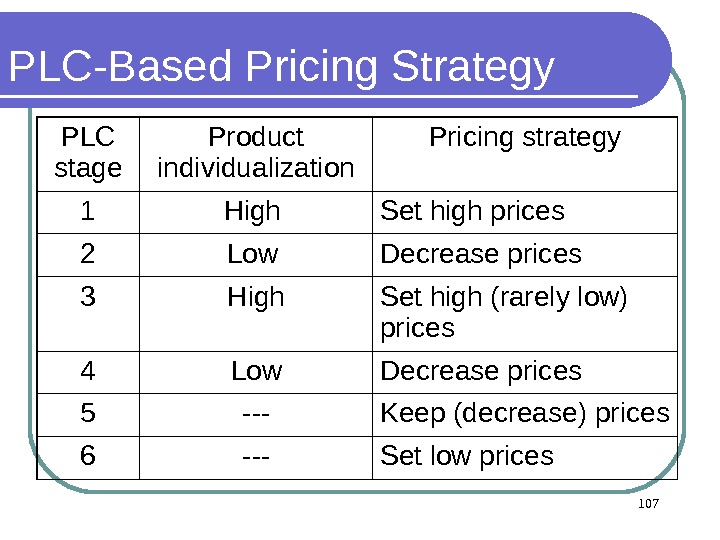
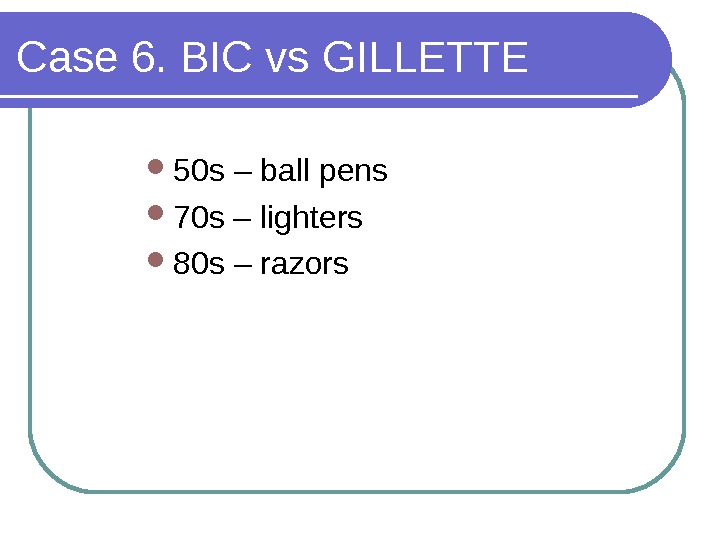
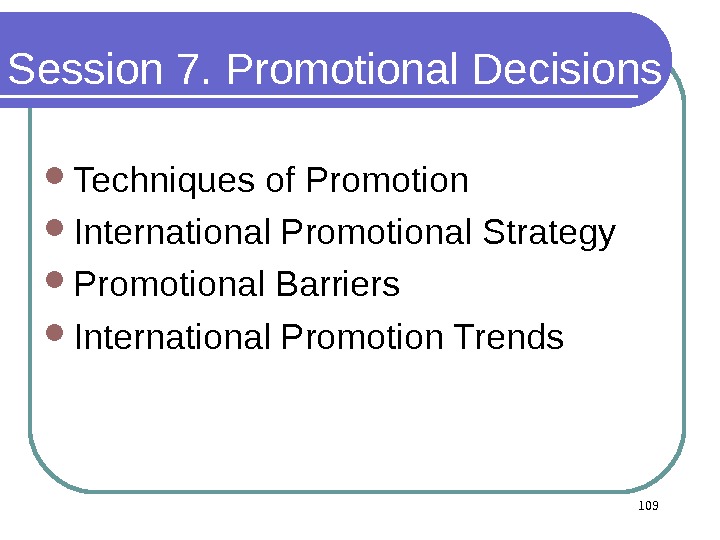
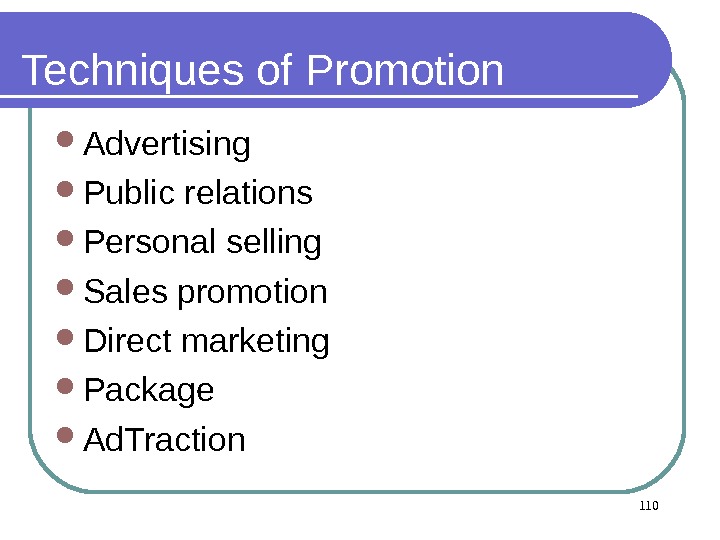
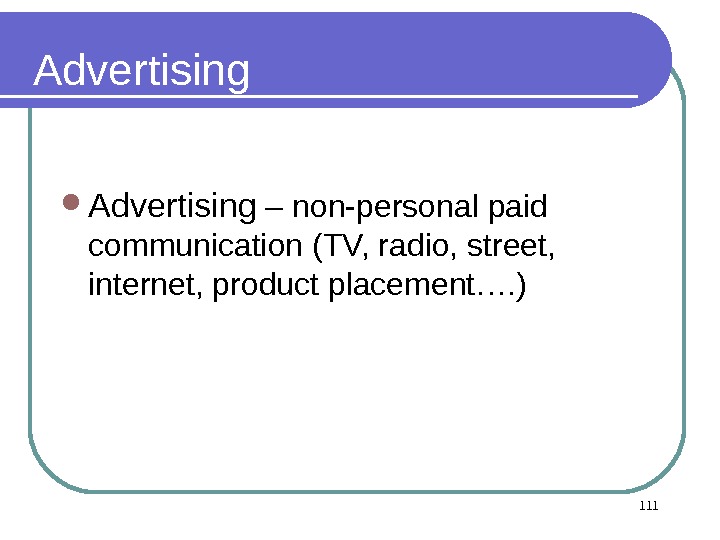
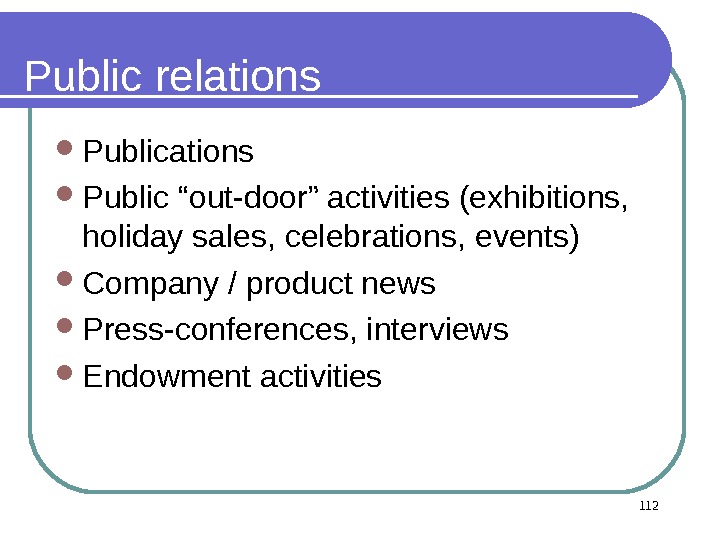
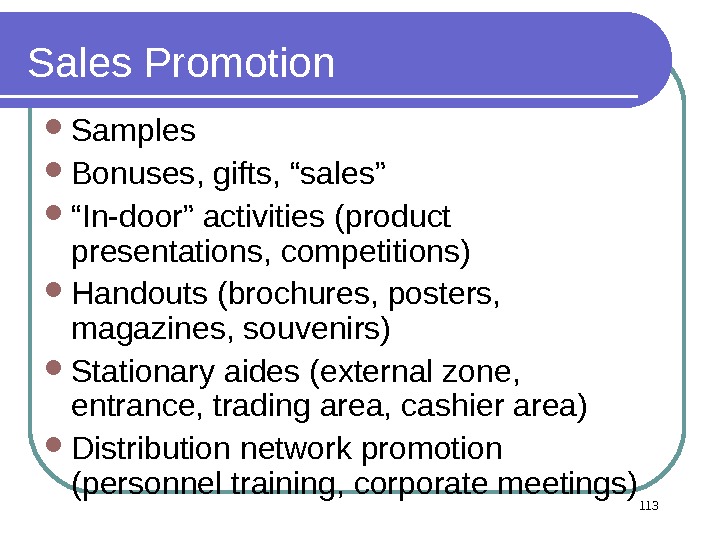
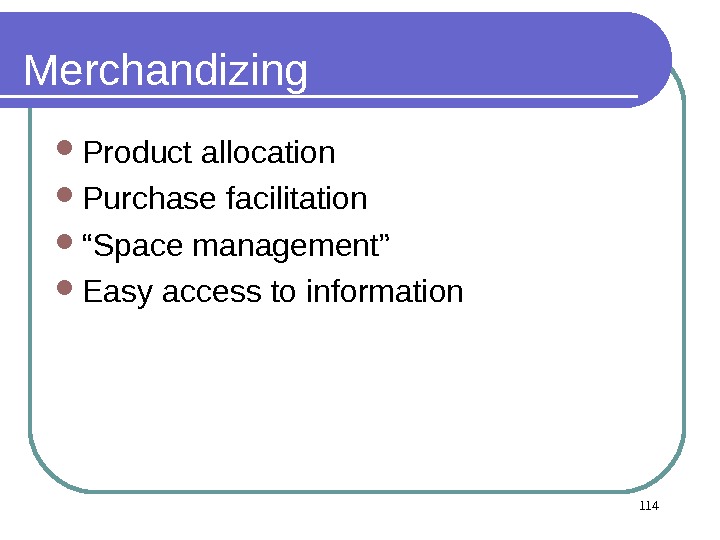
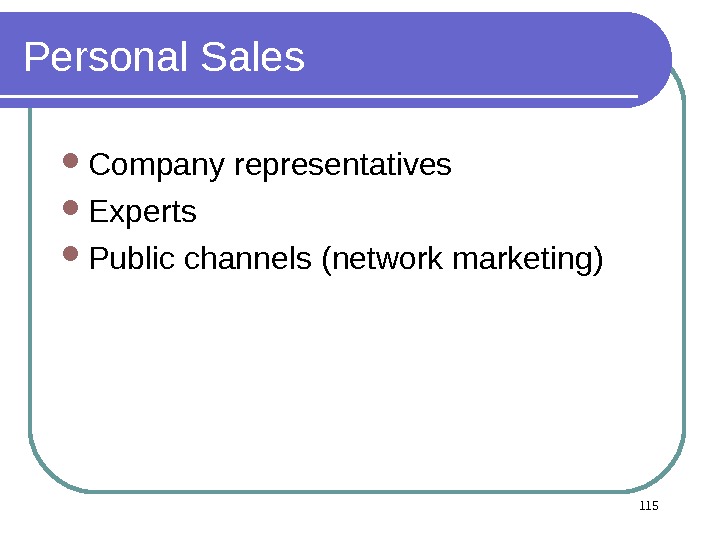
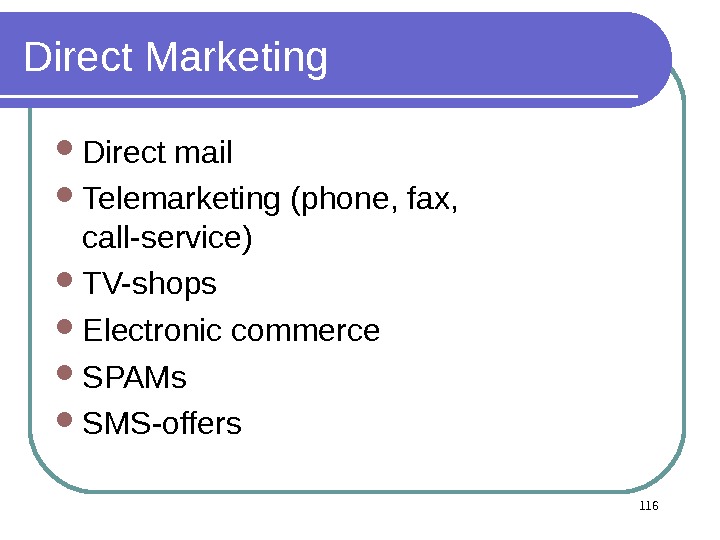
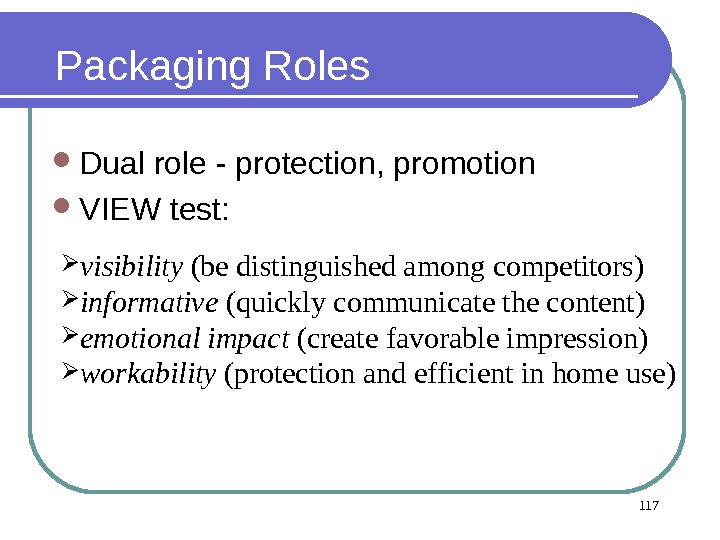
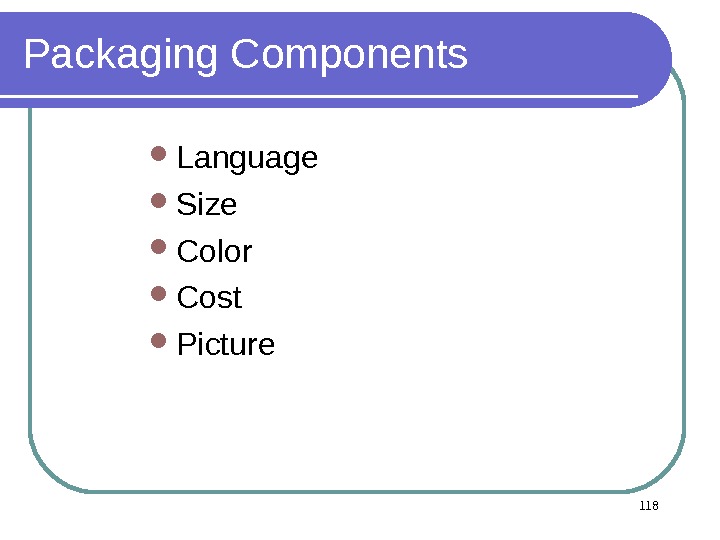
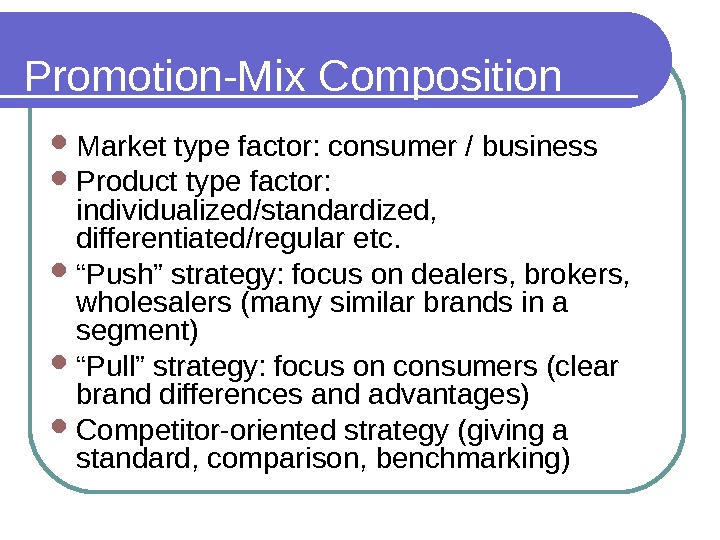
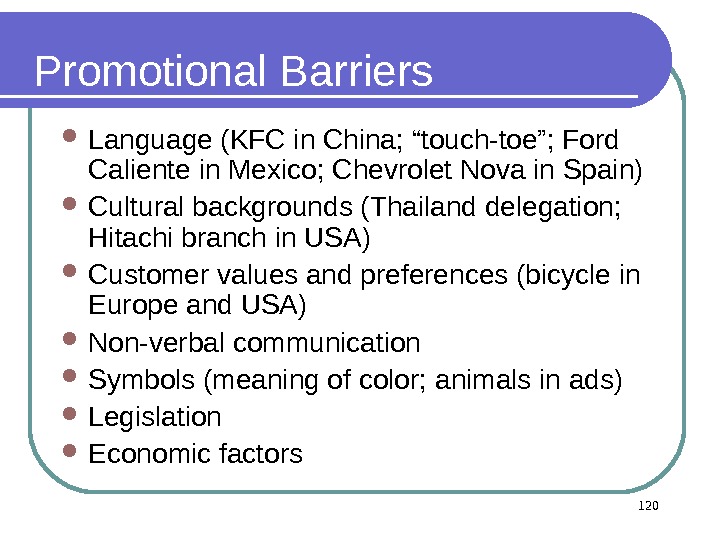
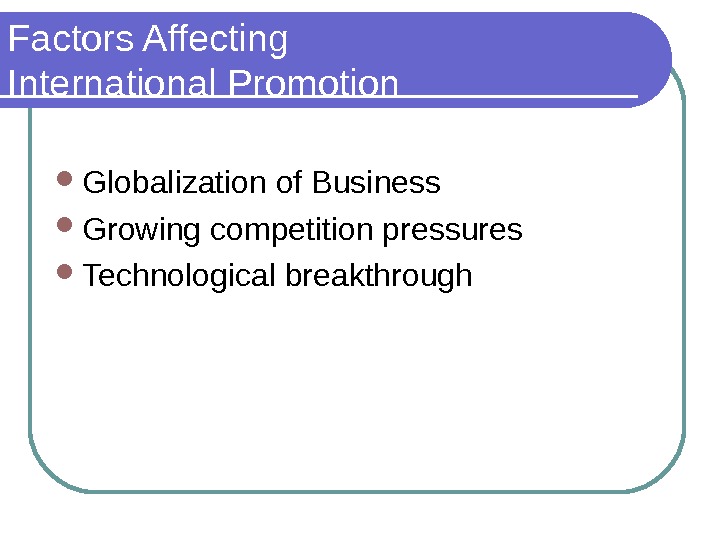
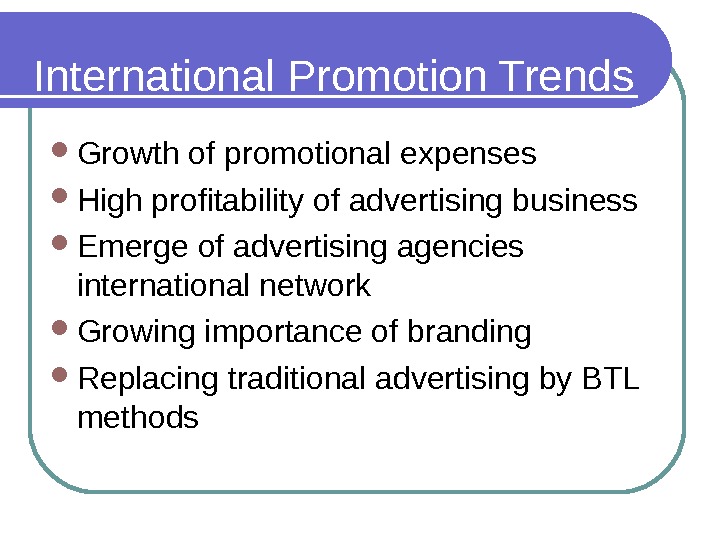
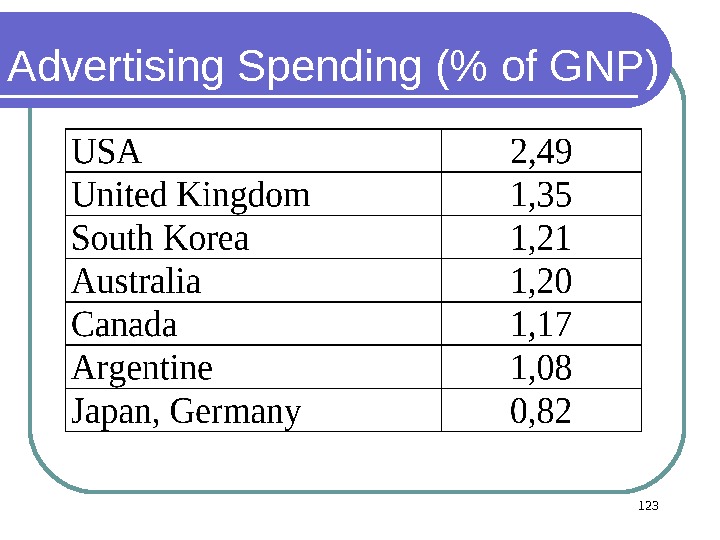
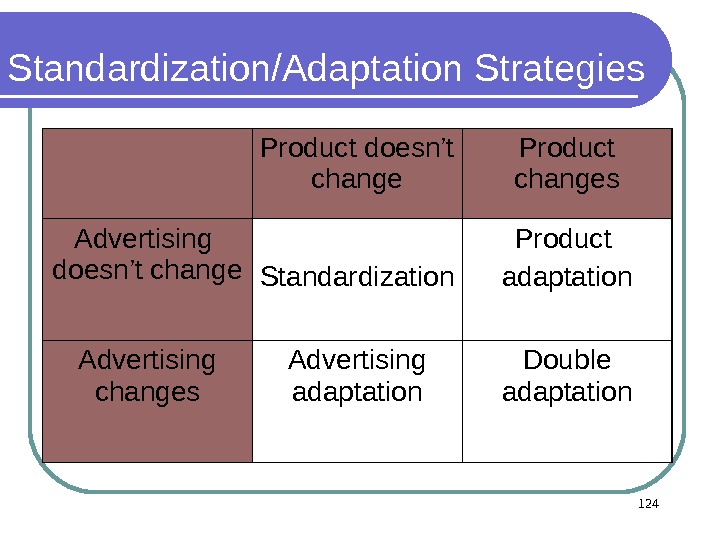
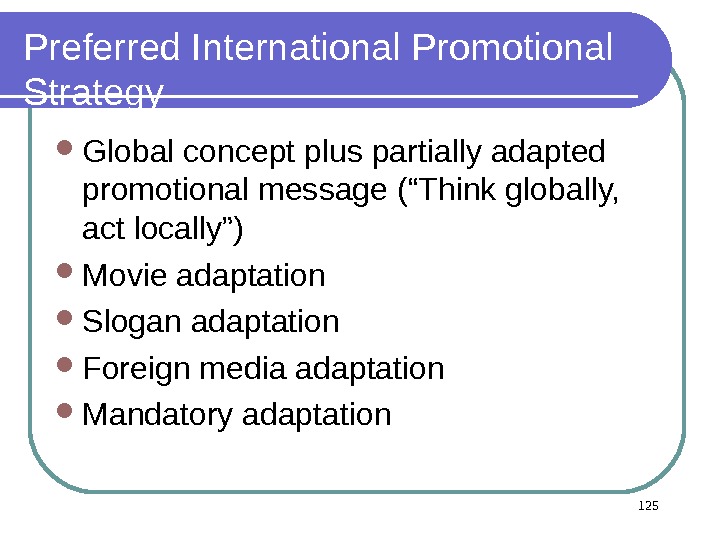
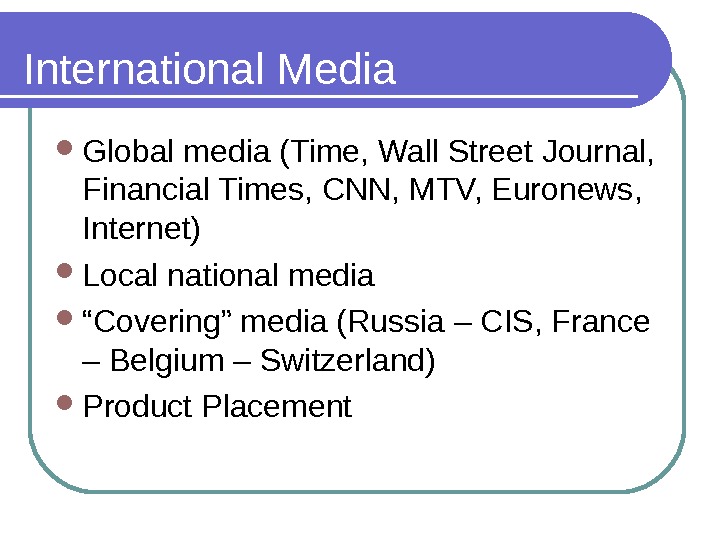
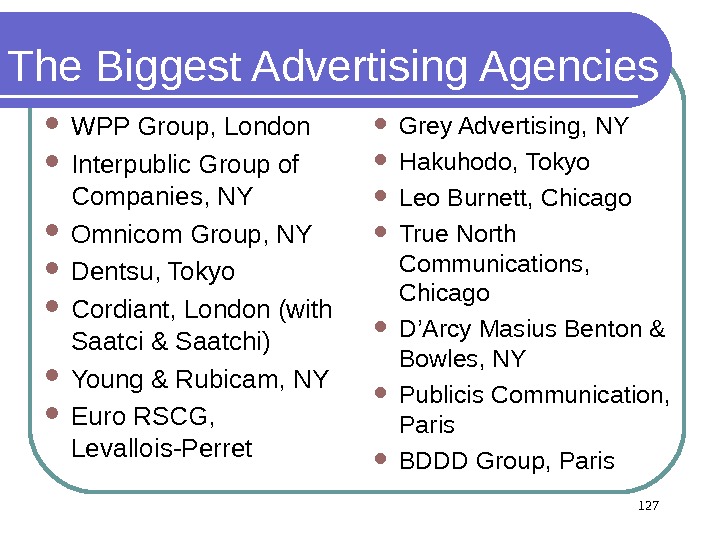
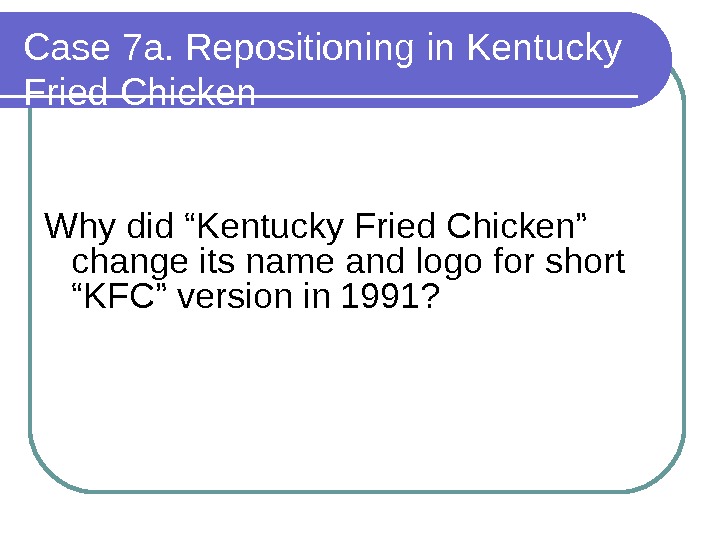
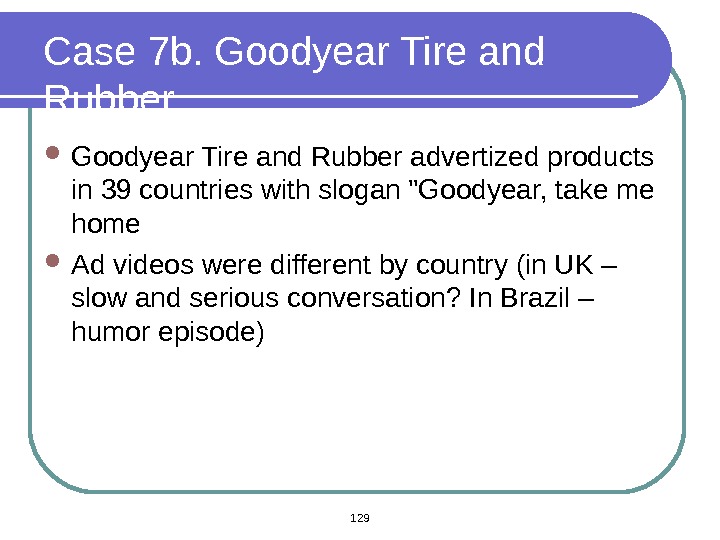
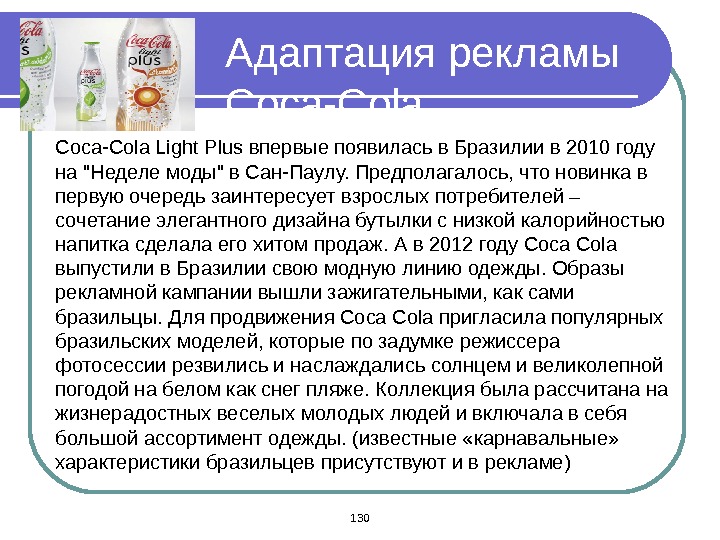
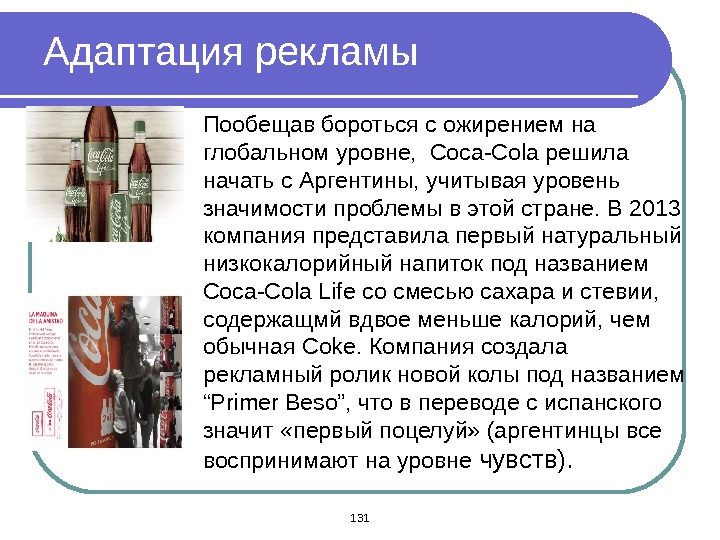
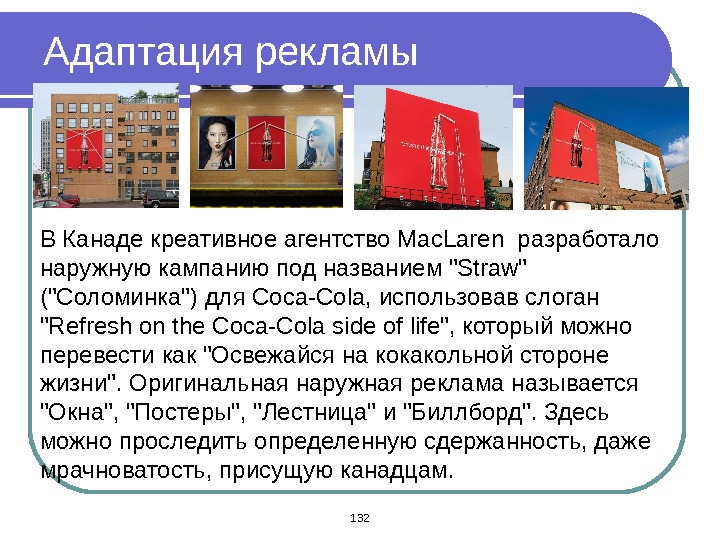

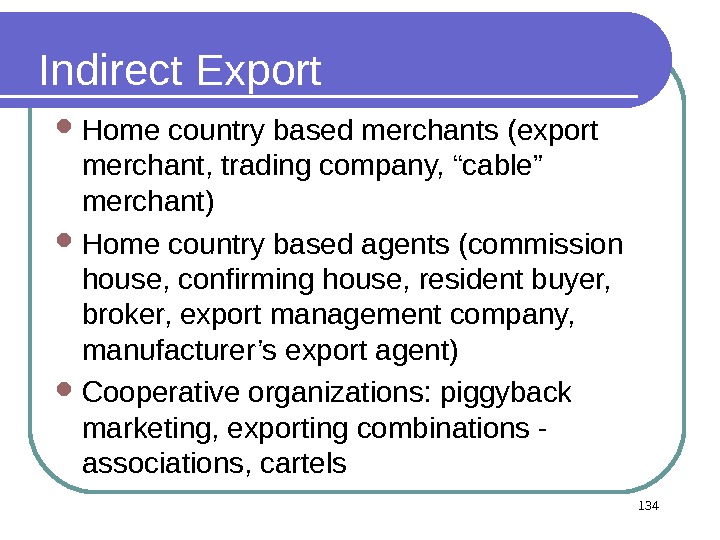
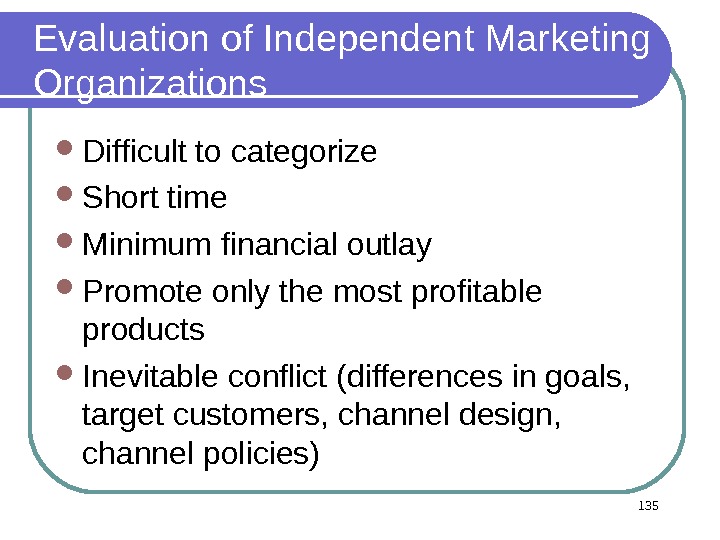
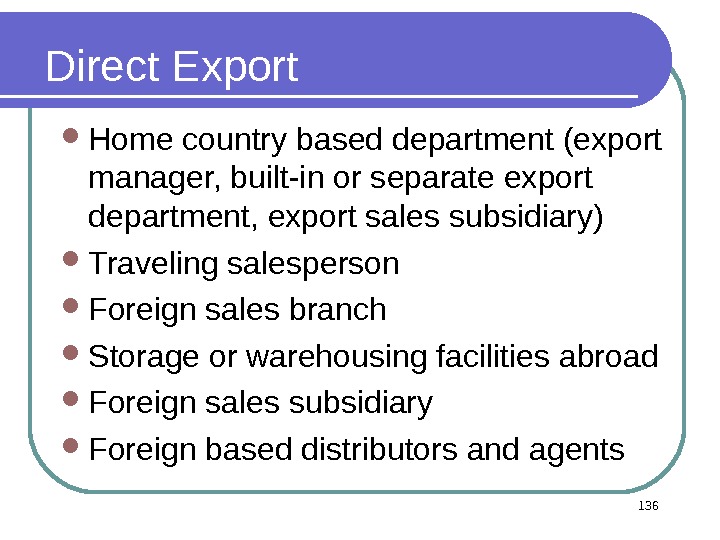

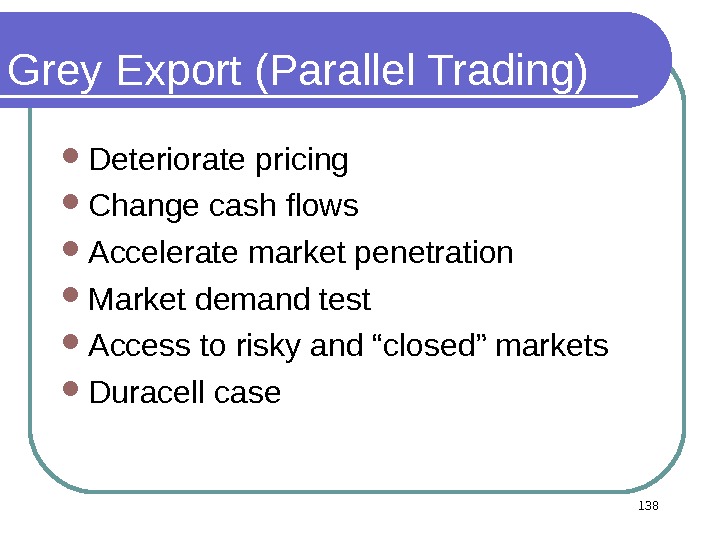


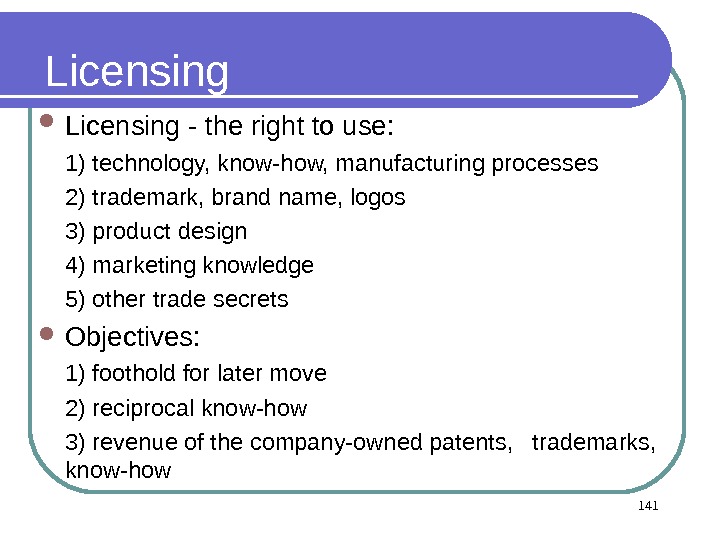
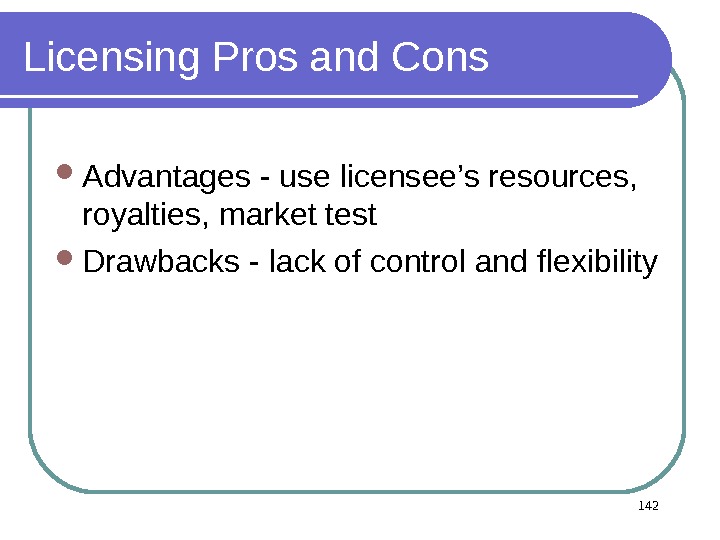
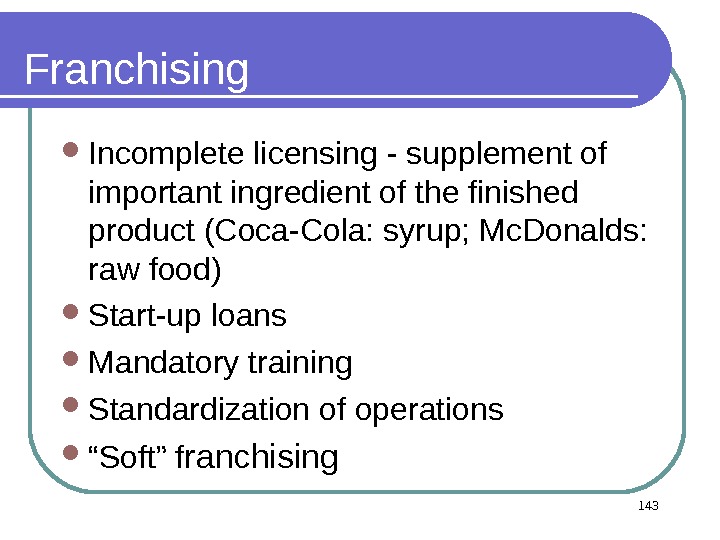


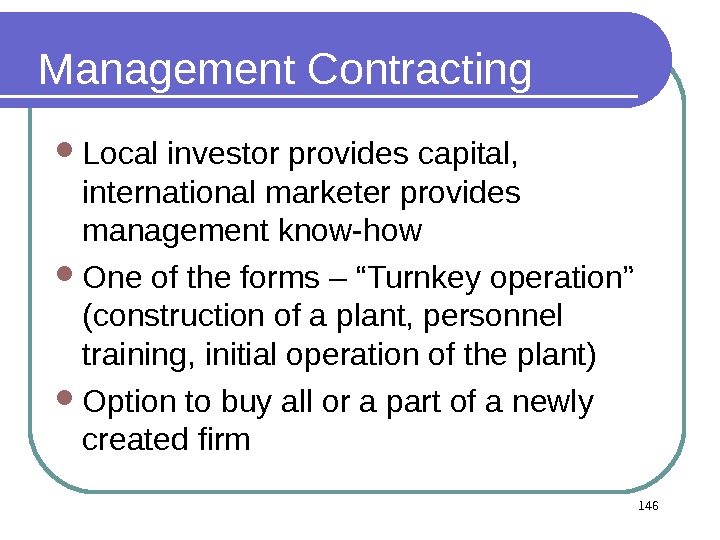
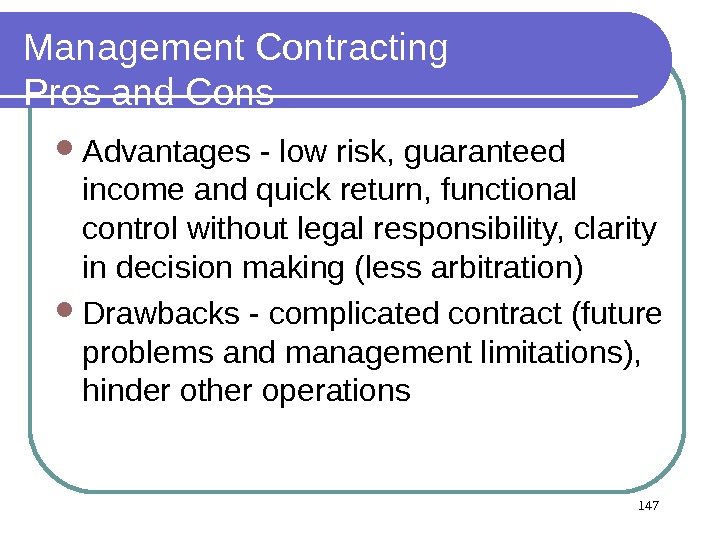
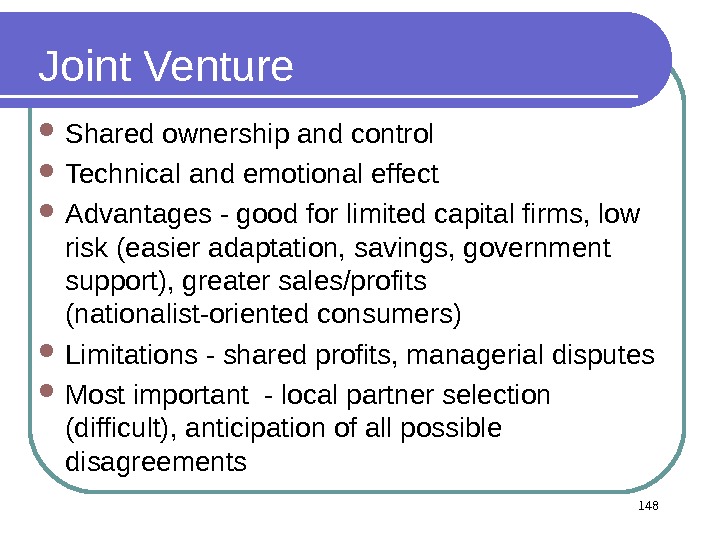
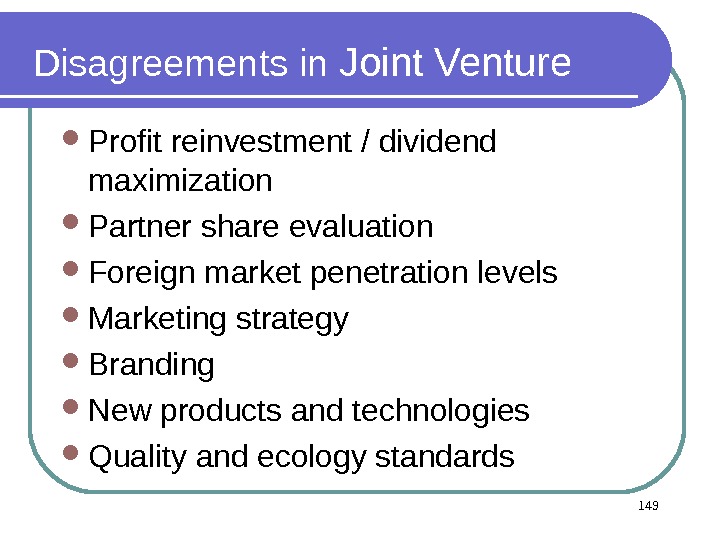
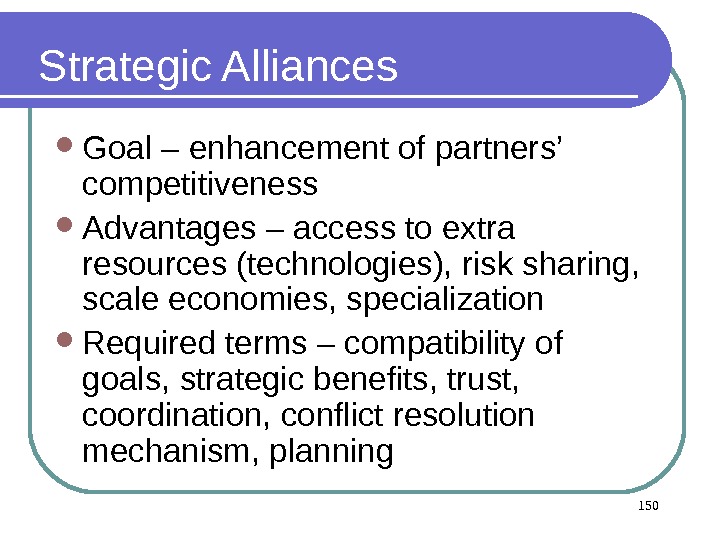
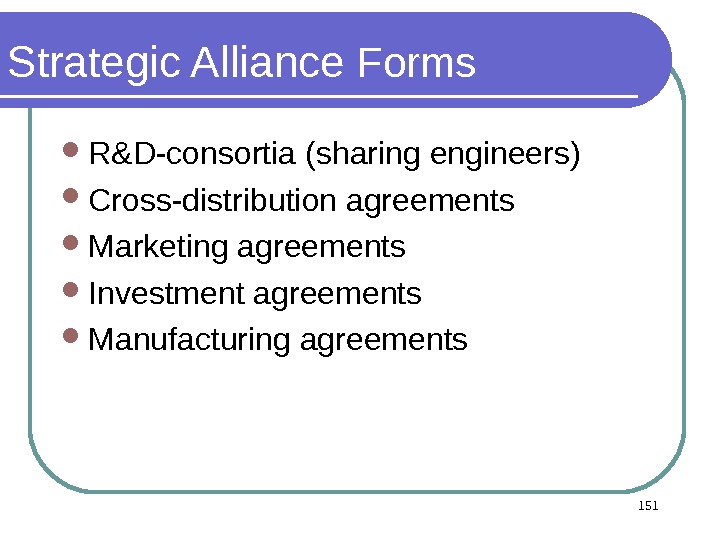
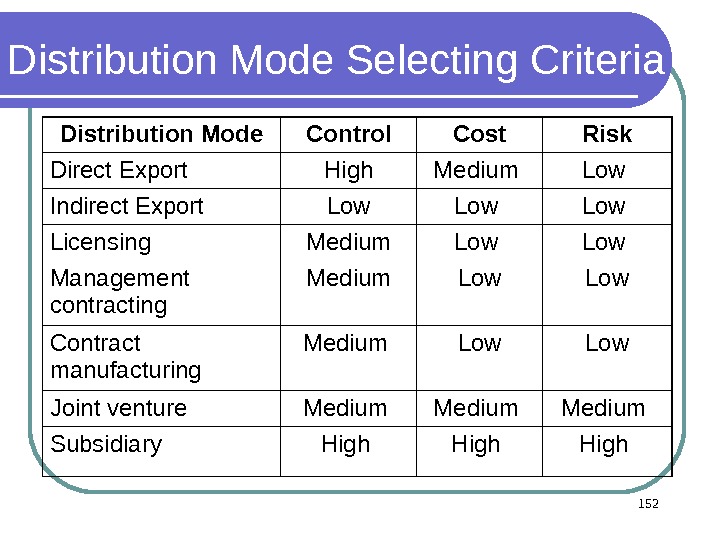
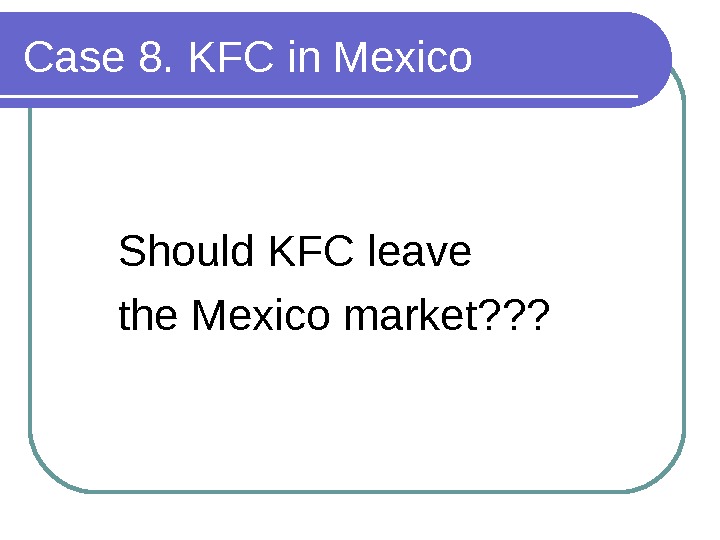
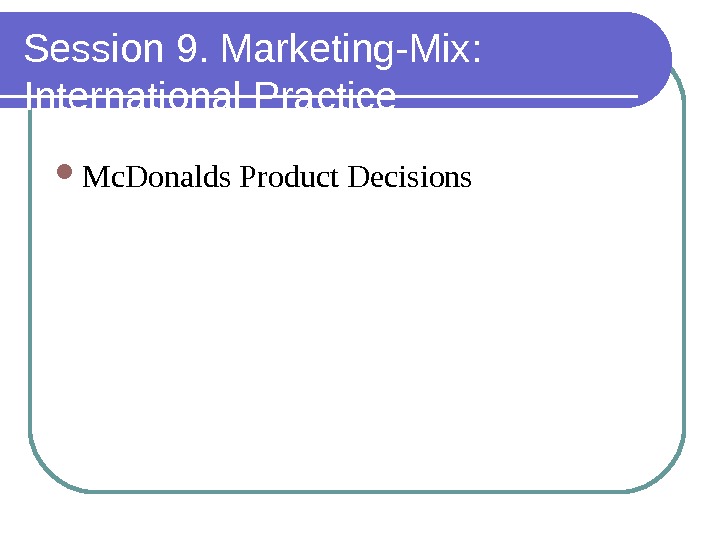
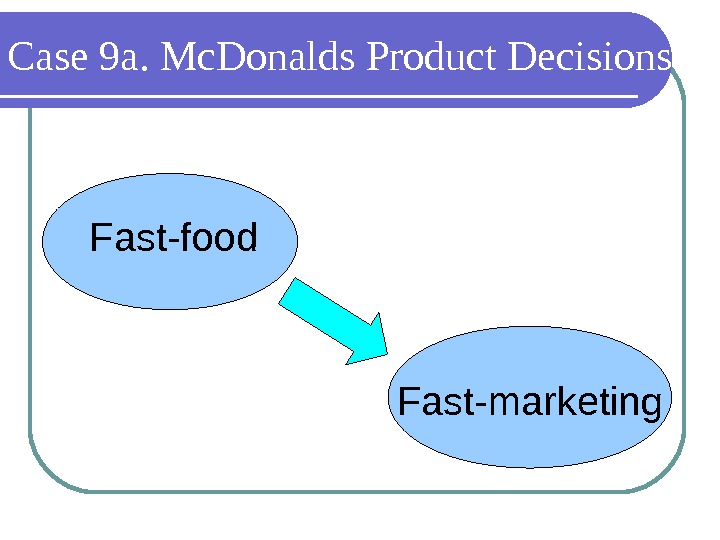
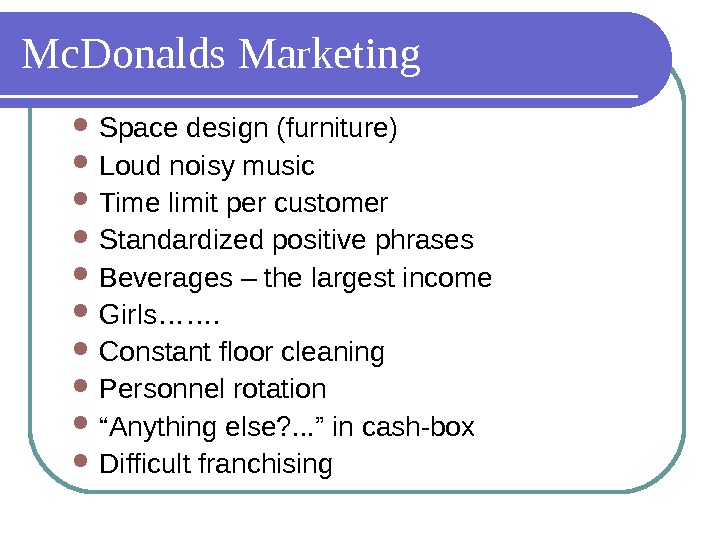
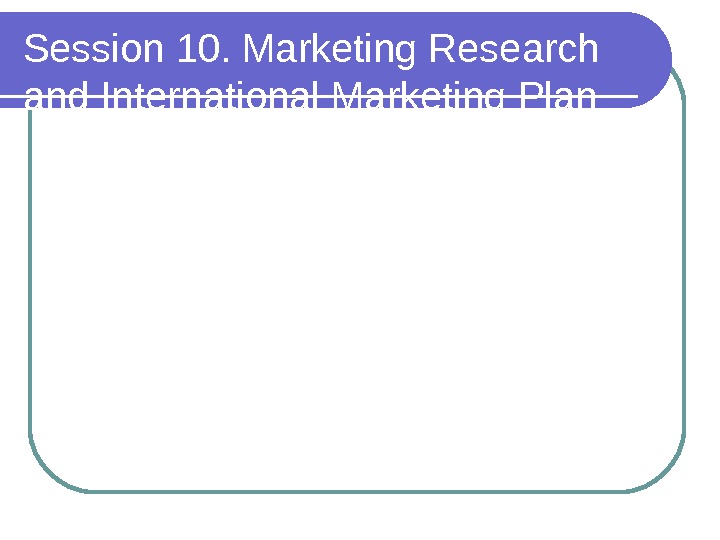
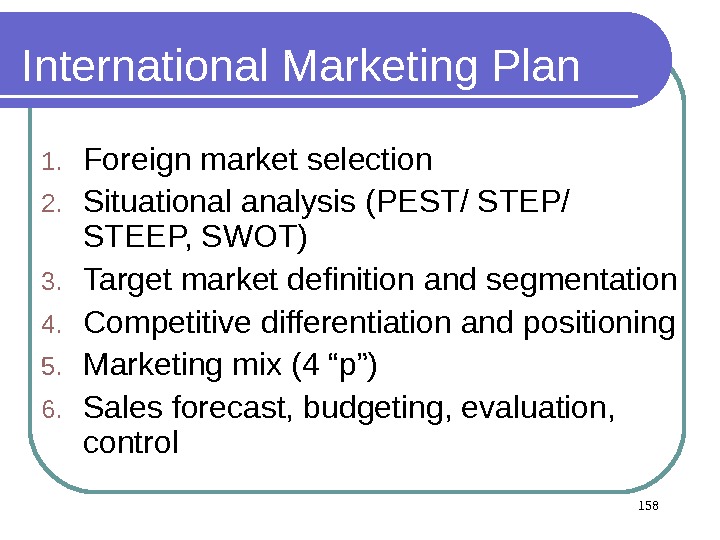
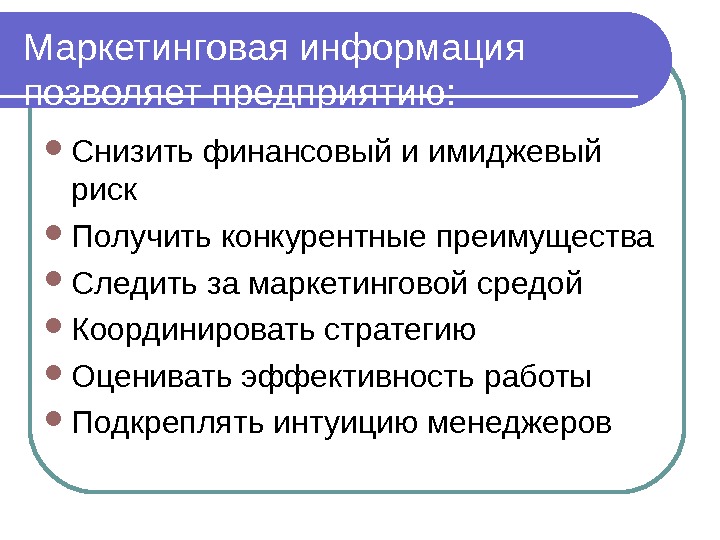
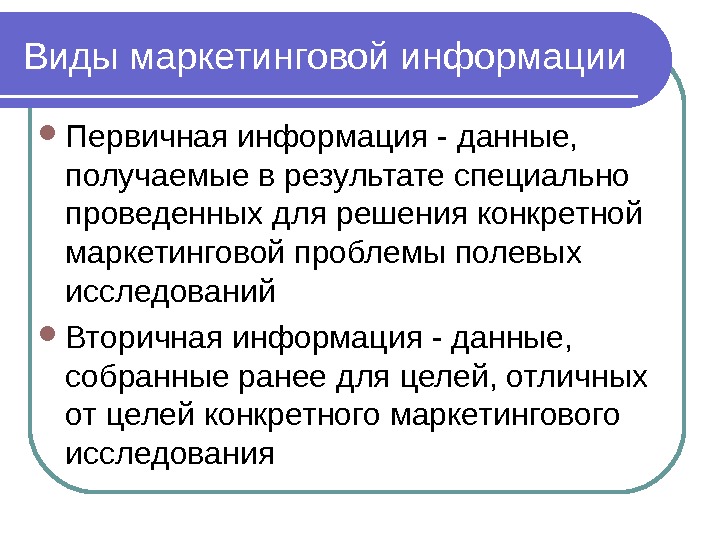
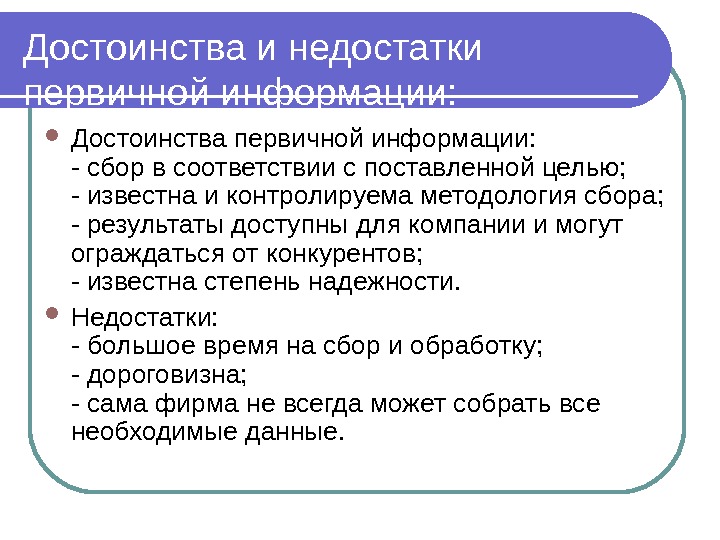
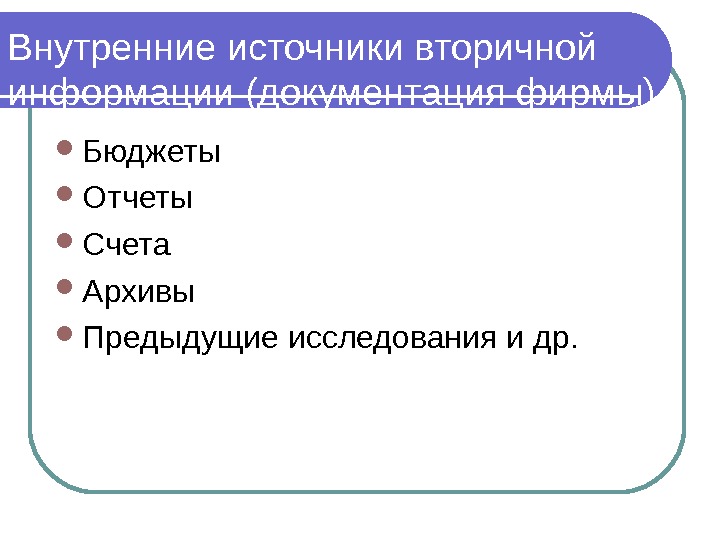

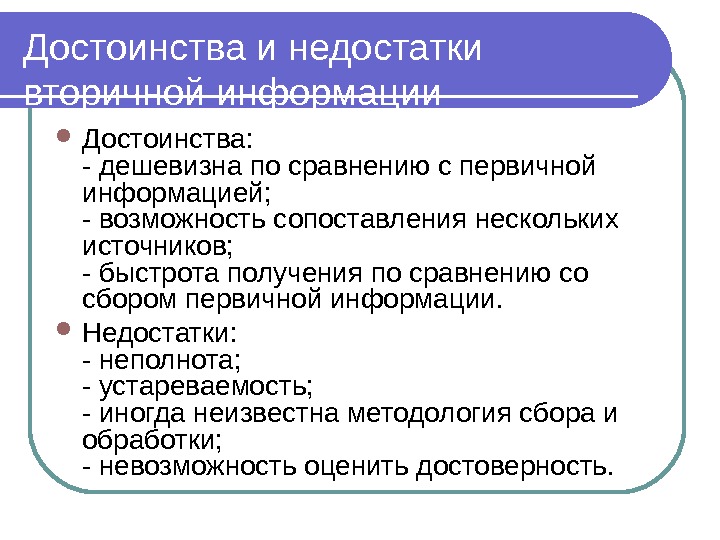
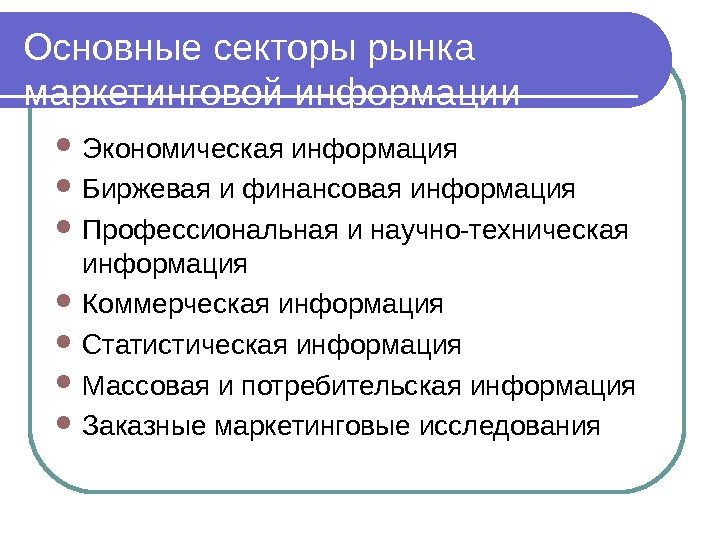
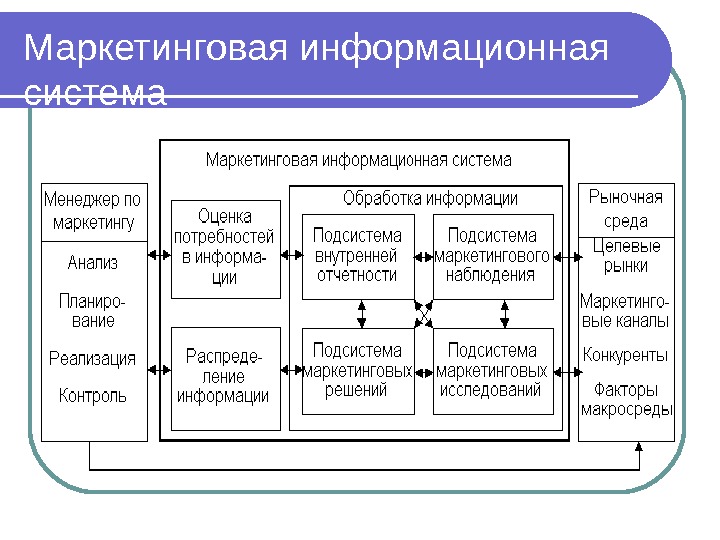
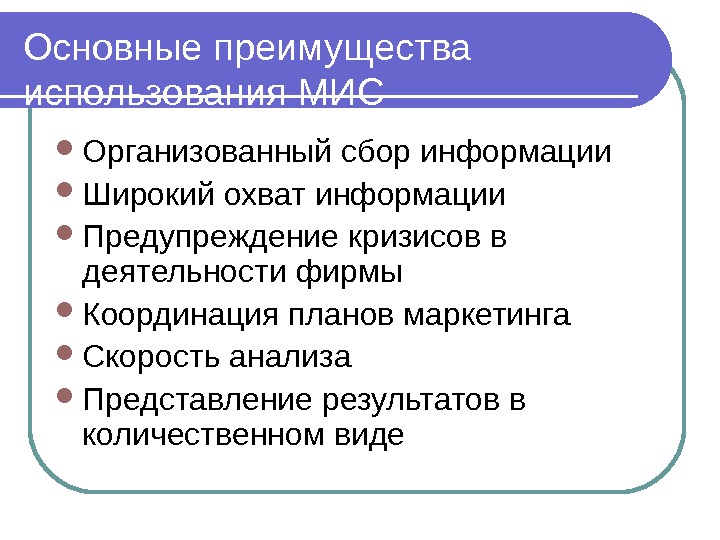
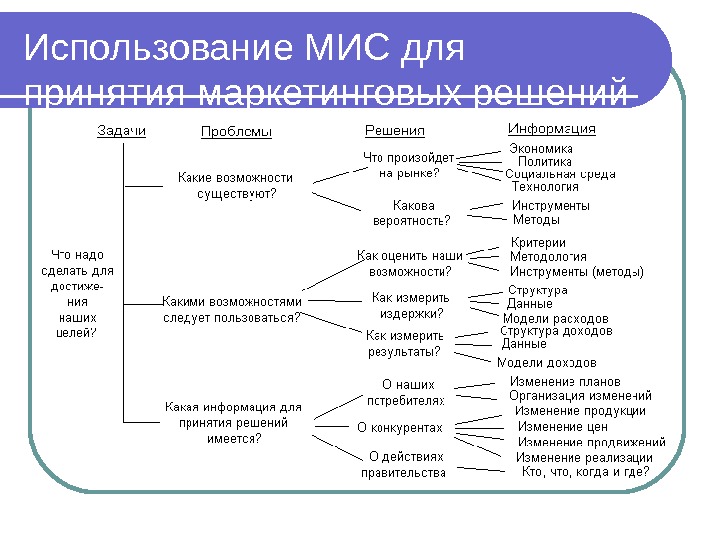
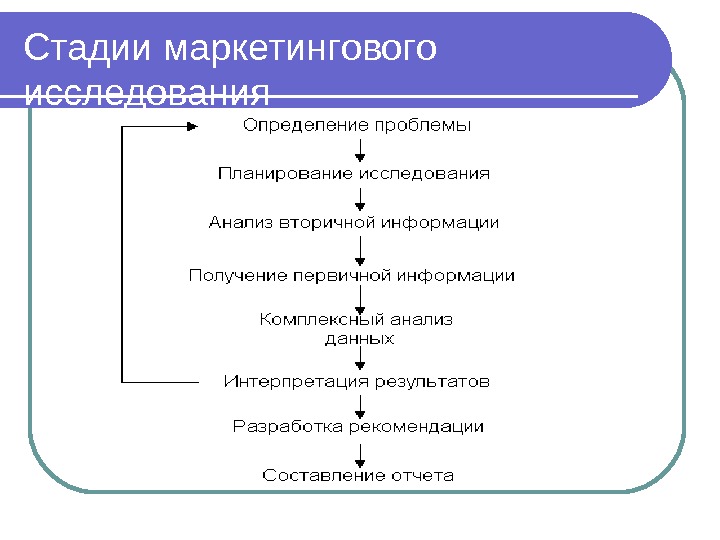
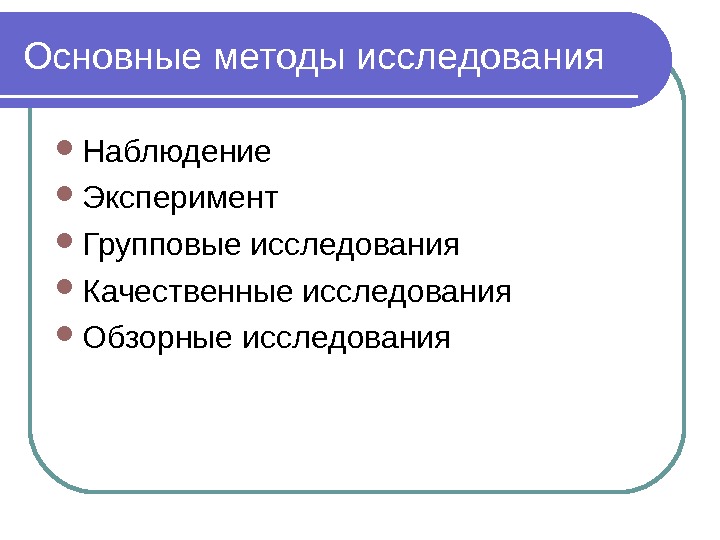
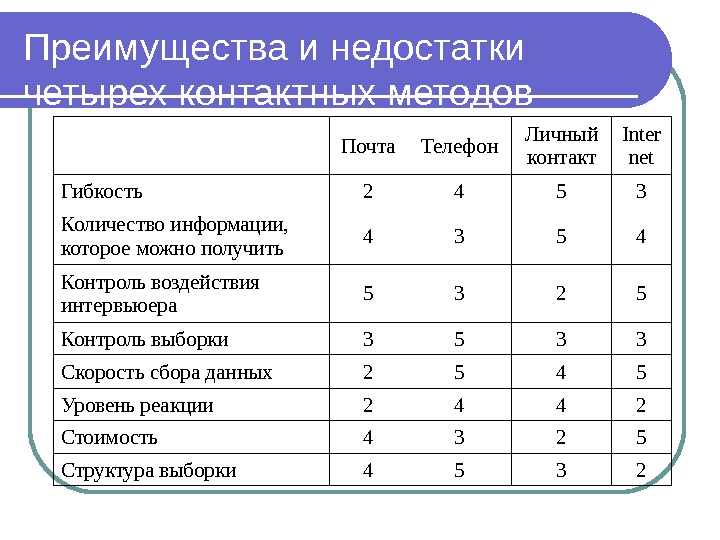
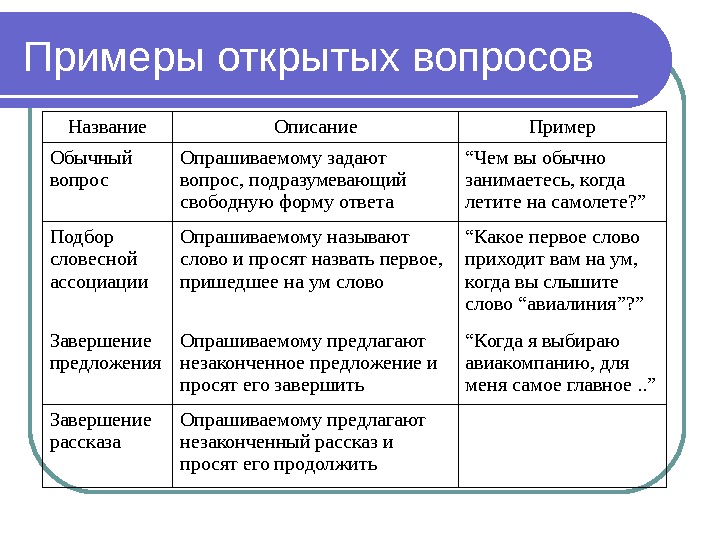
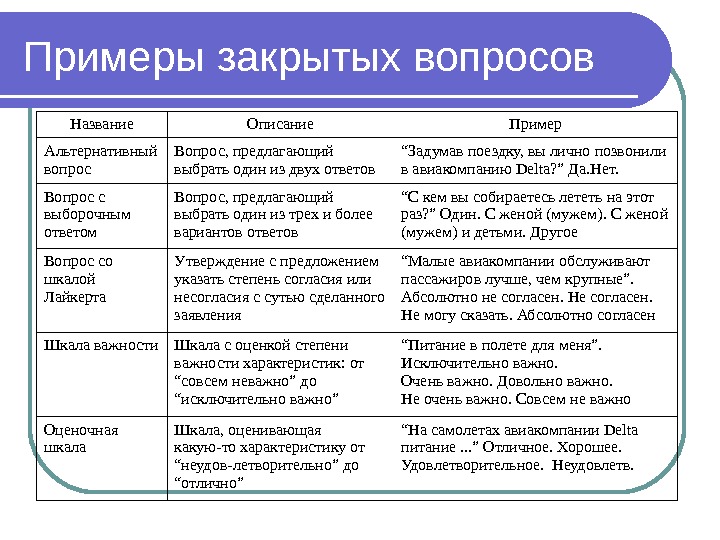
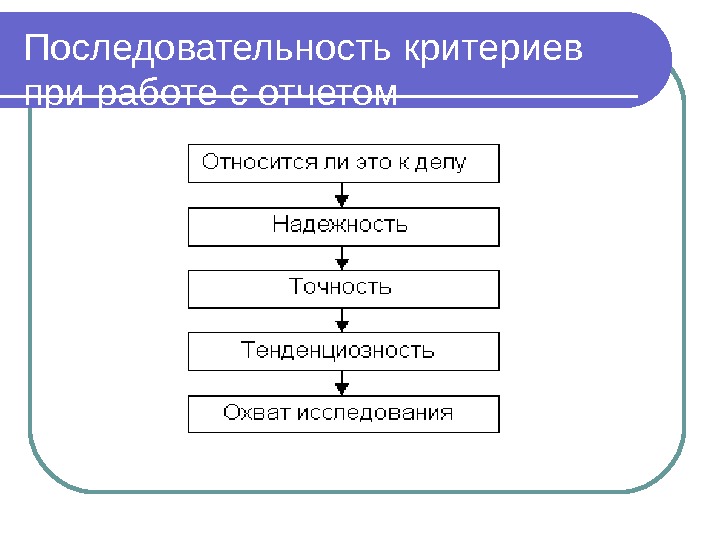
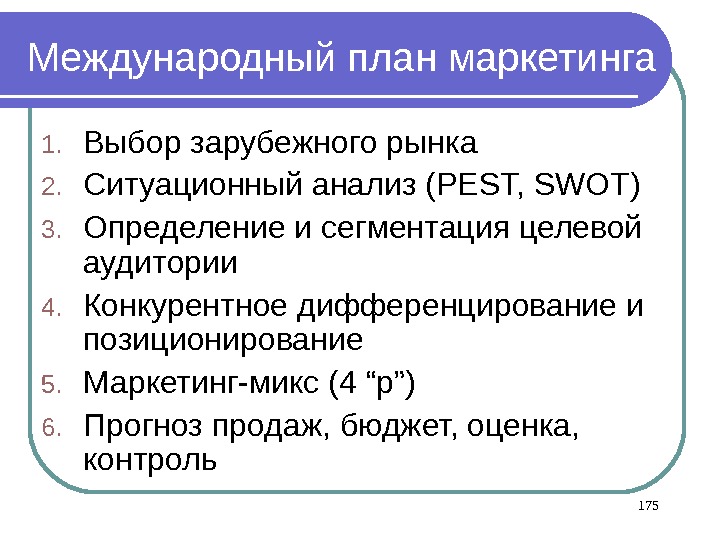
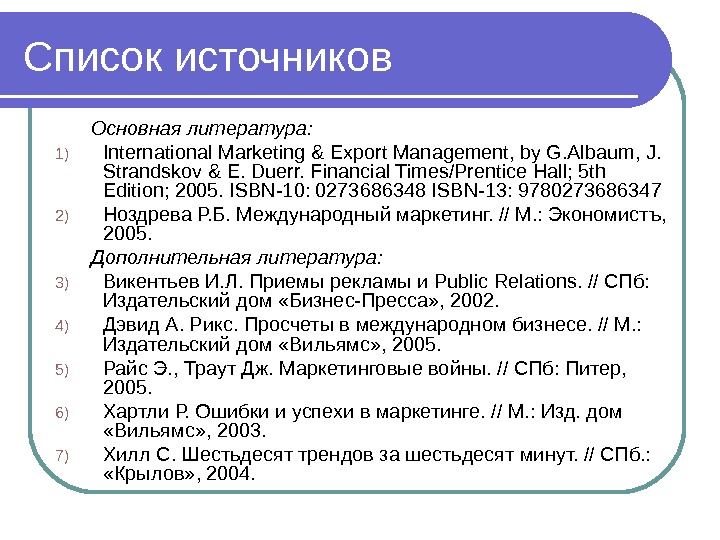
- Размер: 2 Mегабайта
- Количество слайдов: 176
Описание презентации International Marketing Shlykov O. V. – Ph. D по слайдам
 International Marketing Shlykov O. V. – Ph. D (RF), МВА (EU) Southern Federal University
International Marketing Shlykov O. V. – Ph. D (RF), МВА (EU) Southern Federal University
 Course Agenda Session 1. International Marketing Concept Session 2. International Marketing Environment Session 3. Foreign Market Entry Strategies Session 4. Portfolio Strategies Session 5. Product Decisions Session 6. Pricing Decisions Session 7. Promotional Decisions Session 8. Distribution decisions Session 9. Marketing-Mix: International Practice Session 10. Marketing Research and International Marketing Plan
Course Agenda Session 1. International Marketing Concept Session 2. International Marketing Environment Session 3. Foreign Market Entry Strategies Session 4. Portfolio Strategies Session 5. Product Decisions Session 6. Pricing Decisions Session 7. Promotional Decisions Session 8. Distribution decisions Session 9. Marketing-Mix: International Practice Session 10. Marketing Research and International Marketing Plan
 Session 1. International Marketing Concept Marketing — the process of creating, distributing, promoting, and pricing goods, services, and ideas to facilitate satisfying exchange relationships in a dynamic environment Marketing – winning and “locking-in” customers
Session 1. International Marketing Concept Marketing — the process of creating, distributing, promoting, and pricing goods, services, and ideas to facilitate satisfying exchange relationships in a dynamic environment Marketing – winning and “locking-in” customers
 4 Marketing Concept A managerial philosophy that an organization exercise so as to satisfy customer needs through a coordinated set of activities, allowing the organization to achieve its goals as well Industrial Era (1900) — strong demand, efficiency Sales Era (1920) — weak demand, sales orientation (sell the produced goods) Marketing Era (1950) — relationship marketing (long-term, mutually satisfying relationships), produce what is needed
4 Marketing Concept A managerial philosophy that an organization exercise so as to satisfy customer needs through a coordinated set of activities, allowing the organization to achieve its goals as well Industrial Era (1900) — strong demand, efficiency Sales Era (1920) — weak demand, sales orientation (sell the produced goods) Marketing Era (1950) — relationship marketing (long-term, mutually satisfying relationships), produce what is needed
 5 International Marketing Definitions Marketing «over political borders» Marketing targeted at foreign consumer demands Key decisions: foreign market entry decision specific market decision strategy decision marketing mix decision (5 «р» )
5 International Marketing Definitions Marketing «over political borders» Marketing targeted at foreign consumer demands Key decisions: foreign market entry decision specific market decision strategy decision marketing mix decision (5 «р» )
 Famous Marketing Blunders Otis elevator in USSR- sign said good for sex Parker Pen (ink) in Latin America — false impression that the product helped preventing pregnancies Pepsi Cola in Germany- translated from Come Alive with Pepsi to Come out of the Grave with Pepsi GM in Belgium- translation error made Body by Fisher as Corpse by Fisher
Famous Marketing Blunders Otis elevator in USSR- sign said good for sex Parker Pen (ink) in Latin America — false impression that the product helped preventing pregnancies Pepsi Cola in Germany- translated from Come Alive with Pepsi to Come out of the Grave with Pepsi GM in Belgium- translation error made Body by Fisher as Corpse by Fisher
 Famous Marketing Blunders Exxon (gas) in Thailand — used meaningless tiger symbol Warner-Lampert (mouthwash) in Thailand — depicted love scenes in violation of local customs Mc. Donald Douglas (aircraft) in India — mistakenly depicted Pakistan people instead of Indians Goodyear Tire in Germany — made illegal claims of superiority General Mills (breakfast cereal) in England — appealed to kids
Famous Marketing Blunders Exxon (gas) in Thailand — used meaningless tiger symbol Warner-Lampert (mouthwash) in Thailand — depicted love scenes in violation of local customs Mc. Donald Douglas (aircraft) in India — mistakenly depicted Pakistan people instead of Indians Goodyear Tire in Germany — made illegal claims of superiority General Mills (breakfast cereal) in England — appealed to kids
 8 Export Motives Internal proactive: managerial urge, growth / profit goals, marketing skills, economies of scale, unique product Internal reactive : risk diversification, excess capacity, extend sales of a seasonable product External proactive: foreign market opportunities, promoting organizations External reactive : foreign initiator, home market limitations, stagnant or declining home market, global company attack
8 Export Motives Internal proactive: managerial urge, growth / profit goals, marketing skills, economies of scale, unique product Internal reactive : risk diversification, excess capacity, extend sales of a seasonable product External proactive: foreign market opportunities, promoting organizations External reactive : foreign initiator, home market limitations, stagnant or declining home market, global company attack
 9 Possible Risks Misunderstanding foreign consumer Low product competitiveness Different business culture Lack of communication skills Unfamiliar legal environment (extra costs) Lack of managers with foreign experience Political, legal, currency risks
9 Possible Risks Misunderstanding foreign consumer Low product competitiveness Different business culture Lack of communication skills Unfamiliar legal environment (extra costs) Lack of managers with foreign experience Political, legal, currency risks
 10 Marketing Strategy Target market — a specific group of buyers whose needs and wants a company focuses its marketing efforts on Marketing Mix — 4 «P» (+People), firm-controlled marketing activities Marketing environment — competitive, economic, political, legal, sociocultural, technological factors which face buyers and affect the marketing mix
10 Marketing Strategy Target market — a specific group of buyers whose needs and wants a company focuses its marketing efforts on Marketing Mix — 4 «P» (+People), firm-controlled marketing activities Marketing environment — competitive, economic, political, legal, sociocultural, technological factors which face buyers and affect the marketing mix
 11 Global Economy Internationalization (aspects — world trade, direct investments; drivers — market opportunities, excessive capacity) Global segments Blurring (deleting borders among states, industries, goods/services/impressions) Acceleration of business (trades, product development, order execution; intangible assets; connectivity — people, firms, nations)
11 Global Economy Internationalization (aspects — world trade, direct investments; drivers — market opportunities, excessive capacity) Global segments Blurring (deleting borders among states, industries, goods/services/impressions) Acceleration of business (trades, product development, order execution; intangible assets; connectivity — people, firms, nations)
 12 Strategic Choice Global marketing (Coca-Cola, Mc. Donalds, Levi Straus, Marlboro) / Multinational marketing (Unilever 1000 brandnames, P&G) Logic for standardization — homogeneity of needs, lower prices, higher quality, global segments growth, “one sight, one sound, one sale”, “echo” effect Logic for adaptation — heterogeneity of needs Mandatory adaptation — language, differing standards (electrical systems, measurement systems), legislation. . Voluntary adaptation — exporter’s decision Often- a compromise of the two strategies (“think globally, act locally”)
12 Strategic Choice Global marketing (Coca-Cola, Mc. Donalds, Levi Straus, Marlboro) / Multinational marketing (Unilever 1000 brandnames, P&G) Logic for standardization — homogeneity of needs, lower prices, higher quality, global segments growth, “one sight, one sound, one sale”, “echo” effect Logic for adaptation — heterogeneity of needs Mandatory adaptation — language, differing standards (electrical systems, measurement systems), legislation. . Voluntary adaptation — exporter’s decision Often- a compromise of the two strategies (“think globally, act locally”)
 13 Case 1. Standardization or Adaptation?
13 Case 1. Standardization or Adaptation?
 14 Session 2. International Environment Economic forces Culture Socio-demography Political/legal forces Technology Competition
14 Session 2. International Environment Economic forces Culture Socio-demography Political/legal forces Technology Competition
 15 Economic Environment Economy structure – “natural economy” countries (self-consumption+exchange), raw components exporters, industry-developing countries (20% processing industry), developed countries Triad Concept (Golden billion countries) – geographical borders / consumer demand homogeniety Trends: business megapolisization, “companies-states”
15 Economic Environment Economy structure – “natural economy” countries (self-consumption+exchange), raw components exporters, industry-developing countries (20% processing industry), developed countries Triad Concept (Golden billion countries) – geographical borders / consumer demand homogeniety Trends: business megapolisization, “companies-states”
 16 Business System Concept
16 Business System Concept
 17 Cultural Environment Interpersonal relations: high context — Asia, Arab countries (intuition, power of word, tradition, informal, no contract) low context — Western countries (formal, contract details, external lawyer) Corporate culture — Hofstede, 1983 Consumption culture Trend: cross-cultural migration
17 Cultural Environment Interpersonal relations: high context — Asia, Arab countries (intuition, power of word, tradition, informal, no contract) low context — Western countries (formal, contract details, external lawyer) Corporate culture — Hofstede, 1983 Consumption culture Trend: cross-cultural migration
 18 Socio-Demographic Environment Population growth — 6, 5 bln, consumption growth (=consumer markets? ) Age structure — Mexico/Japan Ethnic markets- Japan/US (76% — Europeans, 12% — Afro, 9% — Latin, 3% — Asia) Trends: households structure (singles, couples, 1+children, ОРОР), geographic removals (minorities, urbanization, suburbanization), non-geographic groups, permanent communication, life duration
18 Socio-Demographic Environment Population growth — 6, 5 bln, consumption growth (=consumer markets? ) Age structure — Mexico/Japan Ethnic markets- Japan/US (76% — Europeans, 12% — Afro, 9% — Latin, 3% — Asia) Trends: households structure (singles, couples, 1+children, ОРОР), geographic removals (minorities, urbanization, suburbanization), non-geographic groups, permanent communication, life duration
 19 Political / Legal Environment Political stability Role of government (income centralization, state trading volumes, investment policy) Government controls — license requirements, tariffs, quotas, extra taxes, exchange controls Promotional activities (financial, information services, export facilitating, private organizations)
19 Political / Legal Environment Political stability Role of government (income centralization, state trading volumes, investment policy) Government controls — license requirements, tariffs, quotas, extra taxes, exchange controls Promotional activities (financial, information services, export facilitating, private organizations)
 Technological Environment Different standards Informational systems (internet, intranet, extranet) Trends: infinitive reach, short life cycle, “small-mini-micro”, “light-weightness”, consumer technological helplessness
Technological Environment Different standards Informational systems (internet, intranet, extranet) Trends: infinitive reach, short life cycle, “small-mini-micro”, “light-weightness”, consumer technological helplessness
 Competitive Environment (Michael Porter’s Model) Global competitors Potential entrants Hi. Tech markets Power of suppliers Industry competitors Power of consumers Stock markets Products-substi tutes Management groups
Competitive Environment (Michael Porter’s Model) Global competitors Potential entrants Hi. Tech markets Power of suppliers Industry competitors Power of consumers Stock markets Products-substi tutes Management groups
 22 Competitive Environment Competitors — «us or them» / alliances Potential entrants — «study your industry» / industry blurring Buyers — well-informed ( «how much? » / «environmentally friendly? ”) Suppliers – few / many (quality, but power) Substitutes — changed
22 Competitive Environment Competitors — «us or them» / alliances Potential entrants — «study your industry» / industry blurring Buyers — well-informed ( «how much? » / «environmentally friendly? ”) Suppliers – few / many (quality, but power) Substitutes — changed
 Competitive Environment Trends Soft competition Small niches Goods / services / impressions (emotions) Brand races False pricing
Competitive Environment Trends Soft competition Small niches Goods / services / impressions (emotions) Brand races False pricing
 Brand Values in 2013 1) Apple — $ 185, 071 bln. 2) Google — $ 113, 669 bln. 3) IBM — $ 112, 536 bln. 4) Mc. Donald’s — $ 90, 256 bln. 5) Coca Cola — $ 78, 415 bln. 6) AT & T — $ 75, 507 bln. 7) Microsoft — $ 69, 814 bln. 8) Marlboro — $ 69, 383 bln. 9) Visa — $ 56, 060 bln. 10) China Mobile — $ 55, 368 bln.
Brand Values in 2013 1) Apple — $ 185, 071 bln. 2) Google — $ 113, 669 bln. 3) IBM — $ 112, 536 bln. 4) Mc. Donald’s — $ 90, 256 bln. 5) Coca Cola — $ 78, 415 bln. 6) AT & T — $ 75, 507 bln. 7) Microsoft — $ 69, 814 bln. 8) Marlboro — $ 69, 383 bln. 9) Visa — $ 56, 060 bln. 10) China Mobile — $ 55, 368 bln.
 Russian Brands 1) «Сбербанк» (70 th place; $ 12, 655 млрд. ) 2) МТС (82 d place; $ 10, 633 млрд. )
Russian Brands 1) «Сбербанк» (70 th place; $ 12, 655 млрд. ) 2) МТС (82 d place; $ 10, 633 млрд. )
 Case 2. IKEA’s Expantion in the U. S. Market What are the reasons behind IKEA’S success in the United States market? Why is advertising so important in the US market? What are the risks associated with the kind of TV advertising campaign initiated by IKEA? Why didn’t “word-of-mouth” work for IKEA?
Case 2. IKEA’s Expantion in the U. S. Market What are the reasons behind IKEA’S success in the United States market? Why is advertising so important in the US market? What are the risks associated with the kind of TV advertising campaign initiated by IKEA? Why didn’t “word-of-mouth” work for IKEA?
 Session 3. Foreign Market Entry Strategies Market Selection Methods PEST-analysis SWOT-analysis Market Penetration Strategies Target Market Segmentation Competitive Differentiation and Positioning
Session 3. Foreign Market Entry Strategies Market Selection Methods PEST-analysis SWOT-analysis Market Penetration Strategies Target Market Segmentation Competitive Differentiation and Positioning
 Foreign Market Entry Goals Profit Market share Market test Risk diversification Setting barriers to competitors
Foreign Market Entry Goals Profit Market share Market test Risk diversification Setting barriers to competitors
 29 Market Selection Methods Waterfall (the “nearest neighbor” method) Sprinkler (the most promising countries selection)
29 Market Selection Methods Waterfall (the “nearest neighbor” method) Sprinkler (the most promising countries selection)
 First-Rank Criteria Measurability of segments (size, purchasing power) Consumer accessibility (language, skills, understanding foreign culture) Profitability (adaptation cost, tariffs, taxes, cost of resources) Marketing effectiveness (consumer attitudes, education, feedback profile)
First-Rank Criteria Measurability of segments (size, purchasing power) Consumer accessibility (language, skills, understanding foreign culture) Profitability (adaptation cost, tariffs, taxes, cost of resources) Marketing effectiveness (consumer attitudes, education, feedback profile)
 31“ Sprinkler” Steps Geographic segmentation — market indicators (barriers), product indicators (barriers), market potential evaluation Socio-economic segmentation — demand indicators (qualitative, quantitative), supply indicators (competition, distribution, media) Sales and profitability evaluation — matching to company goals and resources
31“ Sprinkler” Steps Geographic segmentation — market indicators (barriers), product indicators (barriers), market potential evaluation Socio-economic segmentation — demand indicators (qualitative, quantitative), supply indicators (competition, distribution, media) Sales and profitability evaluation — matching to company goals and resources
 32 Indicators of Segmentation Market indicators (not depend on a specific situation): country (economy, politics, culture, demography, population), consumer (demographic, socio-economic, phsicographic characteristics) Product indicators: country (economic and legal barriers, market conditions, lifestyle), consumer (behavior — consumption, attitudes, loyalty, benefit)
32 Indicators of Segmentation Market indicators (not depend on a specific situation): country (economy, politics, culture, demography, population), consumer (demographic, socio-economic, phsicographic characteristics) Product indicators: country (economic and legal barriers, market conditions, lifestyle), consumer (behavior — consumption, attitudes, loyalty, benefit)
 Market Selection Simple Model Countries / criteria Market size Competition pressures Access terms Total potential USA 10 0 10 20 Japan 9 3 5 17 India 8 10 3 21 Brazil
Market Selection Simple Model Countries / criteria Market size Competition pressures Access terms Total potential USA 10 0 10 20 Japan 9 3 5 17 India 8 10 3 21 Brazil
 Market Selection Standard Model Choice criteria Country A rating ( scale 1 to 10) Country B rating ( scale 1 to 10) Weight (import ance) Country A weighted rating Country B weighted rating Market size Competition pressures 4 5 7 3 0, 7 1, 2 3, 5 2, 1 Total 9 10 1. 00 4, 7 4,
Market Selection Standard Model Choice criteria Country A rating ( scale 1 to 10) Country B rating ( scale 1 to 10) Weight (import ance) Country A weighted rating Country B weighted rating Market size Competition pressures 4 5 7 3 0, 7 1, 2 3, 5 2, 1 Total 9 10 1. 00 4, 7 4,
 PEST-Analysis Political Economic Social Technological Stability Taxes Anti-monopoly legislation Attitudes towards foreign companies Environmental protection Foreign trade regulation Labor legislation GNP trends Income levels Inflation rates Unemploy-ment rates Wages and prices controls Availability and prices for energy Foreign exchange markets Life style career expectations Consumer behavior Population growth rates Age profile Birth rates Pension programs Medical care Education Governmental R&D spending Within-industry R&D spending Patent protection New product development Tele-communic ation Internet penetration
PEST-Analysis Political Economic Social Technological Stability Taxes Anti-monopoly legislation Attitudes towards foreign companies Environmental protection Foreign trade regulation Labor legislation GNP trends Income levels Inflation rates Unemploy-ment rates Wages and prices controls Availability and prices for energy Foreign exchange markets Life style career expectations Consumer behavior Population growth rates Age profile Birth rates Pension programs Medical care Education Governmental R&D spending Within-industry R&D spending Patent protection New product development Tele-communic ation Internet penetration
 SWOT-Analysis S TRENGTHS W EAKNESSES Image ……… Lack of financing ………. . O PPORTUNITIES T HREATS Market potential ……… Competition ………. .
SWOT-Analysis S TRENGTHS W EAKNESSES Image ……… Lack of financing ………. . O PPORTUNITIES T HREATS Market potential ……… Competition ………. .
 Penetration Strategy: Concentration vs Diversificaton 37 t «Optimal market» N u m b e r o f m a r k e ts Concentration (“ant”) strategy. Diversification (“bee”) strategy
Penetration Strategy: Concentration vs Diversificaton 37 t «Optimal market» N u m b e r o f m a r k e ts Concentration (“ant”) strategy. Diversification (“bee”) strategy
 38 Concentration vs Diversificaton (Key Decision) 1) Competitive goal (diversificaton – setting barriers for entrants, concentration — achieving high market share and strong competitive position in a country) 2) Different efforts in marketing (diversificaton — rely on local distributors, concentration — invest in marketing mix, get more control over the market)
38 Concentration vs Diversificaton (Key Decision) 1) Competitive goal (diversificaton – setting barriers for entrants, concentration — achieving high market share and strong competitive position in a country) 2) Different efforts in marketing (diversificaton — rely on local distributors, concentration — invest in marketing mix, get more control over the market)
 39 Concentration vs. Diversification (Strengths) Specialization Market penetration Market knowledge Staff experience Networking Greater flexibility Less dependence Lower risk Lower costs per country. Concentration Diversification
39 Concentration vs. Diversification (Strengths) Specialization Market penetration Market knowledge Staff experience Networking Greater flexibility Less dependence Lower risk Lower costs per country. Concentration Diversification
 40 Target Market Segmentation Breaking down the market for a particular product or service into segments of customers that differ in terms of response to marketing strategies Geographical and demographic criteria New marketing era (new criteria) “ Segments of one” (personalization)
40 Target Market Segmentation Breaking down the market for a particular product or service into segments of customers that differ in terms of response to marketing strategies Geographical and demographic criteria New marketing era (new criteria) “ Segments of one” (personalization)
 Positioning – creating and retaining a clear product image (perception) in customers’ mind 1) Which differences are the most significant for customers ? 2) What are the positions of competitors relatively to those differences ? 3) What is the best position ?
Positioning – creating and retaining a clear product image (perception) in customers’ mind 1) Which differences are the most significant for customers ? 2) What are the positions of competitors relatively to those differences ? 3) What is the best position ?
 Positioning modes Product functions Advantages, problem solving Usage method User category Relation (comparison) to (with) another product
Positioning modes Product functions Advantages, problem solving Usage method User category Relation (comparison) to (with) another product
 Competitive profile 43 Image Quality
Competitive profile 43 Image Quality
 Competitive differentiation – designing differentiating characteristics of a product comparatively to competitors
Competitive differentiation – designing differentiating characteristics of a product comparatively to competitors
 Competitive differentiation strategies Product (extra opportunities in usage, effectiveness of usage, design, reliability) Service (office, transportation, set-up, learning, consultancy, repair…) Promotion (image, advertising…) Personnel (dress-code, service culture, visual identity, organizational style…)
Competitive differentiation strategies Product (extra opportunities in usage, effectiveness of usage, design, reliability) Service (office, transportation, set-up, learning, consultancy, repair…) Promotion (image, advertising…) Personnel (dress-code, service culture, visual identity, organizational style…)
 Segmentation and positioning steps 1) Segment the market 2) Define target segments 3) Define target customers demands for the product 4) Design products satisfying those demands 5) Evaluate positions of competitors within the chosen segments through the eyes of the target customers 6) Choose differentiation strategies corresponding target customer demands 7) Design marketing Mix based on the results of positioning and differentiation 8) Evaluate the probable sales volume of your products
Segmentation and positioning steps 1) Segment the market 2) Define target segments 3) Define target customers demands for the product 4) Design products satisfying those demands 5) Evaluate positions of competitors within the chosen segments through the eyes of the target customers 6) Choose differentiation strategies corresponding target customer demands 7) Design marketing Mix based on the results of positioning and differentiation 8) Evaluate the probable sales volume of your products
 Case 3 a. Novo. Nordisk Segmentation What is the target market for a pharmaceutical company?
Case 3 a. Novo. Nordisk Segmentation What is the target market for a pharmaceutical company?
 SEGMENTATION of the doctors approach each doctor separately justify price, approach MOH, then opinion leaders. SECTORS private public SPECIALITYdiabetologists internists more detailed information simpler approach
SEGMENTATION of the doctors approach each doctor separately justify price, approach MOH, then opinion leaders. SECTORS private public SPECIALITYdiabetologists internists more detailed information simpler approach
 SEGMENTATION of the doctors (cont’d) less frequent visits# of PATIENTS Key accounts non key accounts ATTITUDES highlight the long term benefitsdevelopment of strong relationship Perceptions about price Perceptions about PGR Perceptions about insulin resistance Insulin deficiency related with meals. Emphasis on the nature of the disease during pre-launch
SEGMENTATION of the doctors (cont’d) less frequent visits# of PATIENTS Key accounts non key accounts ATTITUDES highlight the long term benefitsdevelopment of strong relationship Perceptions about price Perceptions about PGR Perceptions about insulin resistance Insulin deficiency related with meals. Emphasis on the nature of the disease during pre-launch
 TARGET GROUPS PATIENTS ASSOCIATION INTERNISTS DIABETOLOGISTS OPINION LEADERS IN PUBLIC HOSPITALS TYPE 2 PATIENTS
TARGET GROUPS PATIENTS ASSOCIATION INTERNISTS DIABETOLOGISTS OPINION LEADERS IN PUBLIC HOSPITALS TYPE 2 PATIENTS
 Case 3 b. BENIHANA of TOKYO Rocky Aoki Story – the first restaurant in New York Characteristics of an American consumer Japanese cooking in American style
Case 3 b. BENIHANA of TOKYO Rocky Aoki Story – the first restaurant in New York Characteristics of an American consumer Japanese cooking in American style
 BENIHANA success factors Low cost of employees Low cost of food Low cost of beverages Good placing Aggressive advertising
BENIHANA success factors Low cost of employees Low cost of food Low cost of beverages Good placing Aggressive advertising
 Cost Structure at BENIHANA Regular restaurant Benihana Salaries 30% 20% Food (raw) 35% 30% Beverages 25% 20% Rent 5% 5% Promotion 1% 20% Other 4% 5%
Cost Structure at BENIHANA Regular restaurant Benihana Salaries 30% 20% Food (raw) 35% 30% Beverages 25% 20% Rent 5% 5% Promotion 1% 20% Other 4% 5%
 Differentiation at BENIHANA Lounge (bar) Large eating space «Hibachi» table in ancient Japanese village Small kitchen and warehouse Experienced Chef for 2 tables (learning) No waiters Simple menu (stake, chicken, prawns)
Differentiation at BENIHANA Lounge (bar) Large eating space «Hibachi» table in ancient Japanese village Small kitchen and warehouse Experienced Chef for 2 tables (learning) No waiters Simple menu (stake, chicken, prawns)
 BENIHANA in Moscow
BENIHANA in Moscow
 BENIHANA in Moscow
BENIHANA in Moscow
 BENIHANA in Moscow
BENIHANA in Moscow
 BENIHANA in Moscow
BENIHANA in Moscow
 Session 4. Portfolio Strategies Boston Consulting Group Matrix General Electric Matrix
Session 4. Portfolio Strategies Boston Consulting Group Matrix General Electric Matrix
 Portfolio Analysis (BCG Matrix) Star Wild cat (Problem Child) Cow Dog Relative Market Share. S a le s g r o w th r a te 10%20% 10 x 5 x 1 x 0, 5 x 0, 1 x
Portfolio Analysis (BCG Matrix) Star Wild cat (Problem Child) Cow Dog Relative Market Share. S a le s g r o w th r a te 10%20% 10 x 5 x 1 x 0, 5 x 0, 1 x
 Portfolio Analysis (formulas) SGR = (S 1 — S ) / S₀ ₀ RMS c = MS c / MS l RMS l = MS l / MS f , S — sales c – company l – leader f – the first follower
Portfolio Analysis (formulas) SGR = (S 1 — S ) / S₀ ₀ RMS c = MS c / MS l RMS l = MS l / MS f , S — sales c – company l – leader f – the first follower
 Portfolio Analysis (BCG Matrix) Relative Market Share. S a le s g ro w th ra te 10%20% 10 x 5 x 1, 5 х 1 x 0, 5 x 0, 1 x
Portfolio Analysis (BCG Matrix) Relative Market Share. S a le s g ro w th ra te 10%20% 10 x 5 x 1, 5 х 1 x 0, 5 x 0, 1 x
 Portfolio Analysis (BCG Matrix) Relative Market Share. S a le s g ro w th ra te 10%20% 10 x 5 x 1, 5 х 1 x 0, 5 x 0, 1 x 63 USA Russia France China
Portfolio Analysis (BCG Matrix) Relative Market Share. S a le s g ro w th ra te 10%20% 10 x 5 x 1, 5 х 1 x 0, 5 x 0, 1 x 63 USA Russia France China
 Portfolio Analysis (BCG Matrix) Relative Market Share. S a le s g ro w th ra te 10%20% 10 x 5 x 1, 5 х 1 x 0, 5 x 0, 1 x 64 France
Portfolio Analysis (BCG Matrix) Relative Market Share. S a le s g ro w th ra te 10%20% 10 x 5 x 1, 5 х 1 x 0, 5 x 0, 1 x 64 France
 Portfolio Analysis (Matrix GE) High Invest Improve the firm Medium Selective strategies Low Improve the market Divest , partnership, harvesting High Medium Low Firm competitiveness. M a rk e t (c o u n try ) a ttra c tiv e n e s s
Portfolio Analysis (Matrix GE) High Invest Improve the firm Medium Selective strategies Low Improve the market Divest , partnership, harvesting High Medium Low Firm competitiveness. M a rk e t (c o u n try ) a ttra c tiv e n e s s
 GE Matrix Composite Dimensions Attractiveness Market growth Market capacity Economic and political stability Competitiveness Marketing skills Product image Distribution network and service quality Rank from 0 to 9 to get positions in the matrix
GE Matrix Composite Dimensions Attractiveness Market growth Market capacity Economic and political stability Competitiveness Marketing skills Product image Distribution network and service quality Rank from 0 to 9 to get positions in the matrix
 Portfolio Analysis (Matrix GE) 6733 6969 USA China France Russia
Portfolio Analysis (Matrix GE) 6733 6969 USA China France Russia
 68 GE Matrix Advantages Combines firm’s SW and market OT Defines primary role of each specific market in international context (harvesting, investment, advertising…) Applicable to investment and strategic alliance entry modes as it is to export Replaces 2 single with 2 composite dimensions applied to export issues
68 GE Matrix Advantages Combines firm’s SW and market OT Defines primary role of each specific market in international context (harvesting, investment, advertising…) Applicable to investment and strategic alliance entry modes as it is to export Replaces 2 single with 2 composite dimensions applied to export issues
 Case 4 a. BCG Matrix Sales , 2012 Sales , 2013 Product A Product B Product C 2000 4000 1000 2200 4400 1100 Define the position of all the products in BCG matrix
Case 4 a. BCG Matrix Sales , 2012 Sales , 2013 Product A Product B Product C 2000 4000 1000 2200 4400 1100 Define the position of all the products in BCG matrix
 Case 4 b. GE Matrix Factor Evaluation Population incomes — 5 Company market share — 7 Market potential — 3 Market knowledge — 5 Competitive pressures — 2 Legislation — 6 Marketing skills — 5 Financial resources — 7 Product quality — 6 Task Define the «Х-company» position in accordance with the given evaluation of “Attractiveness / Competitiveness” factors
Case 4 b. GE Matrix Factor Evaluation Population incomes — 5 Company market share — 7 Market potential — 3 Market knowledge — 5 Competitive pressures — 2 Legislation — 6 Marketing skills — 5 Financial resources — 7 Product quality — 6 Task Define the «Х-company» position in accordance with the given evaluation of “Attractiveness / Competitiveness” factors
 Session 5. Product Decisions International Competitiveness International Product Life Cycle New Product Introduction International Product Mix
Session 5. Product Decisions International Competitiveness International Product Life Cycle New Product Introduction International Product Mix
 Marketing Mix (4 “p”) Product Price Promotion Place People Physical intangibility (нематериальность) Process indefeasibility (неотделимость от процесса) ……………. .
Marketing Mix (4 “p”) Product Price Promotion Place People Physical intangibility (нематериальность) Process indefeasibility (неотделимость от процесса) ……………. .
 Famous blunders and decisions Apple vs IBM in Japan P&G in Japan General Motors of Canada East-Indian company (1857) “ Speaking doll” of Gong-Kong Ford in Europe
Famous blunders and decisions Apple vs IBM in Japan P&G in Japan General Motors of Canada East-Indian company (1857) “ Speaking doll” of Gong-Kong Ford in Europe
 International Competitiveness Product features (core and complementary) Productivity, cost and price Transfer of R&D to foreign subsidiaries instead of licensing Quality improvement systems ( «quality circles» , TQM, TQC, “just-in-time”, “kaizen”, “camban”, “ 6 sigma”…. ) Quality standards (ISO-9000, ISO-14000, JIS) Country competitive position
International Competitiveness Product features (core and complementary) Productivity, cost and price Transfer of R&D to foreign subsidiaries instead of licensing Quality improvement systems ( «quality circles» , TQM, TQC, “just-in-time”, “kaizen”, “camban”, “ 6 sigma”…. ) Quality standards (ISO-9000, ISO-14000, JIS) Country competitive position
 Inventory Threats
Inventory Threats
 Traditional Product Life Cycle Introduction Growth Maturity Decline S a le s / p ro fit Time
Traditional Product Life Cycle Introduction Growth Maturity Decline S a le s / p ro fit Time
 International Product Life Cycle 1 individualized product 2 standardized product 3 individualized product 4 standardized product 5 overseas manufactur ing Internal market ( country A ) External market ( country B ) 6 – imports in country A Product export Capital export
International Product Life Cycle 1 individualized product 2 standardized product 3 individualized product 4 standardized product 5 overseas manufactur ing Internal market ( country A ) External market ( country B ) 6 – imports in country A Product export Capital export
 PLC Models Successive mode (market milking, limited resources, no-fashion goods) Parallel mode (aggressive innovation, global marketing) Reverse mode (national market is less attractive)
PLC Models Successive mode (market milking, limited resources, no-fashion goods) Parallel mode (aggressive innovation, global marketing) Reverse mode (national market is less attractive)
 Sales volume Time Successive Mode
Sales volume Time Successive Mode
 Sales volume Time. Parallel (Synchronized) Mode
Sales volume Time. Parallel (Synchronized) Mode
 Factors of PLC Reduction Trend Foreign markets specific environment: no competitors foreign partner opportunity policy change trade limitations National market environment: intensive competition aggressive innovative strategy
Factors of PLC Reduction Trend Foreign markets specific environment: no competitors foreign partner opportunity policy change trade limitations National market environment: intensive competition aggressive innovative strategy
 82 New Product Introduction Export domestic products Piggyback marketing Benchmarking Changing existing products Internal product development
82 New Product Introduction Export domestic products Piggyback marketing Benchmarking Changing existing products Internal product development
 83 Changing Existing Products Product modification New uses for existing products industrial use of home-use product male/female product related application
83 Changing Existing Products Product modification New uses for existing products industrial use of home-use product male/female product related application
 Product Development R&D location: centralization /decentralization Breakthroughs / improvements (“kaizen tean”) Trends: R&D transfer abroad; R&D transfer to subsidiaries (instead of licensing)
Product Development R&D location: centralization /decentralization Breakthroughs / improvements (“kaizen tean”) Trends: R&D transfer abroad; R&D transfer to subsidiaries (instead of licensing)
 Breakthroughs / improvements
Breakthroughs / improvements
 Marketing goals priorities Priority Фирмы США Фирмы Японии 1 ROI MS 2 Shares profitability ROI 3 MS Innovation
Marketing goals priorities Priority Фирмы США Фирмы Японии 1 ROI MS 2 Shares profitability ROI 3 MS Innovation
 Product Mix Strategies Product Mix – a set of product lines Short / long product line Width, length, depth of Product Mix
Product Mix Strategies Product Mix – a set of product lines Short / long product line Width, length, depth of Product Mix
 88 Product Mix: Internal Determinants Goals — profit, market share, risk spreading Resources — surplus production capacity, the better use of technology, managerial and marketing skills capacity Philosophy of management (sales-oriented or marketing-oriented)
88 Product Mix: Internal Determinants Goals — profit, market share, risk spreading Resources — surplus production capacity, the better use of technology, managerial and marketing skills capacity Philosophy of management (sales-oriented or marketing-oriented)
 89 Product Mix: External Determinants Customer — values, product use, “built-in” images (“made in”) Competition (penetration cost) PEST-factors
89 Product Mix: External Determinants Customer — values, product use, “built-in” images (“made in”) Competition (penetration cost) PEST-factors
 Market / product development strategies Markets Products Existing New Existing Penetration ( focus on segment New market development New product development Diversification ( concentrate, conglomerate )
Market / product development strategies Markets Products Existing New Existing Penetration ( focus on segment New market development New product development Diversification ( concentrate, conglomerate )
 Case 5. BARBIE product policy What is the key to success?
Case 5. BARBIE product policy What is the key to success?
 Session 6. Pricing Decisions Export Price Determinants Price Lines and the “Cannibalism Effect” Export Price Escalation Pricing Methods and Strategies
Session 6. Pricing Decisions Export Price Determinants Price Lines and the “Cannibalism Effect” Export Price Escalation Pricing Methods and Strategies
 93 Export Price Determinants Costs Competition Customers Product features Legal and political factors Economic situation Company strategy
93 Export Price Determinants Costs Competition Customers Product features Legal and political factors Economic situation Company strategy
 21 20 13 12 9 8 Price Sales volume. Price Lines and the “Cannibalism Effect”
21 20 13 12 9 8 Price Sales volume. Price Lines and the “Cannibalism Effect”
 Export Price Escalation Product cost in exporter country Export cost prior to entering an importer country (documentation, transportation, insurance, exporting department activities) Import cost in importer country (import tax, custom duty, storage cost, distribution cost)
Export Price Escalation Product cost in exporter country Export cost prior to entering an importer country (documentation, transportation, insurance, exporting department activities) Import cost in importer country (import tax, custom duty, storage cost, distribution cost)
 96 Foreign and Domestic Prices Export prices are lower — less known, “plus” business, competitors produce cheaply, attractiveness of increased sales Export prices are higher — high entry cost (price escalation), extra investment, added risk Export prices are on par — fair price, easily altered price, lack of knowledge
96 Foreign and Domestic Prices Export prices are lower — less known, “plus” business, competitors produce cheaply, attractiveness of increased sales Export prices are higher — high entry cost (price escalation), extra investment, added risk Export prices are on par — fair price, easily altered price, lack of knowledge
 Cost Pricing Marginal price “ Technical price” (break-even point) “ Cost plus”
Cost Pricing Marginal price “ Technical price” (break-even point) “ Cost plus”
 Competition-Based Pricing Prices based on current international price levels Prices based on international practices of pricing Following the industry leader price Following the competitors’ prices Auction, bargaining, stock exchange pricing
Competition-Based Pricing Prices based on current international price levels Prices based on international practices of pricing Following the industry leader price Following the competitors’ prices Auction, bargaining, stock exchange pricing
 Pricing Strategies for New Products Skimming the market Penetration pricing
Pricing Strategies for New Products Skimming the market Penetration pricing
 Skimming the Market Time (PLC stage) 100 Price
Skimming the Market Time (PLC stage) 100 Price
 Skimming the Market
Skimming the Market
 Penetration Time (PLC stage) 102 Price
Penetration Time (PLC stage) 102 Price
 Product Type Based P ricing Strategy Pricing strategy Products Individualized Standardized Skimming + Penetration + Marginal price + Technical price +
Product Type Based P ricing Strategy Pricing strategy Products Individualized Standardized Skimming + Penetration + Marginal price + Technical price +
 Differentiated Pricing Towards Different Countries Discriminative pricing Preferential pricing Integration of price and product mix / country mix Constant prices Equal prices
Differentiated Pricing Towards Different Countries Discriminative pricing Preferential pricing Integration of price and product mix / country mix Constant prices Equal prices
 Psychological Pricing Prestige (premium) pricing Agiotage pricing “ Price to quality” pricing Habitual pricing Unrounded prices
Psychological Pricing Prestige (premium) pricing Agiotage pricing “ Price to quality” pricing Habitual pricing Unrounded prices
 “ Price to quality” pricing H H M M L L
“ Price to quality” pricing H H M M L L
 PLC-Based P ricing Strategy PLC stage Product individualization Pricing strategy 1 High Set high prices 2 Low Decrease prices 3 High Set high (rarely low) prices 4 Low Decrease prices 5 — Keep ( decrease ) prices 6 — Set low prices
PLC-Based P ricing Strategy PLC stage Product individualization Pricing strategy 1 High Set high prices 2 Low Decrease prices 3 High Set high (rarely low) prices 4 Low Decrease prices 5 — Keep ( decrease ) prices 6 — Set low prices
 Case 6. BIC vs GILLETTE 50 s – ball pens 70 s – lighters 80 s – razors
Case 6. BIC vs GILLETTE 50 s – ball pens 70 s – lighters 80 s – razors
 Session 7. Promotional Decisions Techniques of Promotion International Promotional Strategy Promotional Barriers International Promotion Trends
Session 7. Promotional Decisions Techniques of Promotion International Promotional Strategy Promotional Barriers International Promotion Trends
 110 Techniques of Promotion Advertising Public relations Personal selling Sales promotion Direct marketing Package Ad. Traction
110 Techniques of Promotion Advertising Public relations Personal selling Sales promotion Direct marketing Package Ad. Traction
 Advertising – non-personal paid communication (TV, radio, street, internet, product placement…. )
Advertising – non-personal paid communication (TV, radio, street, internet, product placement…. )
 Public relations Public “out-door” activities (exhibitions, holiday sales, celebrations, events) Company / product news Press-conferences, interviews Endowment activities
Public relations Public “out-door” activities (exhibitions, holiday sales, celebrations, events) Company / product news Press-conferences, interviews Endowment activities
 Sales Promotion Samples Bonuses, gifts, “sales” “ In-door” activities (product presentations, competitions) Handouts (brochures, posters, magazines, souvenirs) Stationary aides (external zone, entrance, trading area, cashier area) Distribution network promotion (personnel training, corporate meetings)
Sales Promotion Samples Bonuses, gifts, “sales” “ In-door” activities (product presentations, competitions) Handouts (brochures, posters, magazines, souvenirs) Stationary aides (external zone, entrance, trading area, cashier area) Distribution network promotion (personnel training, corporate meetings)
 Merchandizing Product allocation Purchase facilitation “ Space management” Easy access to information
Merchandizing Product allocation Purchase facilitation “ Space management” Easy access to information
 Personal Sales Company representatives Experts Public channels (network marketing)
Personal Sales Company representatives Experts Public channels (network marketing)
 Direct Marketing Direct mail Telemarketing (phone, fax, call-service) TV-shops Electronic commerce SPAMs SMS-offers
Direct Marketing Direct mail Telemarketing (phone, fax, call-service) TV-shops Electronic commerce SPAMs SMS-offers
 117 Packaging Roles Dual role — protection, promotion VIEW test: visibility (be distinguished among competitors) informative (quickly communicate the content) emotional impact (create favorable impression) workability (protection and efficient in home use)
117 Packaging Roles Dual role — protection, promotion VIEW test: visibility (be distinguished among competitors) informative (quickly communicate the content) emotional impact (create favorable impression) workability (protection and efficient in home use)
 118 Packaging Components Language Size Color Cost Picture
118 Packaging Components Language Size Color Cost Picture
 Promotion-Mix Composition Market type factor: consumer / business Product type factor: individualized/standardized, differentiated/regular etc. “ Push” strategy: focus on dealers, brokers, wholesalers (many similar brands in a segment) “ Pull” strategy: focus on consumers (clear brand differences and advantages) Competitor-oriented strategy (giving a standard, comparison, benchmarking)
Promotion-Mix Composition Market type factor: consumer / business Product type factor: individualized/standardized, differentiated/regular etc. “ Push” strategy: focus on dealers, brokers, wholesalers (many similar brands in a segment) “ Pull” strategy: focus on consumers (clear brand differences and advantages) Competitor-oriented strategy (giving a standard, comparison, benchmarking)
 Promotional Barriers Language (KFC in China; “touch-toe”; Ford Caliente in Mexico; Chevrolet Nova in Spain) Cultural backgrounds (Thailand delegation; Hitachi branch in USA) Customer values and preferences (bicycle in Europe and USA) Non-verbal communication Symbols (meaning of color; animals in ads) Legislation Economic factors
Promotional Barriers Language (KFC in China; “touch-toe”; Ford Caliente in Mexico; Chevrolet Nova in Spain) Cultural backgrounds (Thailand delegation; Hitachi branch in USA) Customer values and preferences (bicycle in Europe and USA) Non-verbal communication Symbols (meaning of color; animals in ads) Legislation Economic factors
 Factors Affecting International Promotion Globalization of Business Growing competition pressures Technological breakthrough
Factors Affecting International Promotion Globalization of Business Growing competition pressures Technological breakthrough
 International Promotion Trends Growth of promotional expenses High profitability of advertising business Emerge of advertising agencies international network Growing importance of branding Replacing traditional advertising by BTL methods
International Promotion Trends Growth of promotional expenses High profitability of advertising business Emerge of advertising agencies international network Growing importance of branding Replacing traditional advertising by BTL methods
 Advertising Spending (% of GNP)
Advertising Spending (% of GNP)
 Standardization/Adaptation Strategies Product doesn’t change Product changes Advertising doesn’t change Standardization Product adaptation Advertising changes Advertising adaptation Double adaptation
Standardization/Adaptation Strategies Product doesn’t change Product changes Advertising doesn’t change Standardization Product adaptation Advertising changes Advertising adaptation Double adaptation
 Preferred International Promotional Strategy Global concept plus partially adapted promotional message (“Think globally, act locally”) Movie adaptation Slogan adaptation Foreign media adaptation Mandatory adaptation
Preferred International Promotional Strategy Global concept plus partially adapted promotional message (“Think globally, act locally”) Movie adaptation Slogan adaptation Foreign media adaptation Mandatory adaptation
 International Media Global media (Time, Wall Street Journal, Financial Times, CNN, MTV, Euronews, Internet) Local national media “ Covering” media (Russia – CIS, France – Belgium – Switzerland) Product Placement
International Media Global media (Time, Wall Street Journal, Financial Times, CNN, MTV, Euronews, Internet) Local national media “ Covering” media (Russia – CIS, France – Belgium – Switzerland) Product Placement
 The Biggest Advertising Agencies WPP Group, London Interpublic Group of Companies, NY Omnicom Group, NY Dentsu, Tokyo Cordiant, London (with Saatci & Saatchi) Young & Rubicam, NY Euro RSCG, Levallois-Perret Grey Advertising, NY Hakuhodo, Tokyo Leo Burnett, Chicago True North Communications, Chicago D’Arcy Masius Benton & Bowles, NY Publicis Communication, Paris BDDD Group, Paris
The Biggest Advertising Agencies WPP Group, London Interpublic Group of Companies, NY Omnicom Group, NY Dentsu, Tokyo Cordiant, London (with Saatci & Saatchi) Young & Rubicam, NY Euro RSCG, Levallois-Perret Grey Advertising, NY Hakuhodo, Tokyo Leo Burnett, Chicago True North Communications, Chicago D’Arcy Masius Benton & Bowles, NY Publicis Communication, Paris BDDD Group, Paris
 Case 7 a. Repositioning in Kentucky Fried Chicken Why did “Kentucky Fried Chicken” change its name and logo for short “KFC” version in 1991?
Case 7 a. Repositioning in Kentucky Fried Chicken Why did “Kentucky Fried Chicken” change its name and logo for short “KFC” version in 1991?
 Case 7 b. Goodyear Tire and Rubber advertized products in 39 countries with slogan «Goodyear, take me home Ad videos were different by country (in UK – slow and serious conversation? In Brazil – humor episode)
Case 7 b. Goodyear Tire and Rubber advertized products in 39 countries with slogan «Goodyear, take me home Ad videos were different by country (in UK – slow and serious conversation? In Brazil – humor episode)
 Адаптация рекламы Coca-Cola Light Plus впервые появилась в Бразилии в 2010 году на «Неделе моды» в Сан-Паулу. Предполагалось, что новинка в первую очередь заинтересует взрослых потребителей – сочетание элегантного дизайна бутылки с низкой калорийностью напитка сделала его хитом продаж. А в 2012 году Coca Cola выпустили в Бразилии свою модную линию одежды. Образы рекламной кампании вышли зажигательными, как сами бразильцы. Для продвижения Coca Cola пригласила популярных бразильских моделей, которые по задумке режиссера фотосессии резвились и наслаждались солнцем и великолепной погодой на белом как снег пляже. Коллекция была рассчитана на жизнерадостных веселых молодых людей и включала в себя большой ассортимент одежды. (известные «карнавальные» характеристики бразильцев присутствуют и в рекламе)
Адаптация рекламы Coca-Cola Light Plus впервые появилась в Бразилии в 2010 году на «Неделе моды» в Сан-Паулу. Предполагалось, что новинка в первую очередь заинтересует взрослых потребителей – сочетание элегантного дизайна бутылки с низкой калорийностью напитка сделала его хитом продаж. А в 2012 году Coca Cola выпустили в Бразилии свою модную линию одежды. Образы рекламной кампании вышли зажигательными, как сами бразильцы. Для продвижения Coca Cola пригласила популярных бразильских моделей, которые по задумке режиссера фотосессии резвились и наслаждались солнцем и великолепной погодой на белом как снег пляже. Коллекция была рассчитана на жизнерадостных веселых молодых людей и включала в себя большой ассортимент одежды. (известные «карнавальные» характеристики бразильцев присутствуют и в рекламе)
 Адаптация рекламы Пообещав бороться с ожирением на глобальном уровне, Coca-Cola решила начать с Аргентины, учитывая уровень значимости проблемы в этой стране. В 2013 компания представила первый натуральный низкокалорийный напиток под названием Coca-Cola Life со смесью сахара и стевии, содержащмй вдвое меньше калорий, чем обычная Coke. Компания создала рекламный ролик новой колы под названием “Primer Beso”, что в переводе с испанского значит «первый поцелуй» (аргентинцы все воспринимают на уровне чувств).
Адаптация рекламы Пообещав бороться с ожирением на глобальном уровне, Coca-Cola решила начать с Аргентины, учитывая уровень значимости проблемы в этой стране. В 2013 компания представила первый натуральный низкокалорийный напиток под названием Coca-Cola Life со смесью сахара и стевии, содержащмй вдвое меньше калорий, чем обычная Coke. Компания создала рекламный ролик новой колы под названием “Primer Beso”, что в переводе с испанского значит «первый поцелуй» (аргентинцы все воспринимают на уровне чувств).
 Адаптация рекламы В Канаде креативное агентство Mac. Laren разработало наружную кампанию под названием «Straw» («Соломинка») для Coca-Cola, использовав слоган «Refresh on the Coca-Cola side of life», который можно перевести как «Освежайся на кокакольной стороне жизни». Оригинальная наружная реклама называется «Окна», «Постеры», «Лестница» и «Биллборд». Здесь можно проследить определенную сдержанность, даже мрачноватость, присущую канадцам.
Адаптация рекламы В Канаде креативное агентство Mac. Laren разработало наружную кампанию под названием «Straw» («Соломинка») для Coca-Cola, использовав слоган «Refresh on the Coca-Cola side of life», который можно перевести как «Освежайся на кокакольной стороне жизни». Оригинальная наружная реклама называется «Окна», «Постеры», «Лестница» и «Биллборд». Здесь можно проследить определенную сдержанность, даже мрачноватость, присущую канадцам.
 Session 8. Entry Modes Indirect export Direct export Grey export (parallel trading) Overseas production (manufacturing, assembly) Contracting (license, franchising, contract manufacturing, management contracting, joint venture, strategic alliance)
Session 8. Entry Modes Indirect export Direct export Grey export (parallel trading) Overseas production (manufacturing, assembly) Contracting (license, franchising, contract manufacturing, management contracting, joint venture, strategic alliance)
 134 Indirect Export Home country based merchants (export merchant, trading company, “cable” merchant) Home country based agents (commission house, confirming house, resident buyer, broker, export management company, manufacturer’s export agent) Cooperative organizations: piggyback marketing, exporting combinations — associations, cartels
134 Indirect Export Home country based merchants (export merchant, trading company, “cable” merchant) Home country based agents (commission house, confirming house, resident buyer, broker, export management company, manufacturer’s export agent) Cooperative organizations: piggyback marketing, exporting combinations — associations, cartels
 135 Evaluation of Independent Marketing Organizations Difficult to categorize Short time Minimum financial outlay Promote only the most profitable products Inevitable conflict (differences in goals, target customers, channel design, channel policies)
135 Evaluation of Independent Marketing Organizations Difficult to categorize Short time Minimum financial outlay Promote only the most profitable products Inevitable conflict (differences in goals, target customers, channel design, channel policies)
 136 Direct Export Home country based department (export manager, built-in or separate export department, export sales subsidiary) Traveling salesperson Foreign sales branch Storage or warehousing facilities abroad Foreign sales subsidiary Foreign based distributors and agents
136 Direct Export Home country based department (export manager, built-in or separate export department, export sales subsidiary) Traveling salesperson Foreign sales branch Storage or warehousing facilities abroad Foreign sales subsidiary Foreign based distributors and agents
 137 Evaluation of Dependent Organizations Full return from sales (no sharing profits) Complete control over marketing Thorough knowledge of foreign markets Export channels are permanent and reliable Product goodwill accrues to manufacturer rather than to a marketing organization Higher expenditures and risks Specialist necessity
137 Evaluation of Dependent Organizations Full return from sales (no sharing profits) Complete control over marketing Thorough knowledge of foreign markets Export channels are permanent and reliable Product goodwill accrues to manufacturer rather than to a marketing organization Higher expenditures and risks Specialist necessity
 Grey Export (Parallel Trading) Deteriorate pricing Change cash flows Accelerate market penetration Market demand test Access to risky and “closed” markets Duracell case
Grey Export (Parallel Trading) Deteriorate pricing Change cash flows Accelerate market penetration Market demand test Access to risky and “closed” markets Duracell case
 139 Manufacturing / Assembly Location – “climate” foreign capital, production considerations, competition, political risk (transfer, operational, general instability, ownership/control) Ownership — full (subsidiary) or partial (JV, stock company, merger) Implementation — acquisition or greenfield
139 Manufacturing / Assembly Location – “climate” foreign capital, production considerations, competition, political risk (transfer, operational, general instability, ownership/control) Ownership — full (subsidiary) or partial (JV, stock company, merger) Implementation — acquisition or greenfield
 140 Strategic Alliances Goal — enhance long-run competitiveness of partners Advantages — sharing large investments (R&D), access to complementary resources (technologies), risks spreading, economies of scales, specialization, co-opetition, rationalization Drivers — innovation, market globalization Core dimensions — goal compatibility, strategic advantage, commitment, coordination, planning, communication and conflict resolution, dependence
140 Strategic Alliances Goal — enhance long-run competitiveness of partners Advantages — sharing large investments (R&D), access to complementary resources (technologies), risks spreading, economies of scales, specialization, co-opetition, rationalization Drivers — innovation, market globalization Core dimensions — goal compatibility, strategic advantage, commitment, coordination, planning, communication and conflict resolution, dependence
 141 Licensing — the right to use: 1) technology, know-how, manufacturing processes 2) trademark, brand name, logos 3) product design 4) marketing knowledge 5) other trade secrets Objectives: 1) foothold for later move 2) reciprocal know-how 3) revenue of the company-owned patents, trademarks, know-how
141 Licensing — the right to use: 1) technology, know-how, manufacturing processes 2) trademark, brand name, logos 3) product design 4) marketing knowledge 5) other trade secrets Objectives: 1) foothold for later move 2) reciprocal know-how 3) revenue of the company-owned patents, trademarks, know-how
 Licensing Pros and Cons Advantages — use licensee’s resources, royalties, market test Drawbacks — lack of control and flexibility
Licensing Pros and Cons Advantages — use licensee’s resources, royalties, market test Drawbacks — lack of control and flexibility
 143 Franchising Incomplete licensing — supplement of important ingredient of the finished product (Coca-Cola: syrup; Mc. Donalds: raw food) Start-up loans Mandatory training Standardization of operations “ Soft” f ranchising
143 Franchising Incomplete licensing — supplement of important ingredient of the finished product (Coca-Cola: syrup; Mc. Donalds: raw food) Start-up loans Mandatory training Standardization of operations “ Soft” f ranchising
 144 Contract Manufacturing Products manufactured by foreign partner are targeted for sales in this country or elsewhere Retaining marketing and distribution, often transfer of technology and technical assistance Applied under limited resources or exporting problems
144 Contract Manufacturing Products manufactured by foreign partner are targeted for sales in this country or elsewhere Retaining marketing and distribution, often transfer of technology and technical assistance Applied under limited resources or exporting problems
 145 Contract Manufacturing Pros and Cons Advantages — minimum investment/rapid entry, control over marketing and service (=trademark protection), avoids currency and financial risks, avoids pricing problems (which arise with subsidiary) Drawbacks — profit transferred to contractor, trains a potential competitor (know-how), weak control over product quality, difficult to find satisfactory partner
145 Contract Manufacturing Pros and Cons Advantages — minimum investment/rapid entry, control over marketing and service (=trademark protection), avoids currency and financial risks, avoids pricing problems (which arise with subsidiary) Drawbacks — profit transferred to contractor, trains a potential competitor (know-how), weak control over product quality, difficult to find satisfactory partner
 146 Management Contracting Local investor provides capital, international marketer provides management know-how One of the forms – “Turnkey operation” (construction of a plant, personnel training, initial operation of the plant) Option to buy all or a part of a newly created firm
146 Management Contracting Local investor provides capital, international marketer provides management know-how One of the forms – “Turnkey operation” (construction of a plant, personnel training, initial operation of the plant) Option to buy all or a part of a newly created firm
 147 Management Contracting Pros and Cons Advantages — low risk, guaranteed income and quick return, functional control without legal responsibility, clarity in decision making (less arbitration) Drawbacks — complicated contract (future problems and management limitations), hinder other operations
147 Management Contracting Pros and Cons Advantages — low risk, guaranteed income and quick return, functional control without legal responsibility, clarity in decision making (less arbitration) Drawbacks — complicated contract (future problems and management limitations), hinder other operations
 148 Joint Venture Shared ownership and control Technical and emotional effect Advantages — good for limited capital firms, low risk (easier adaptation, savings, government support), greater sales/profits (nationalist-oriented consumers) Limitations — shared profits, managerial disputes Most important — local partner selection (difficult), anticipation of all possible disagreements
148 Joint Venture Shared ownership and control Technical and emotional effect Advantages — good for limited capital firms, low risk (easier adaptation, savings, government support), greater sales/profits (nationalist-oriented consumers) Limitations — shared profits, managerial disputes Most important — local partner selection (difficult), anticipation of all possible disagreements
 Disagreements in Joint Venture Profit reinvestment / dividend maximization Partner share evaluation Foreign market penetration levels Marketing strategy Branding New products and technologies Quality and ecology standards
Disagreements in Joint Venture Profit reinvestment / dividend maximization Partner share evaluation Foreign market penetration levels Marketing strategy Branding New products and technologies Quality and ecology standards
 150 Strategic Alliances Goal – enhancement of partners’ competitiveness Advantages – access to extra resources (technologies), risk sharing, scale economies, specialization Required terms – compatibility of goals, strategic benefits, trust, coordination, conflict resolution mechanism, planning
150 Strategic Alliances Goal – enhancement of partners’ competitiveness Advantages – access to extra resources (technologies), risk sharing, scale economies, specialization Required terms – compatibility of goals, strategic benefits, trust, coordination, conflict resolution mechanism, planning
 Strategic Alliance Forms R&D-consortia (sharing engineers) Cross-distribution agreements Marketing agreements Investment agreements Manufacturing agreements
Strategic Alliance Forms R&D-consortia (sharing engineers) Cross-distribution agreements Marketing agreements Investment agreements Manufacturing agreements
 Distribution Mode Selecting Criteria Distribution Mode Control Cost Risk Direct Export High Medium Low Indirect Export Low Licensing Medium Low Management contracting Medium Low Contract manufacturing Medium Low Joint venture Medium Subsidiary High
Distribution Mode Selecting Criteria Distribution Mode Control Cost Risk Direct Export High Medium Low Indirect Export Low Licensing Medium Low Management contracting Medium Low Contract manufacturing Medium Low Joint venture Medium Subsidiary High
 Case 8. KFC in Mexico Should KFC leave the Mexico market? ? ?
Case 8. KFC in Mexico Should KFC leave the Mexico market? ? ?
 Session 9. Marketing-Mix: International Practice Mc. Donalds Product Decisions
Session 9. Marketing-Mix: International Practice Mc. Donalds Product Decisions
 Case 9 a. Mc. Donalds Product Decisions Fast-food Fast-marketing
Case 9 a. Mc. Donalds Product Decisions Fast-food Fast-marketing
 Mc. Donalds Marketing Space design (furniture) Loud noisy music Time limit per customer Standardized positive phrases Beverages – the largest income Girls……. Constant floor cleaning Personnel rotation “ Anything else? . . . ” in cash-box Difficult franchising
Mc. Donalds Marketing Space design (furniture) Loud noisy music Time limit per customer Standardized positive phrases Beverages – the largest income Girls……. Constant floor cleaning Personnel rotation “ Anything else? . . . ” in cash-box Difficult franchising
 Session 10. Marketing Research and International Marketing Plan
Session 10. Marketing Research and International Marketing Plan
 International Marketing Plan 1. Foreign market selection 2. Situational analysis (PEST/ STEP/ STEEP, SWOT) 3. Target market definition and segmentation 4. Competitive differentiation and positioning 5. Marketing mix (4 “p”) 6. Sales forecast, budgeting, evaluation, control
International Marketing Plan 1. Foreign market selection 2. Situational analysis (PEST/ STEP/ STEEP, SWOT) 3. Target market definition and segmentation 4. Competitive differentiation and positioning 5. Marketing mix (4 “p”) 6. Sales forecast, budgeting, evaluation, control
 Маркетинговая информация позволяет предприятию: Снизить финансовый и имиджевый риск Получить конкурентные преимущества Следить за маркетинговой средой Координировать стратегию Оценивать эффективность работы Подкреплять интуицию менеджеров
Маркетинговая информация позволяет предприятию: Снизить финансовый и имиджевый риск Получить конкурентные преимущества Следить за маркетинговой средой Координировать стратегию Оценивать эффективность работы Подкреплять интуицию менеджеров
 Виды маркетинговой информации Первичная информация — данные, получаемые в результате специально проведенных для решения конкретной маркетинговой проблемы полевых исследований Вторичная информация — данные, собранные ранее для целей, отличных от целей конкретного маркетингового исследования
Виды маркетинговой информации Первичная информация — данные, получаемые в результате специально проведенных для решения конкретной маркетинговой проблемы полевых исследований Вторичная информация — данные, собранные ранее для целей, отличных от целей конкретного маркетингового исследования
 Достоинства и недостатки первичной информации: Достоинства первичной информации: — сбор в соответствии с поставленной целью; — известна и контролируема методология сбора; — результаты доступны для компании и могут ограждаться от конкурентов; — известна степень надежности. Недостатки: — большое время на сбор и обработку; — дороговизна; — сама фирма не всегда может собрать все необходимые данные.
Достоинства и недостатки первичной информации: Достоинства первичной информации: — сбор в соответствии с поставленной целью; — известна и контролируема методология сбора; — результаты доступны для компании и могут ограждаться от конкурентов; — известна степень надежности. Недостатки: — большое время на сбор и обработку; — дороговизна; — сама фирма не всегда может собрать все необходимые данные.
 Внутренние источники вторичной информации (документация фирмы) Бюджеты Отчеты Счета Архивы Предыдущие исследования и др.
Внутренние источники вторичной информации (документация фирмы) Бюджеты Отчеты Счета Архивы Предыдущие исследования и др.
 Внешние источники вторичной информации Публикации национальных и международных официальных организаций Публикации государственных органов, министерств, муниципальных комитетов и организаций Публикации торгово-промышленных палат и объединений Сборники статистической информации Отчеты и издания отраслевых предприятий Книги, сообщения в журналах и газетах Публикации учебных, научно-исследовательских, проектных институтов и общественно-научных организаций, симпозиумов, конгрессов, конференций Прайс-листы, каталоги и другие фирменные публикации Материалы консалтинговых организаций
Внешние источники вторичной информации Публикации национальных и международных официальных организаций Публикации государственных органов, министерств, муниципальных комитетов и организаций Публикации торгово-промышленных палат и объединений Сборники статистической информации Отчеты и издания отраслевых предприятий Книги, сообщения в журналах и газетах Публикации учебных, научно-исследовательских, проектных институтов и общественно-научных организаций, симпозиумов, конгрессов, конференций Прайс-листы, каталоги и другие фирменные публикации Материалы консалтинговых организаций
 Достоинства и недостатки вторичной информации Достоинства: — дешевизна по сравнению с первичной информацией; — возможность сопоставления нескольких источников; — быстрота получения по сравнению со сбором первичной информации. Недостатки: — неполнота; — устареваемость; — иногда неизвестна методология сбора и обработки; — невозможность оценить достоверность.
Достоинства и недостатки вторичной информации Достоинства: — дешевизна по сравнению с первичной информацией; — возможность сопоставления нескольких источников; — быстрота получения по сравнению со сбором первичной информации. Недостатки: — неполнота; — устареваемость; — иногда неизвестна методология сбора и обработки; — невозможность оценить достоверность.
 Основные секторы рынка маркетинговой информации Экономическая информация Биржевая и финансовая информация Профессиональная и научно-техническая информация Коммерческая информация Статистическая информация Массовая и потребительская информация Заказные маркетинговые исследования
Основные секторы рынка маркетинговой информации Экономическая информация Биржевая и финансовая информация Профессиональная и научно-техническая информация Коммерческая информация Статистическая информация Массовая и потребительская информация Заказные маркетинговые исследования
 Маркетинговая информационная система
Маркетинговая информационная система
 Основные преимущества использования МИС Организованный сбор информации Широкий охват информации Предупреждение кризисов в деятельности фирмы Координация планов маркетинга Скорость анализа Представление результатов в количественном виде
Основные преимущества использования МИС Организованный сбор информации Широкий охват информации Предупреждение кризисов в деятельности фирмы Координация планов маркетинга Скорость анализа Представление результатов в количественном виде
 Использование МИС для принятия маркетинговых решений
Использование МИС для принятия маркетинговых решений
 Стадии маркетингового исследования
Стадии маркетингового исследования
 Основные методы исследования Наблюдение Эксперимент Групповые исследования Качественные исследования Обзорные исследования
Основные методы исследования Наблюдение Эксперимент Групповые исследования Качественные исследования Обзорные исследования
 Преимущества и недостатки четырех контактных методов Почта Телефон Личный контакт Inter net Гибкость 2 4 5 3 Количество информации, которое можно получить 4 3 5 4 Контроль воздействия интервьюера 5 3 2 5 Контроль выборки 3 5 3 3 Скорость сбора данных 2 5 4 5 Уровень реакции 2 4 4 2 Стоимость 4 3 2 5 Структура выборки
Преимущества и недостатки четырех контактных методов Почта Телефон Личный контакт Inter net Гибкость 2 4 5 3 Количество информации, которое можно получить 4 3 5 4 Контроль воздействия интервьюера 5 3 2 5 Контроль выборки 3 5 3 3 Скорость сбора данных 2 5 4 5 Уровень реакции 2 4 4 2 Стоимость 4 3 2 5 Структура выборки
 Примеры открытых вопросов Название Описание Пример Обычный вопрос Опрашиваемому задают вопрос, подразумевающий свободную форму ответа “ Чем вы обычно занимаетесь, когда летите на самолете? ” Подбор словесной ассоциации Опрашиваемому называют слово и просят назвать первое, пришедшее на ум слово “ Какое первое слово приходит вам на ум, когда вы слышите слово “авиалиния”? ” Завершение предложения Опрашиваемому предлагают незаконченное предложение и просят его завершить “ Когда я выбираю авиакомпанию, для меня самое главное. . ” Завершение рассказа Опрашиваемому предлагают незаконченный рассказ и просят его продолжить
Примеры открытых вопросов Название Описание Пример Обычный вопрос Опрашиваемому задают вопрос, подразумевающий свободную форму ответа “ Чем вы обычно занимаетесь, когда летите на самолете? ” Подбор словесной ассоциации Опрашиваемому называют слово и просят назвать первое, пришедшее на ум слово “ Какое первое слово приходит вам на ум, когда вы слышите слово “авиалиния”? ” Завершение предложения Опрашиваемому предлагают незаконченное предложение и просят его завершить “ Когда я выбираю авиакомпанию, для меня самое главное. . ” Завершение рассказа Опрашиваемому предлагают незаконченный рассказ и просят его продолжить
 Примеры закрытых вопросов Название Описание Пример Альтернативный вопрос Вопрос, предлагающий выбрать один из двух ответов “ Задумав поездку, вы лично позвонили в авиакомпанию Delta ? ” Да. Нет. Вопрос с выборочным ответом Вопрос, предлагающий выбрать один из трех и более вариантов отве тов “ С кем вы собираетесь лететь на этот раз? ” Один. С женой (мужем) и детьми. Другое Вопрос со шкалой Лайкерта Утверждение с предложением указать степень согласия или несогласия с сутью сделанного заявления “ Малые авиакомпании обслуживают пассажиров лучше, чем крупные”. Абсолютно не согласен. Не согласен. Не могу сказать. Абсолютно согласен Шкала важности Шкала с оценкой степени важности характеристик: от “совсем неважно” до “исключительно важно” “ Питание в полете для меня”. Исключительно важно. Очень важно. Довольно важно. Не очень важно. Совсем не важно Оценочная шкала Шкала, оценивающая какую-то характеристику от “неудов-летворительно” до “отлично” “ На самолетах авиакомпании Delta питание. . . ” Отличное. Хорошее. Удовлетворительное. Неудовлетв.
Примеры закрытых вопросов Название Описание Пример Альтернативный вопрос Вопрос, предлагающий выбрать один из двух ответов “ Задумав поездку, вы лично позвонили в авиакомпанию Delta ? ” Да. Нет. Вопрос с выборочным ответом Вопрос, предлагающий выбрать один из трех и более вариантов отве тов “ С кем вы собираетесь лететь на этот раз? ” Один. С женой (мужем) и детьми. Другое Вопрос со шкалой Лайкерта Утверждение с предложением указать степень согласия или несогласия с сутью сделанного заявления “ Малые авиакомпании обслуживают пассажиров лучше, чем крупные”. Абсолютно не согласен. Не согласен. Не могу сказать. Абсолютно согласен Шкала важности Шкала с оценкой степени важности характеристик: от “совсем неважно” до “исключительно важно” “ Питание в полете для меня”. Исключительно важно. Очень важно. Довольно важно. Не очень важно. Совсем не важно Оценочная шкала Шкала, оценивающая какую-то характеристику от “неудов-летворительно” до “отлично” “ На самолетах авиакомпании Delta питание. . . ” Отличное. Хорошее. Удовлетворительное. Неудовлетв.
 Последовательность критериев при работе с отчетом
Последовательность критериев при работе с отчетом
 Международный план маркетинга 1. Выбор зарубежного рынка 2. Ситуационный анализ (PEST, SWOT) 3. Определение и сегментация целевой аудитории 4. Конкурентное дифференцирование и позиционирование 5. Маркетинг-микс (4 “p”) 6. Прогноз продаж, бюджет, оценка, контроль
Международный план маркетинга 1. Выбор зарубежного рынка 2. Ситуационный анализ (PEST, SWOT) 3. Определение и сегментация целевой аудитории 4. Конкурентное дифференцирование и позиционирование 5. Маркетинг-микс (4 “p”) 6. Прогноз продаж, бюджет, оценка, контроль
 Список источников Основная литература: 1) International Marketing & Export Management, by G. Albaum, J. Strandskov & E. Duerr. Financial Times/Prentice Hall; 5 th Edition; 2005. ISBN-10: 0273686348 ISBN-13: 9780273686347 2) Ноздрева Р. Б. Международный маркетинг. // М. : Экономистъ, 2005. Дополнительная литература: 3) Викентьев И. Л. Приемы рекламы и Public Relations. // СПб: Издательский дом «Бизнес-Пресса» , 2002. 4) Дэвид А. Рикс. Просчеты в международном бизнесе. // М. : Издательский дом «Вильямс» , 2005. 5) Райс Э. , Траут Дж. Маркетинговые войны. // СПб: Питер, 2005. 6) Хартли Р. Ошибки и успехи в маркетинге. // М. : Изд. дом «Вильямс» , 2003. 7) Хилл С. Шестьдесят трендов за шестьдесят минут. // СПб. : «Крылов» , 2004.
Список источников Основная литература: 1) International Marketing & Export Management, by G. Albaum, J. Strandskov & E. Duerr. Financial Times/Prentice Hall; 5 th Edition; 2005. ISBN-10: 0273686348 ISBN-13: 9780273686347 2) Ноздрева Р. Б. Международный маркетинг. // М. : Экономистъ, 2005. Дополнительная литература: 3) Викентьев И. Л. Приемы рекламы и Public Relations. // СПб: Издательский дом «Бизнес-Пресса» , 2002. 4) Дэвид А. Рикс. Просчеты в международном бизнесе. // М. : Издательский дом «Вильямс» , 2005. 5) Райс Э. , Траут Дж. Маркетинговые войны. // СПб: Питер, 2005. 6) Хартли Р. Ошибки и успехи в маркетинге. // М. : Изд. дом «Вильямс» , 2003. 7) Хилл С. Шестьдесят трендов за шестьдесят минут. // СПб. : «Крылов» , 2004.

